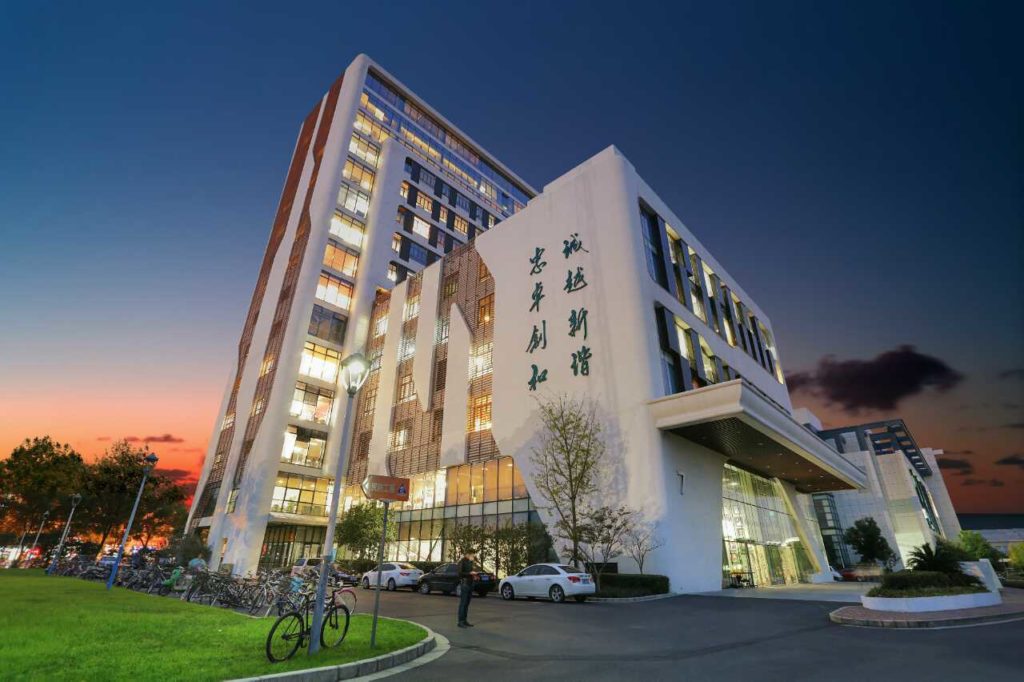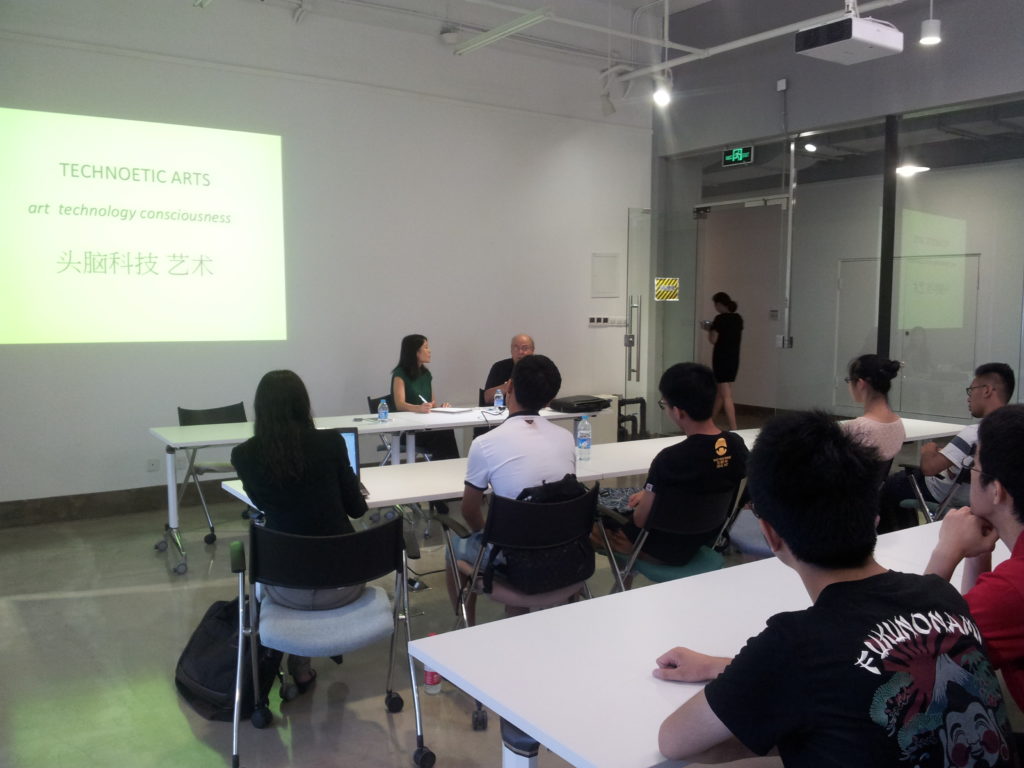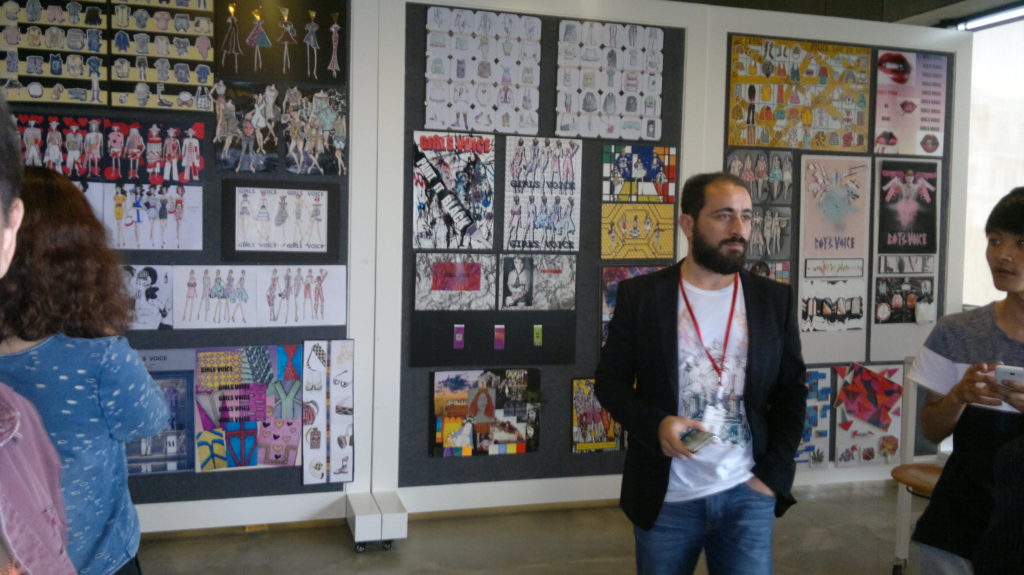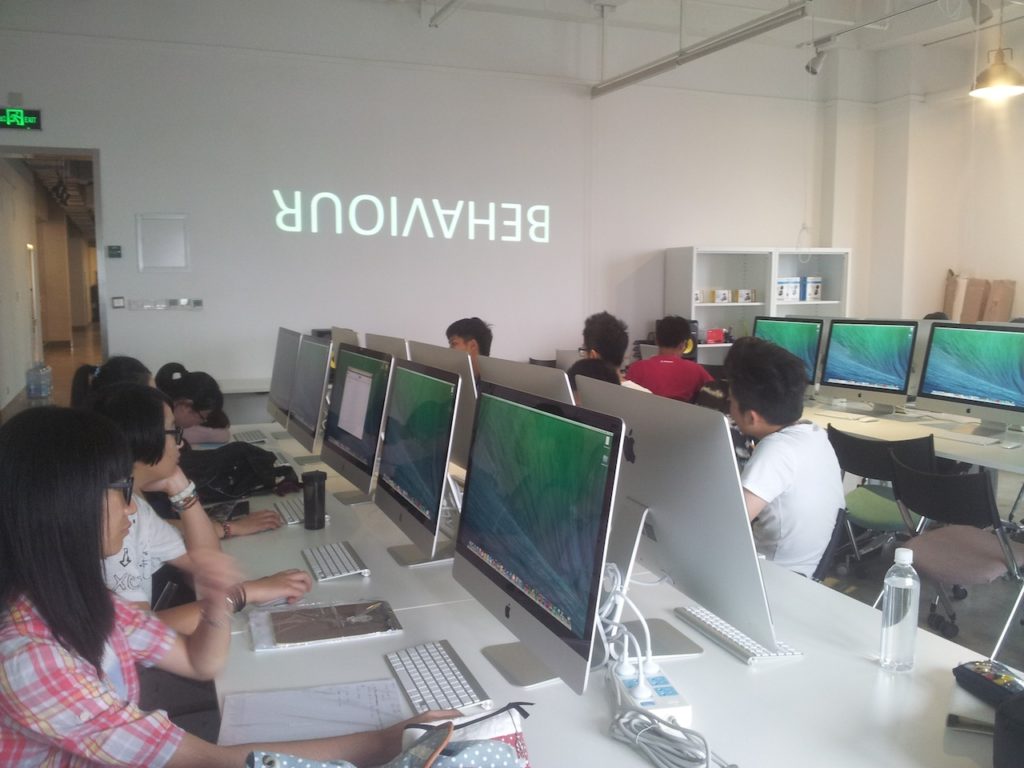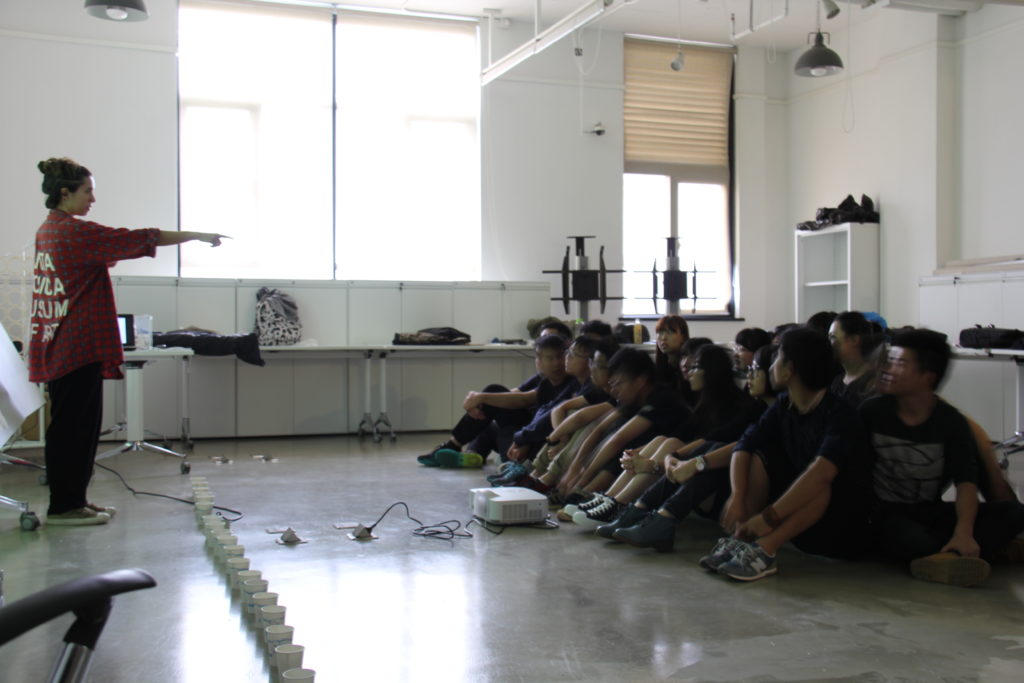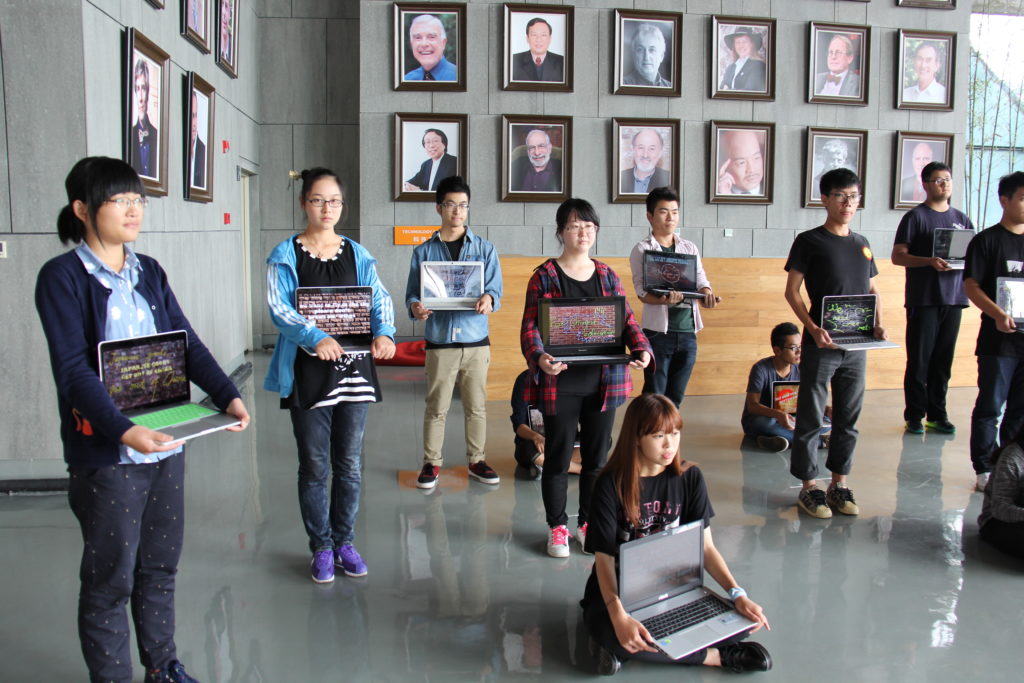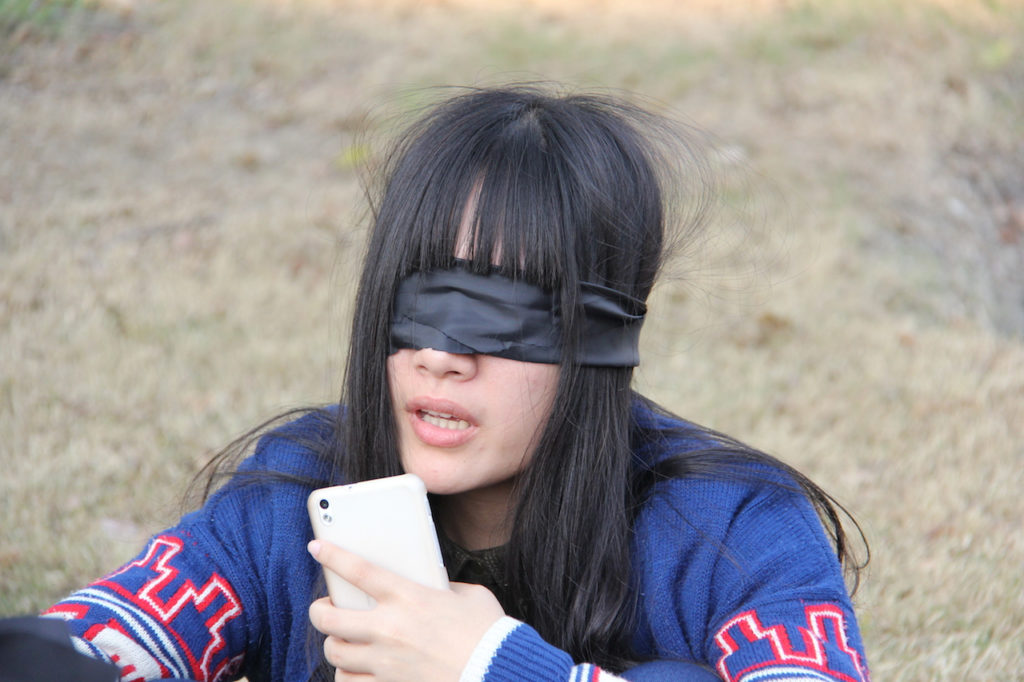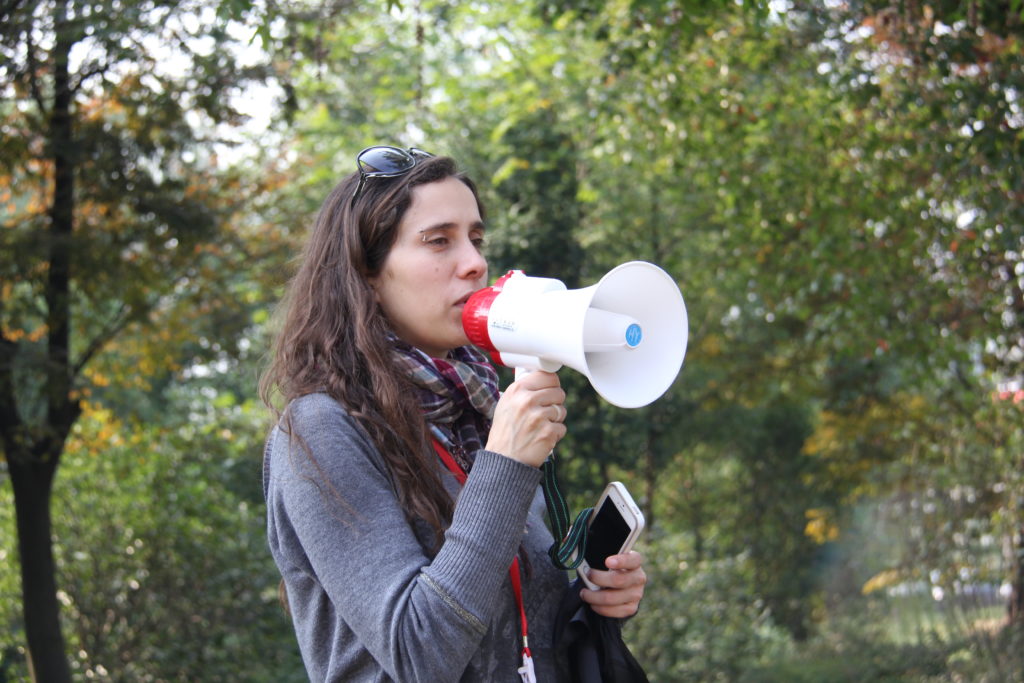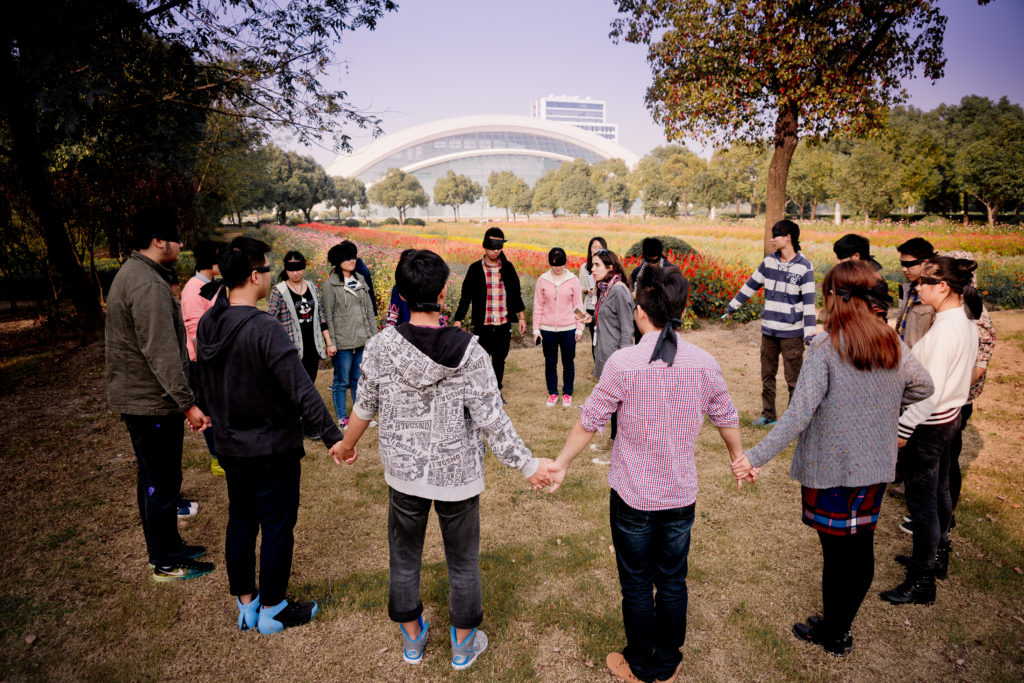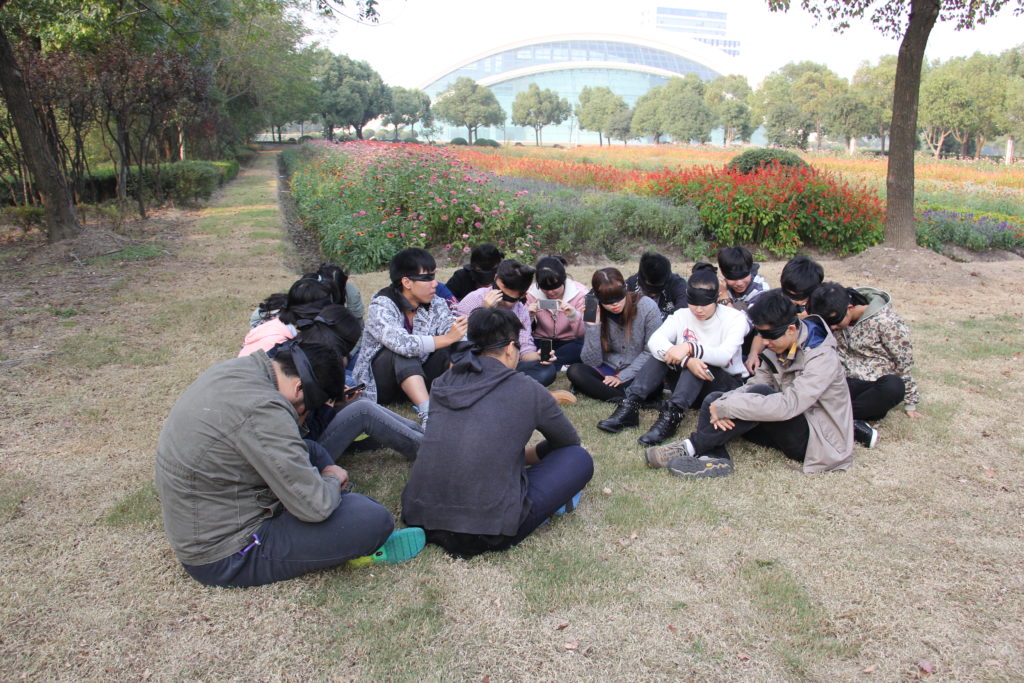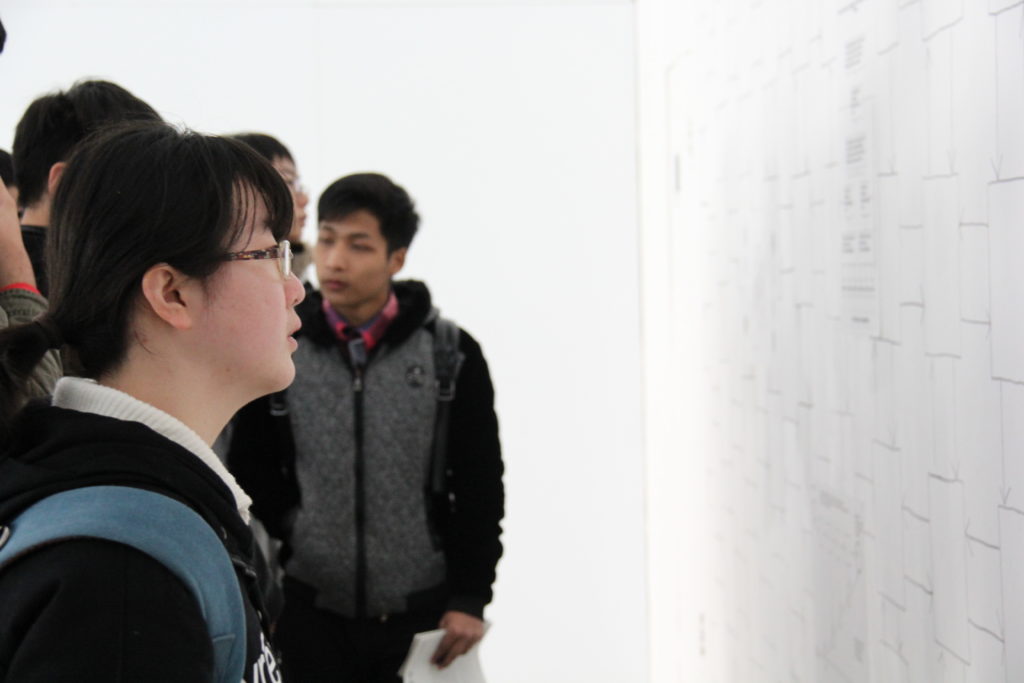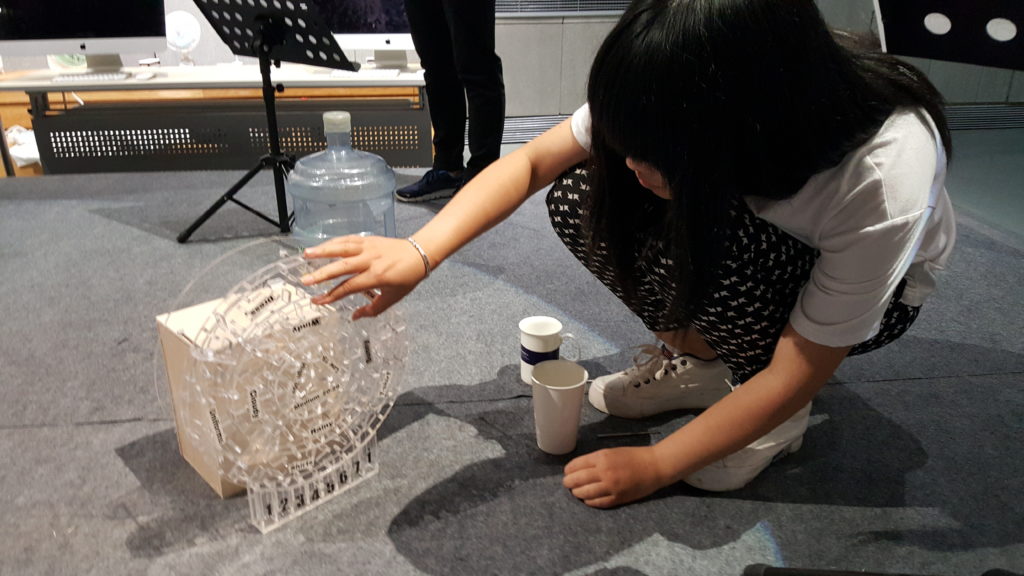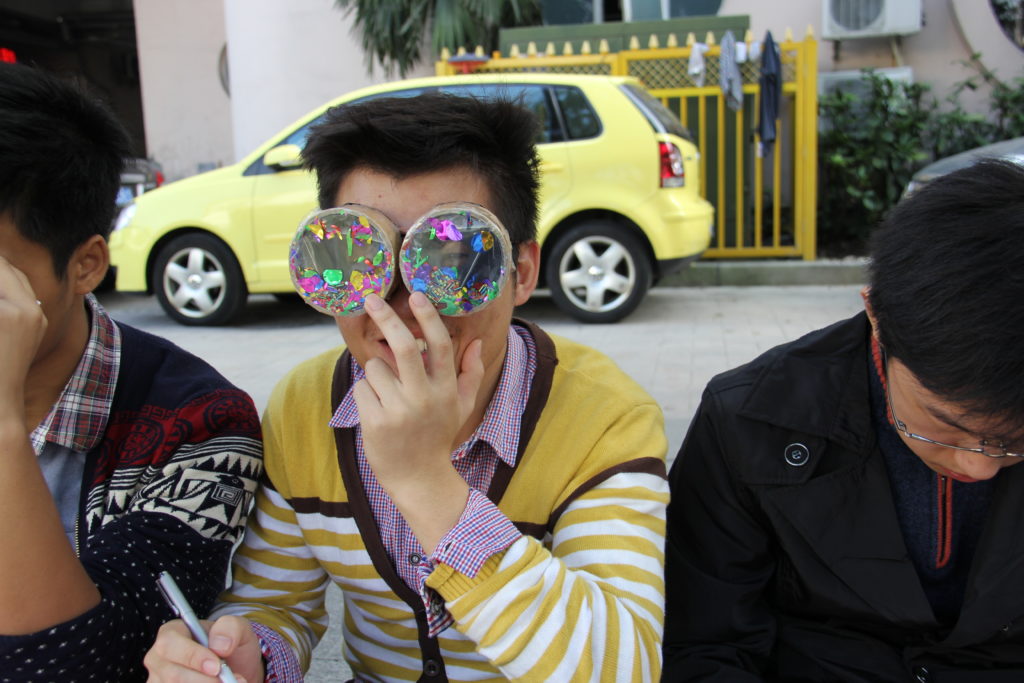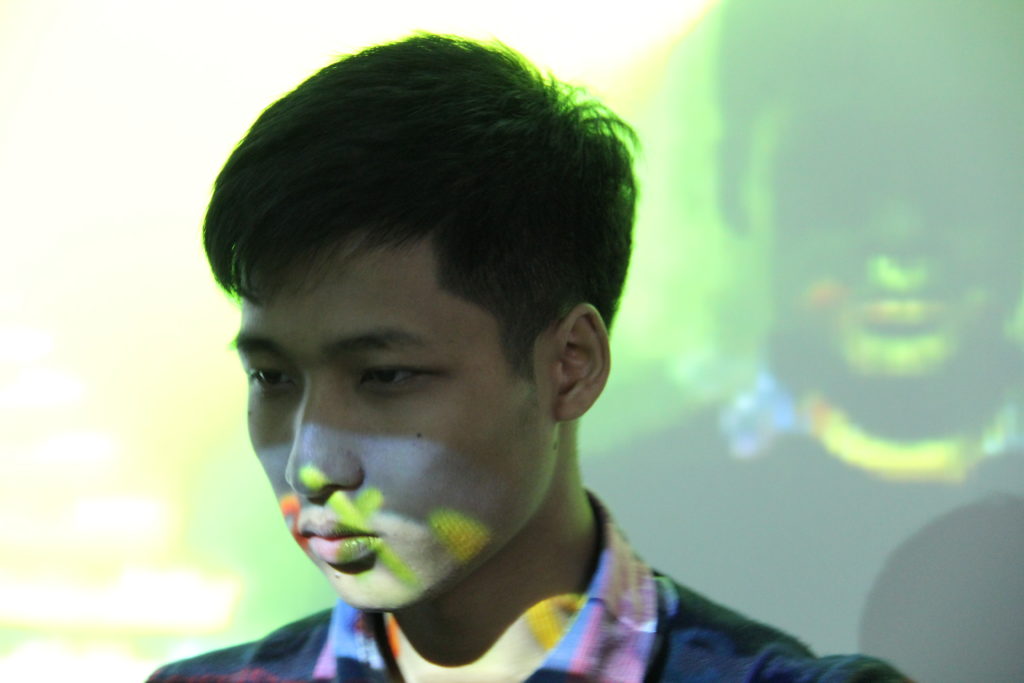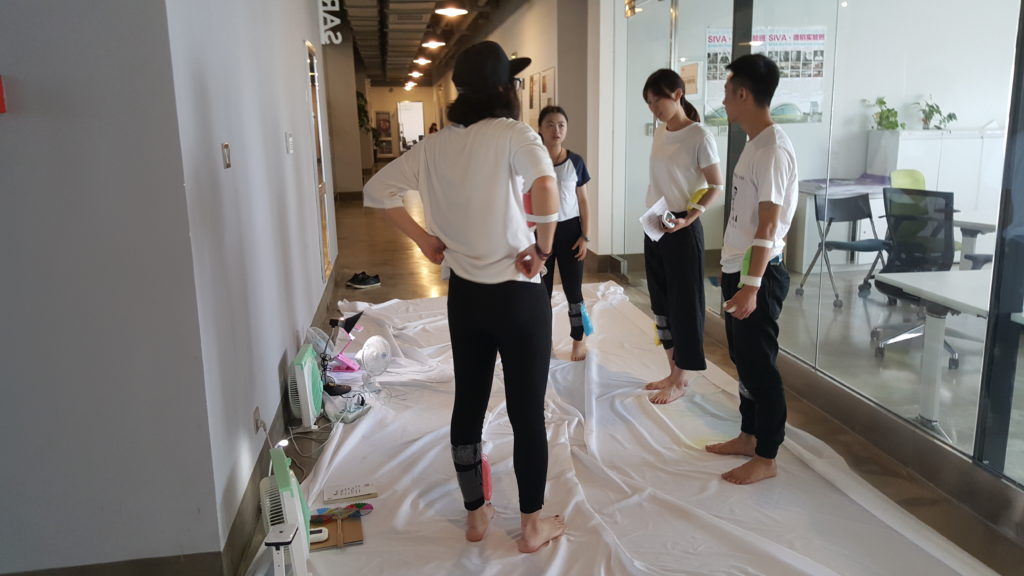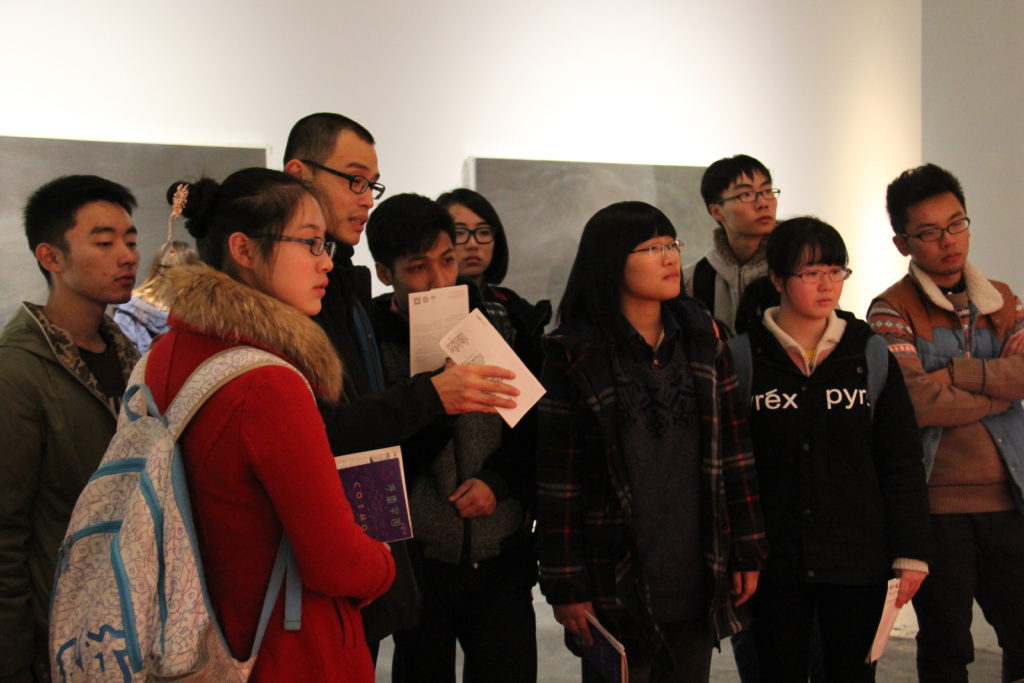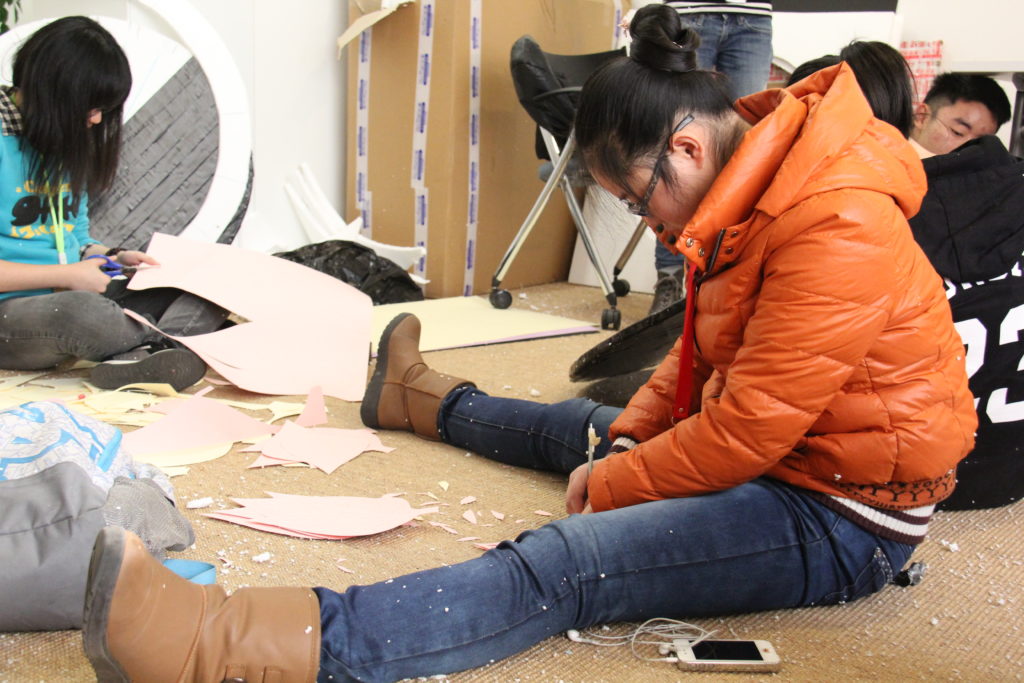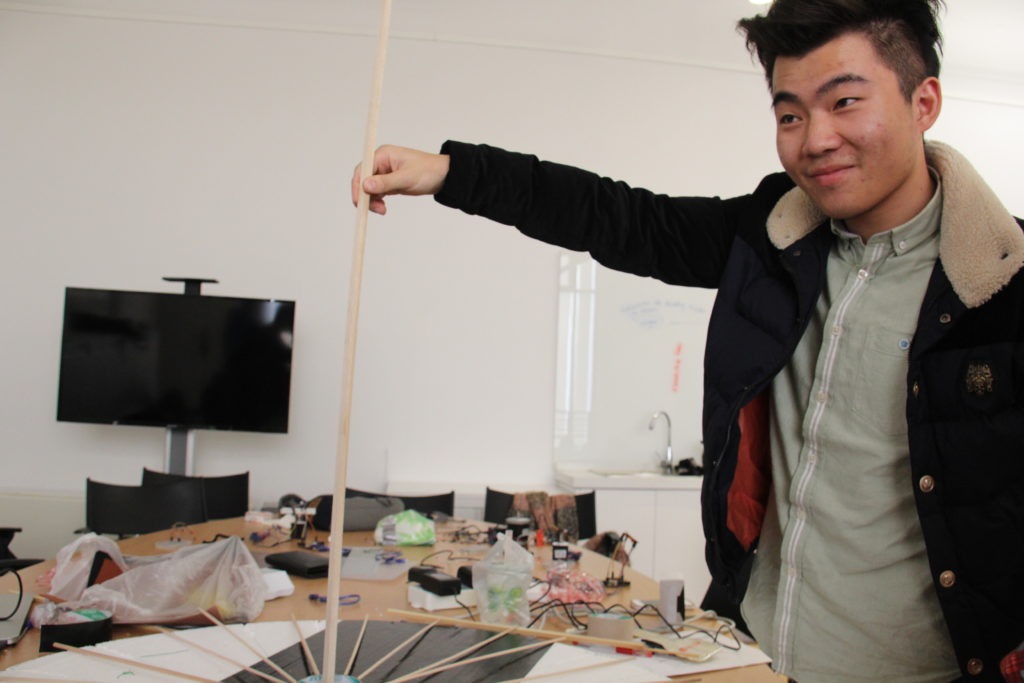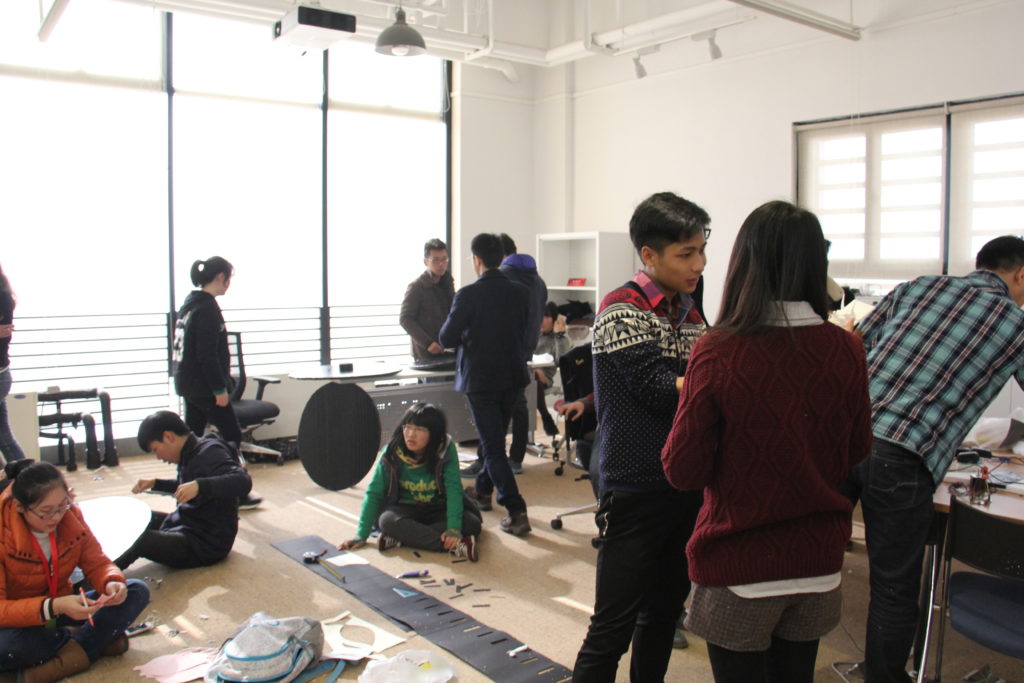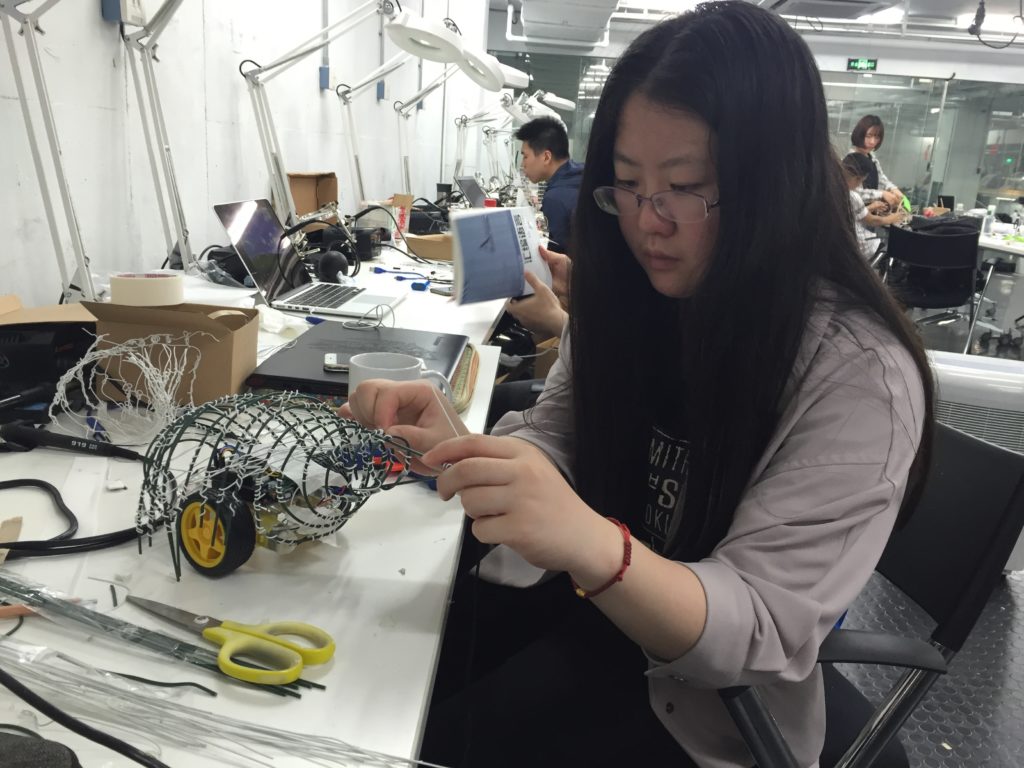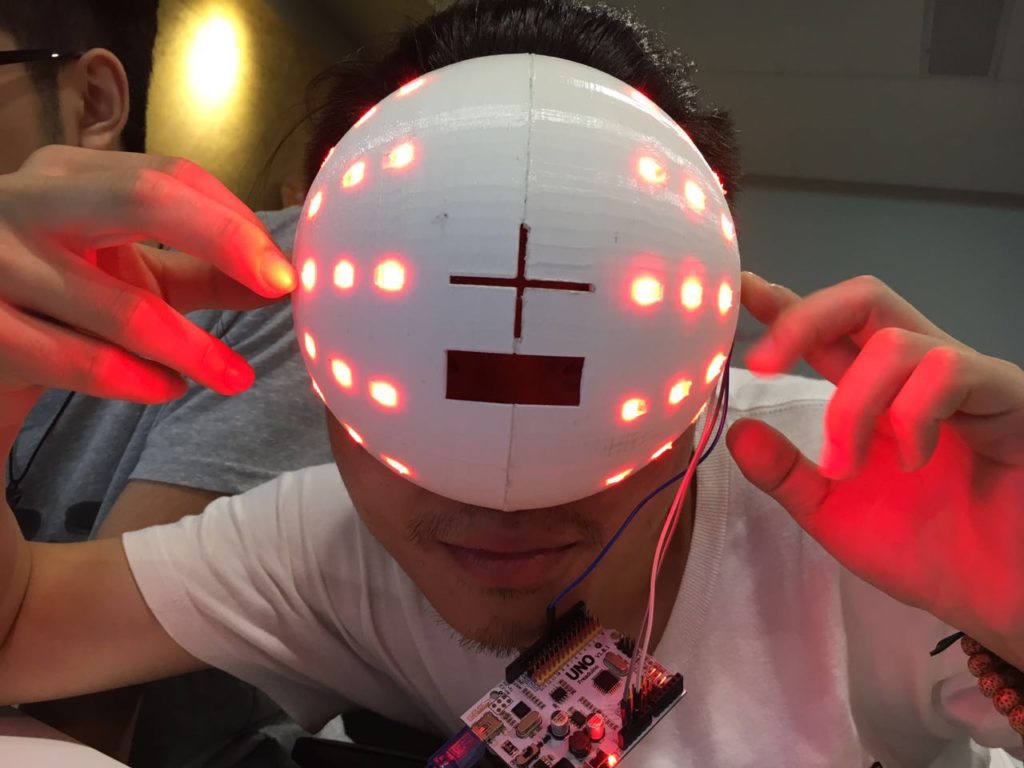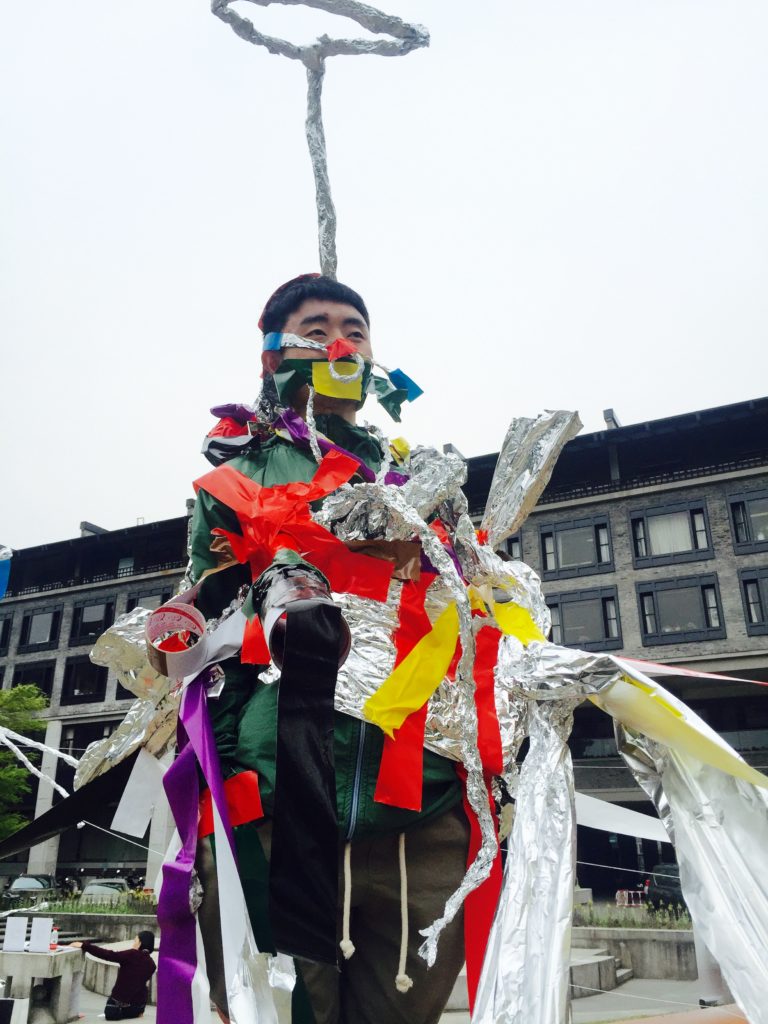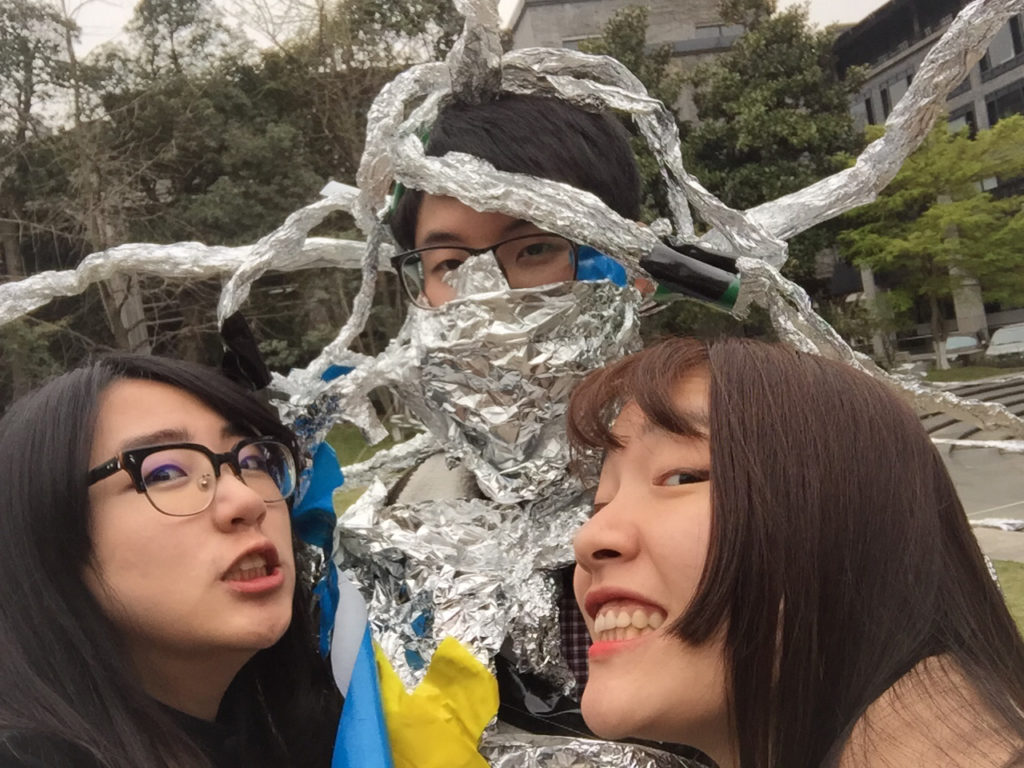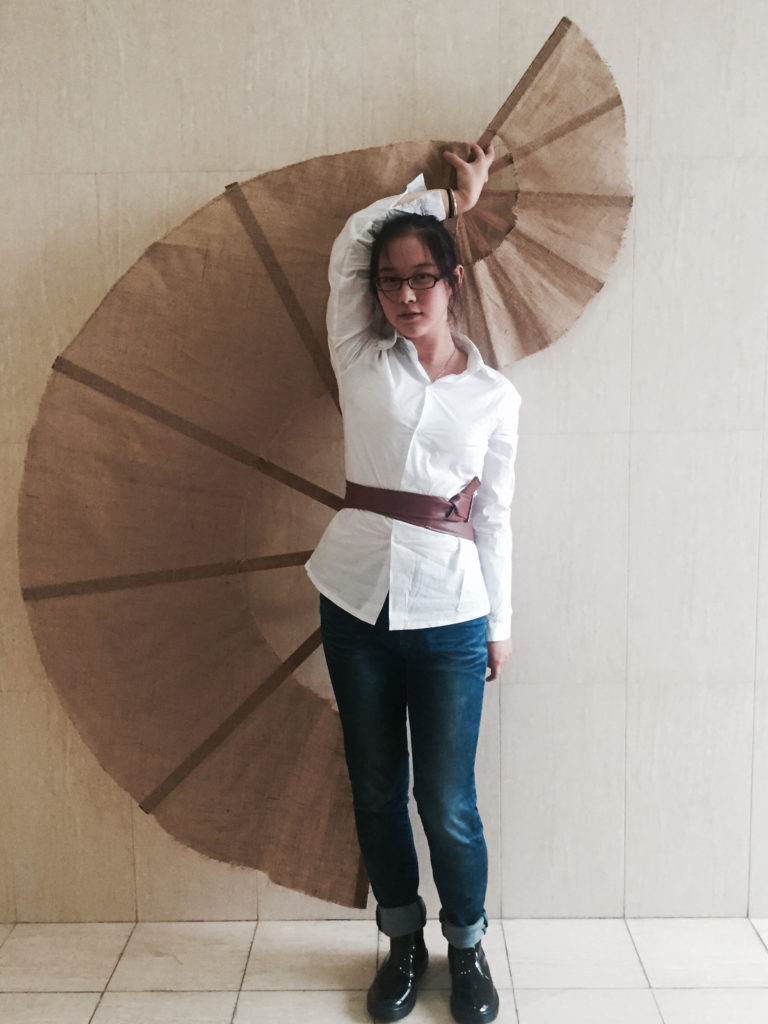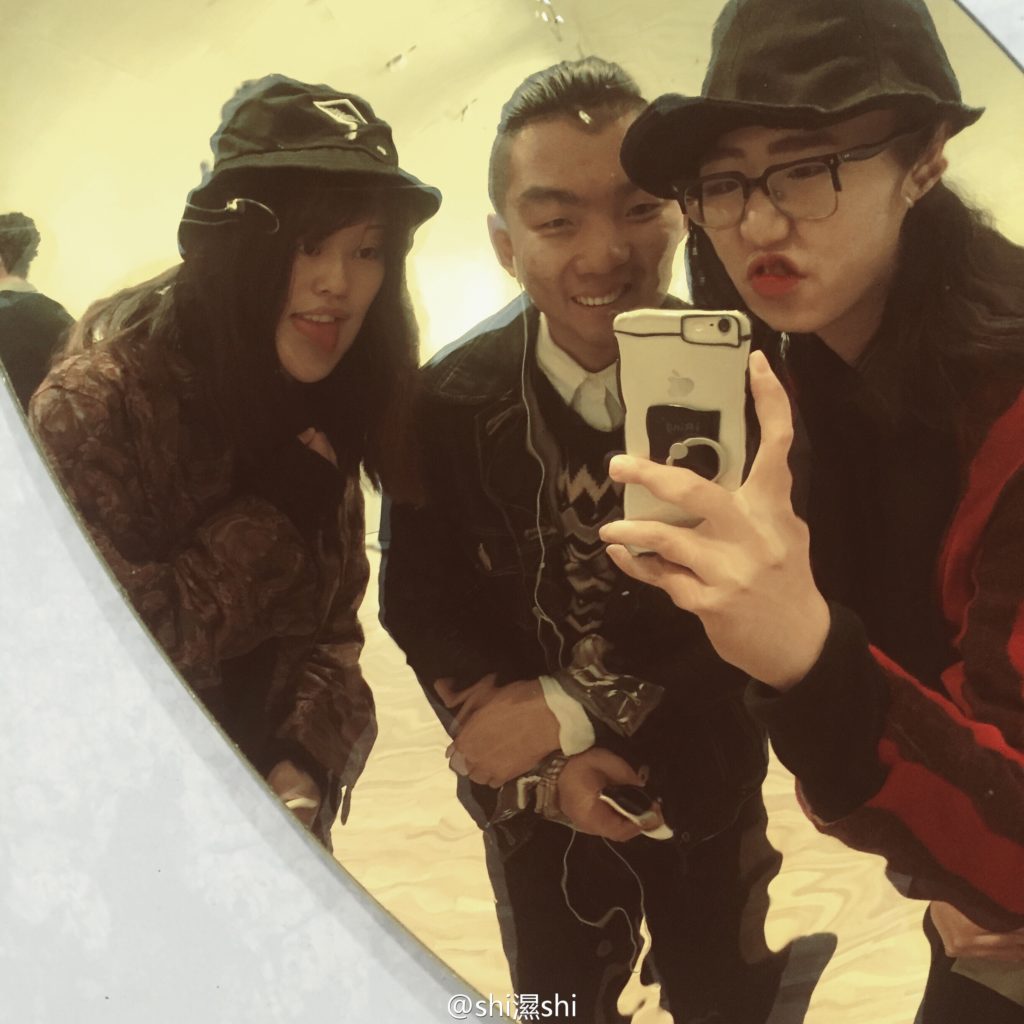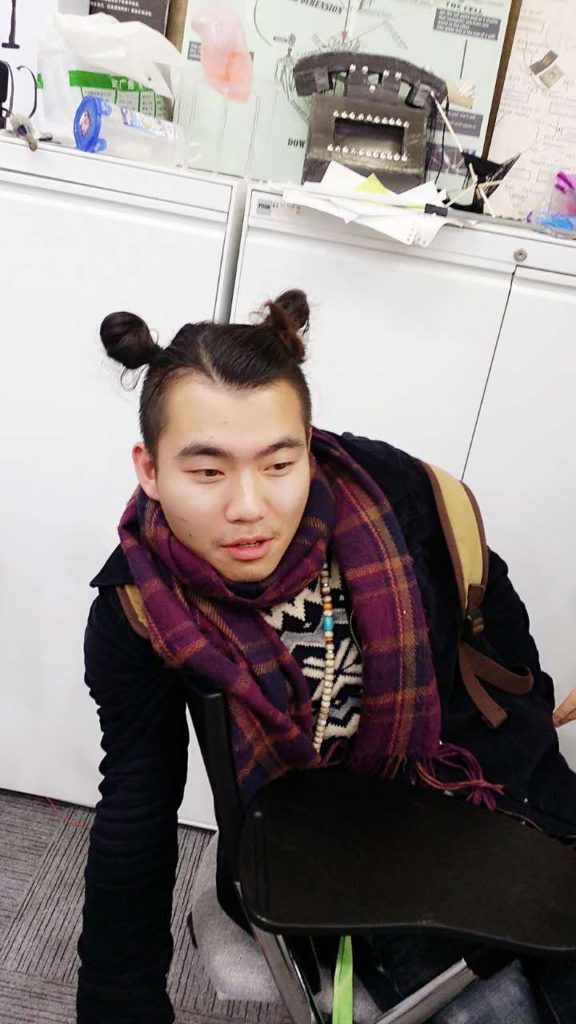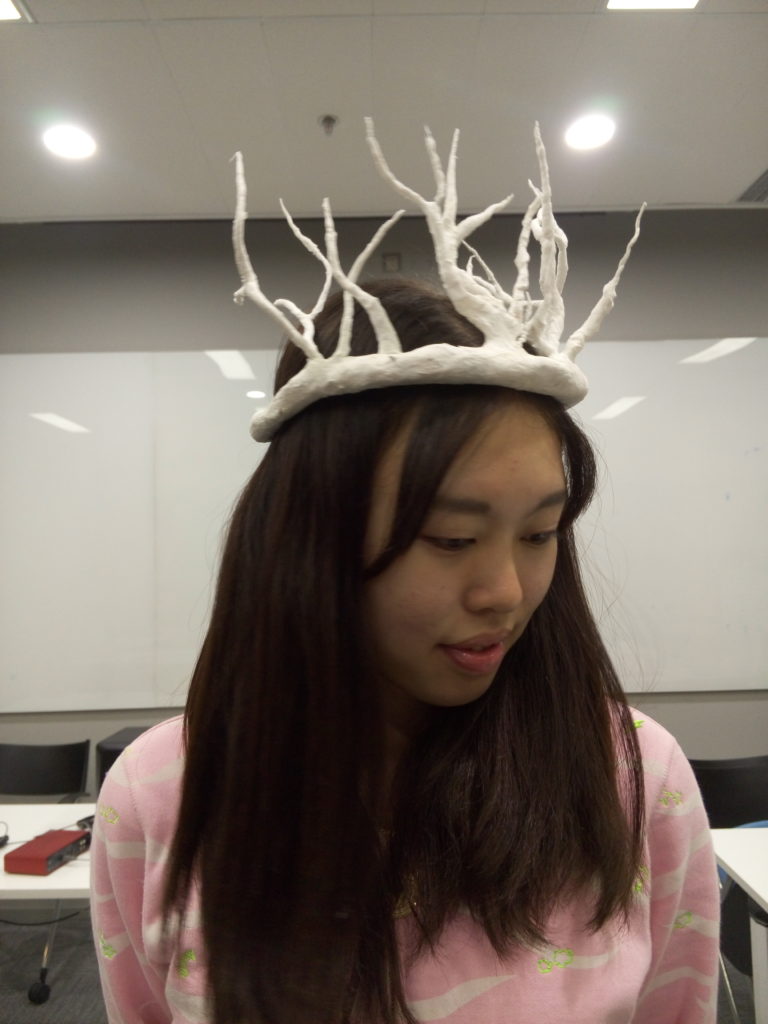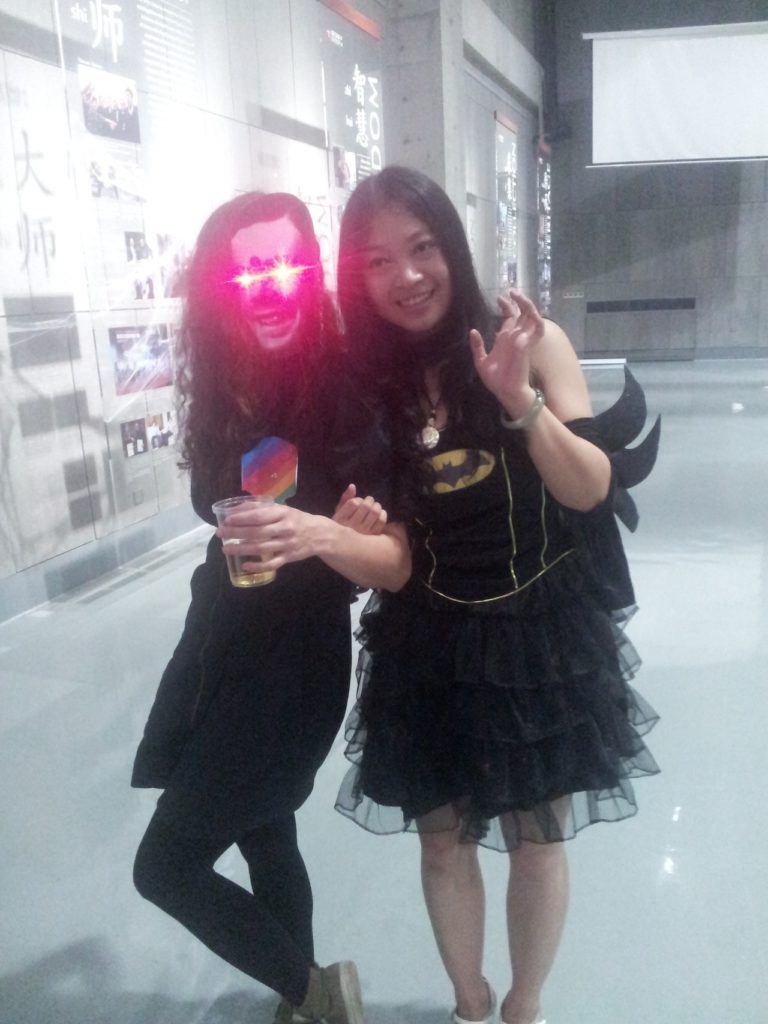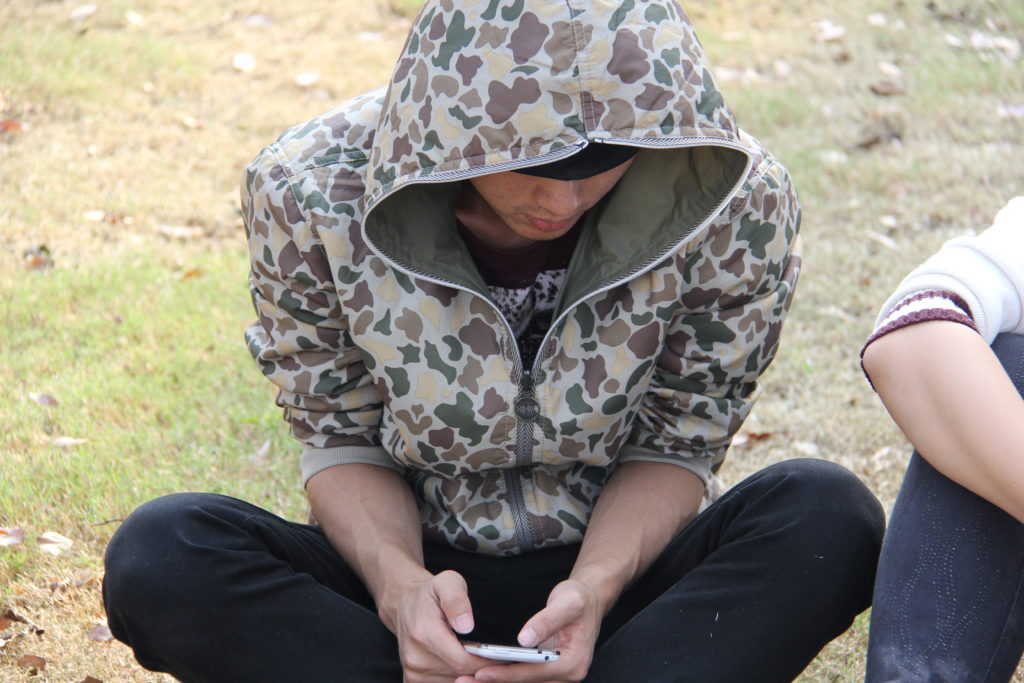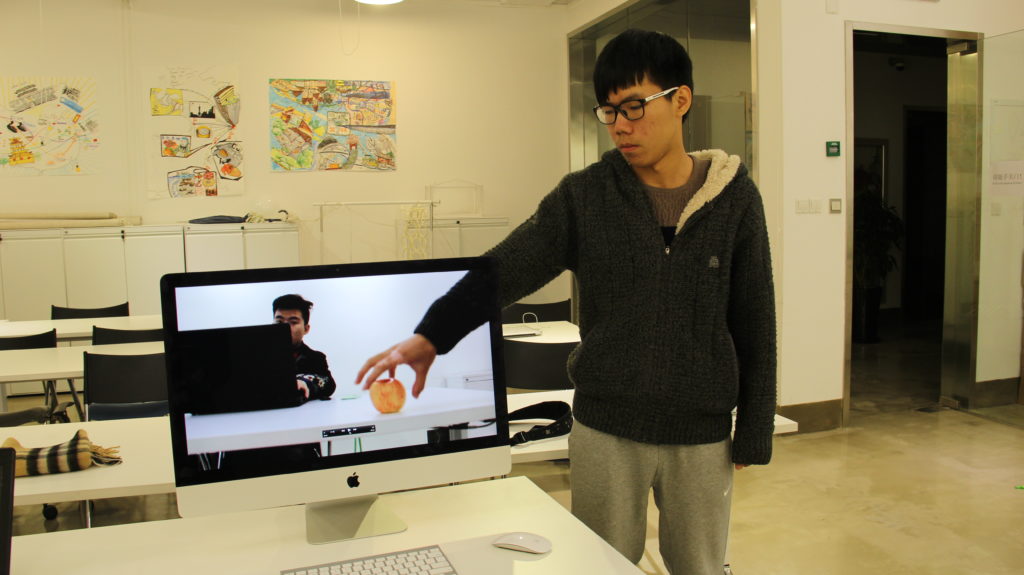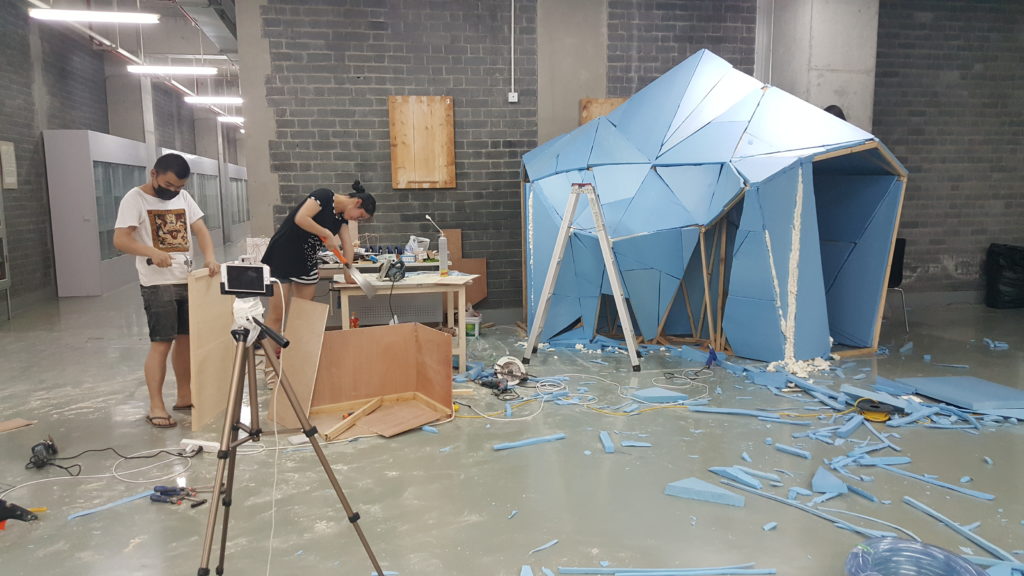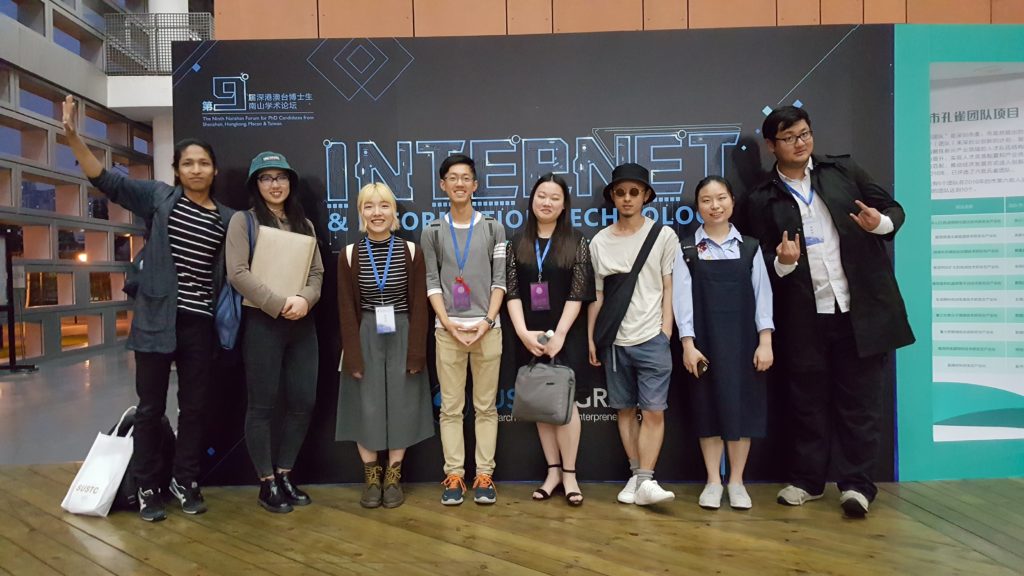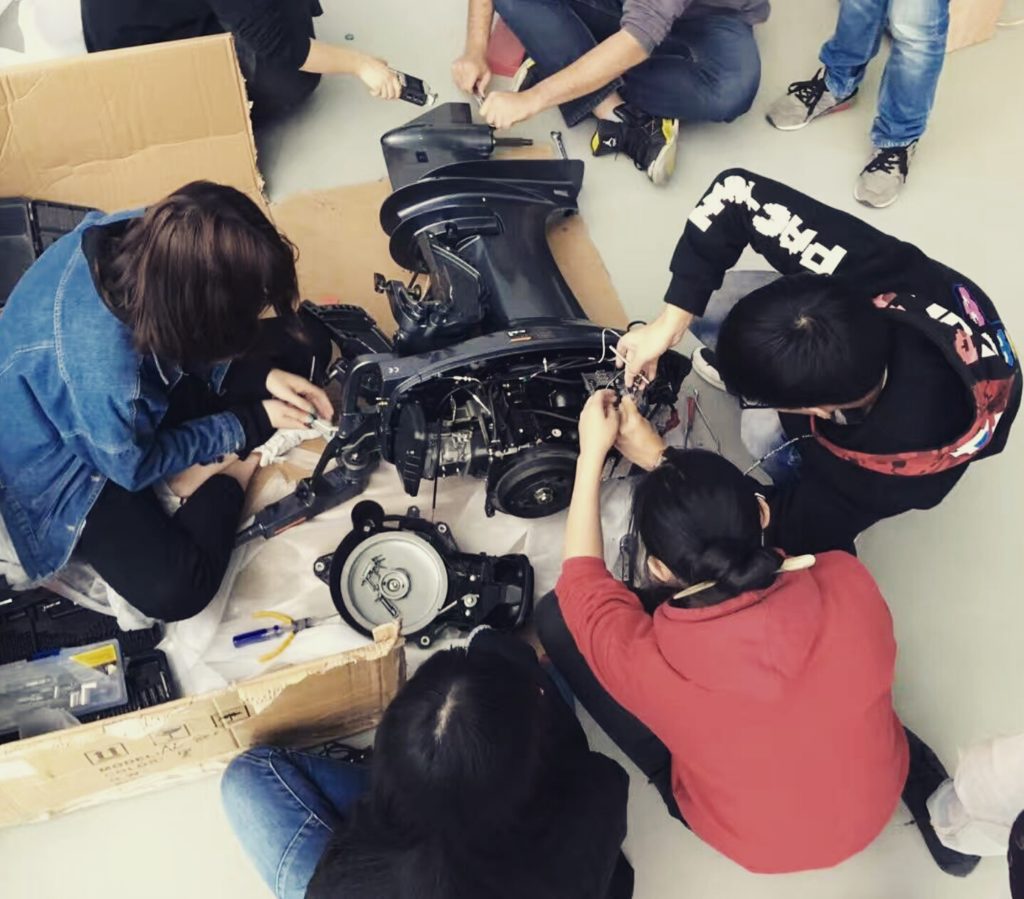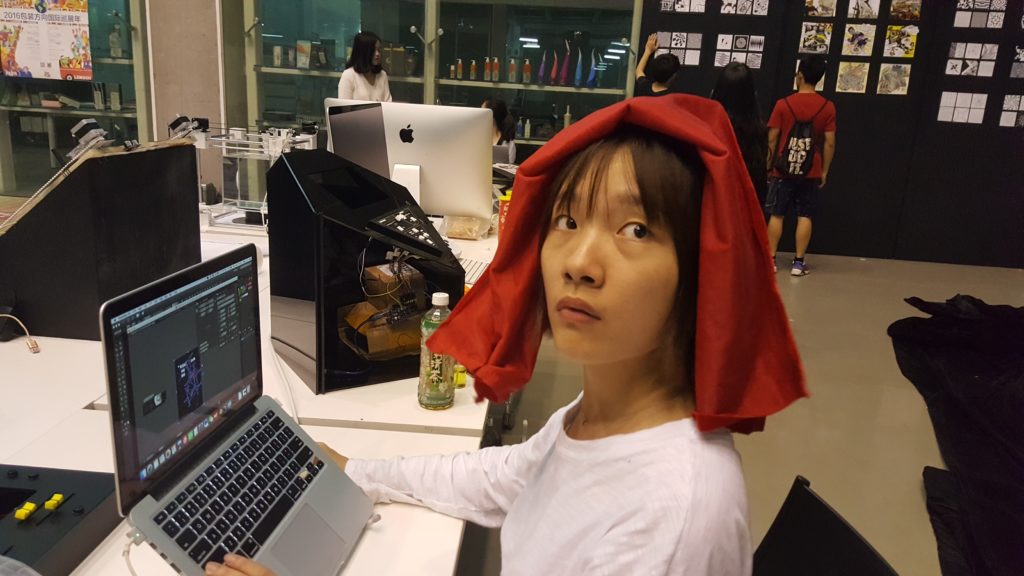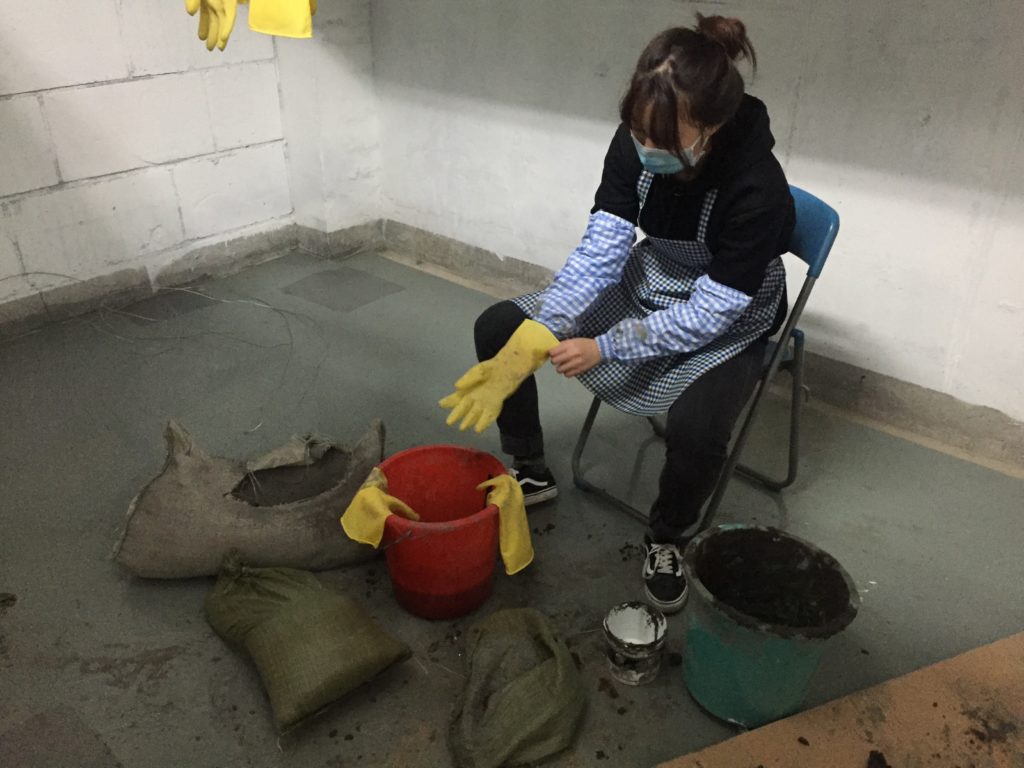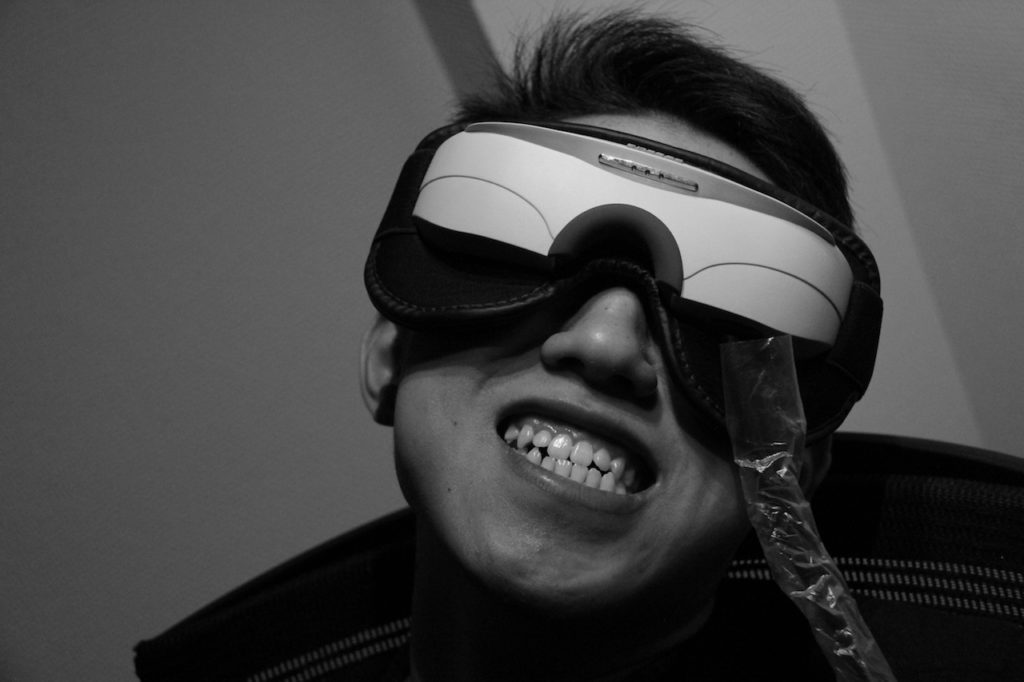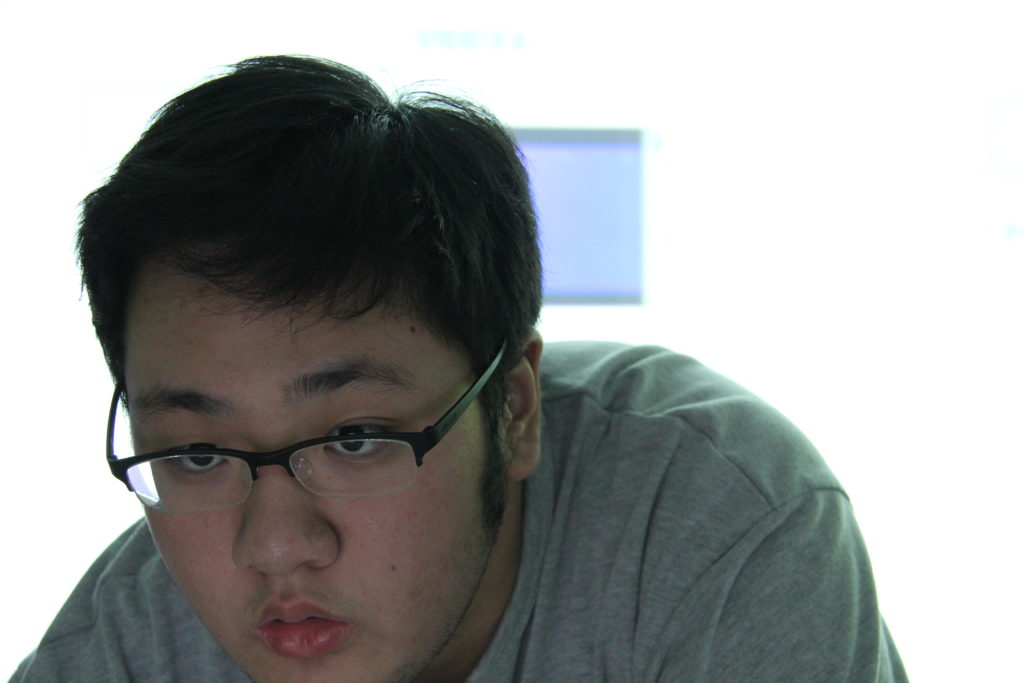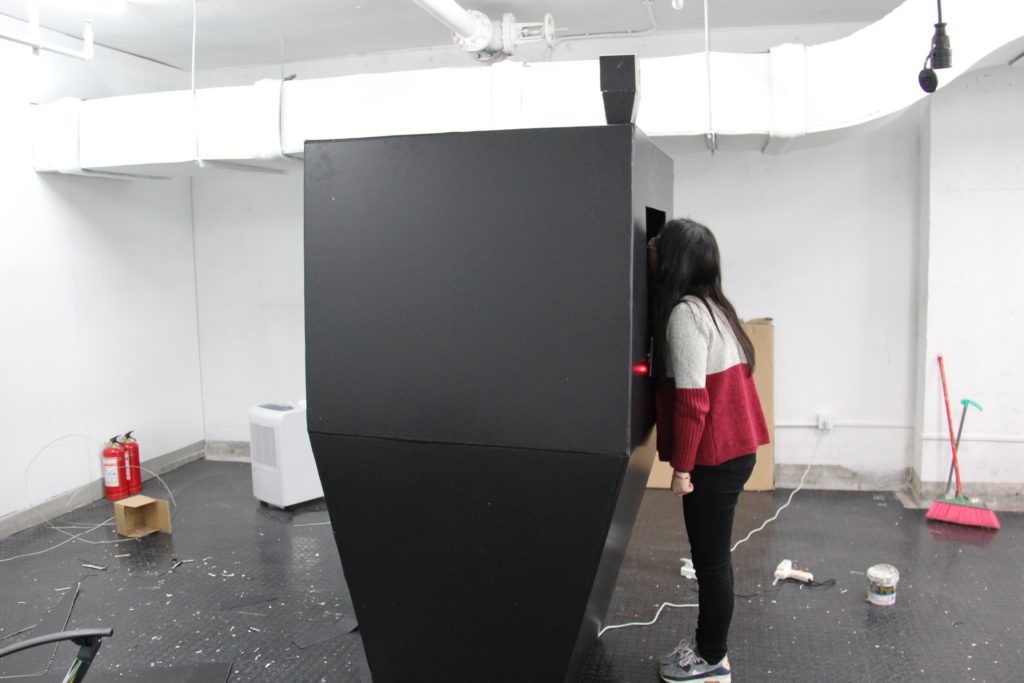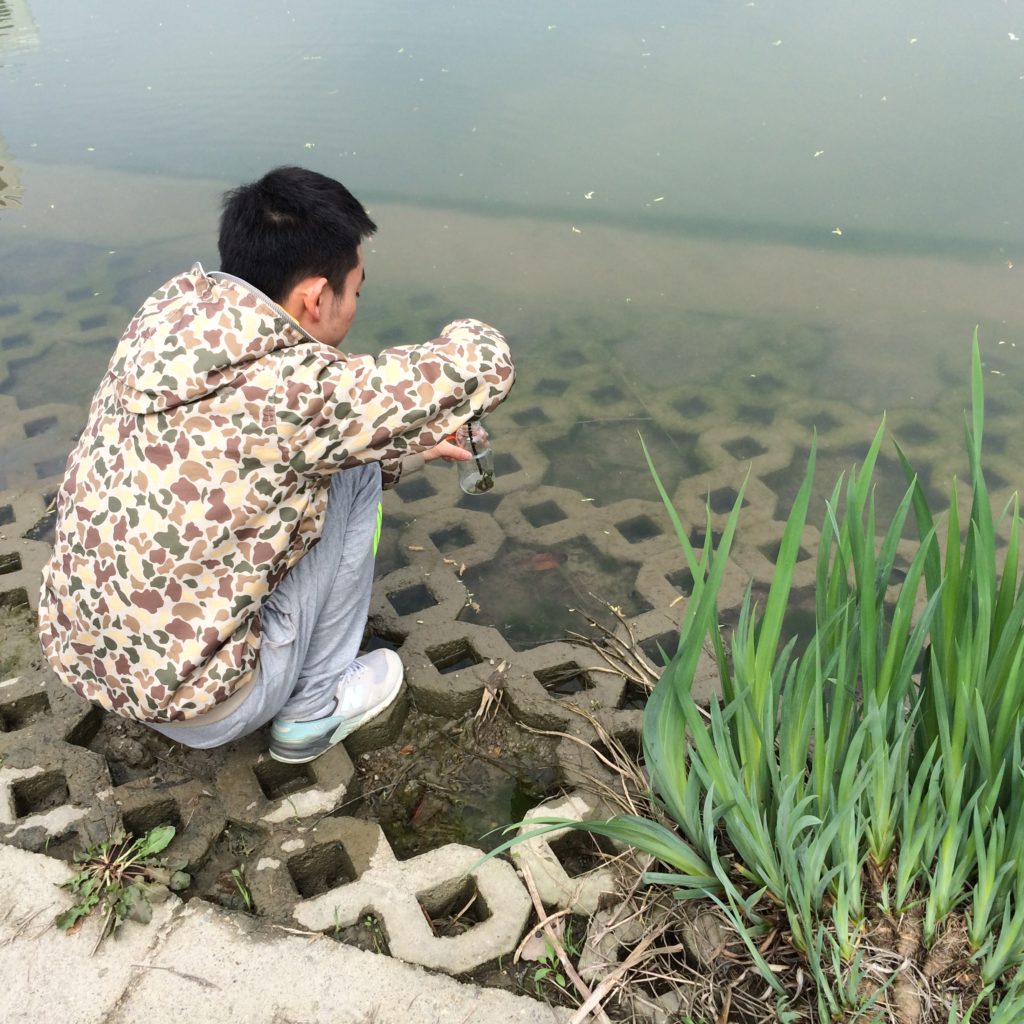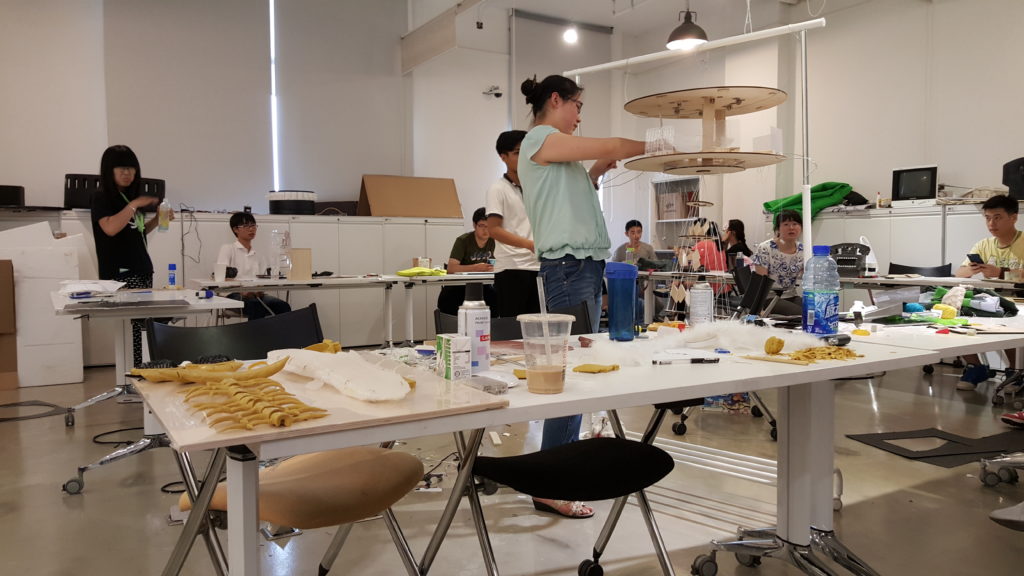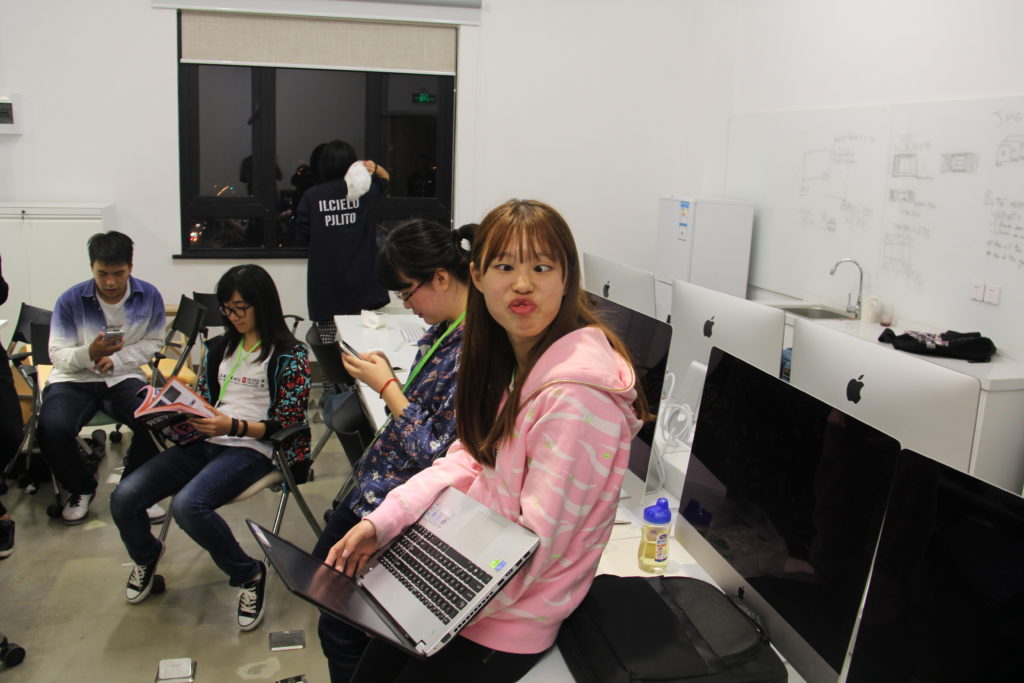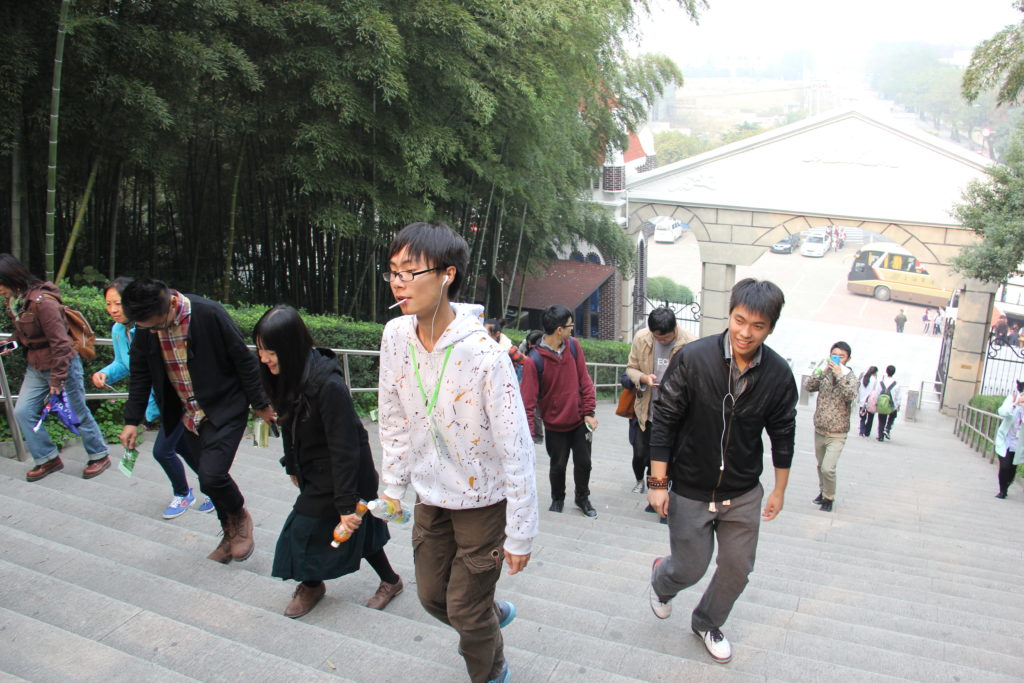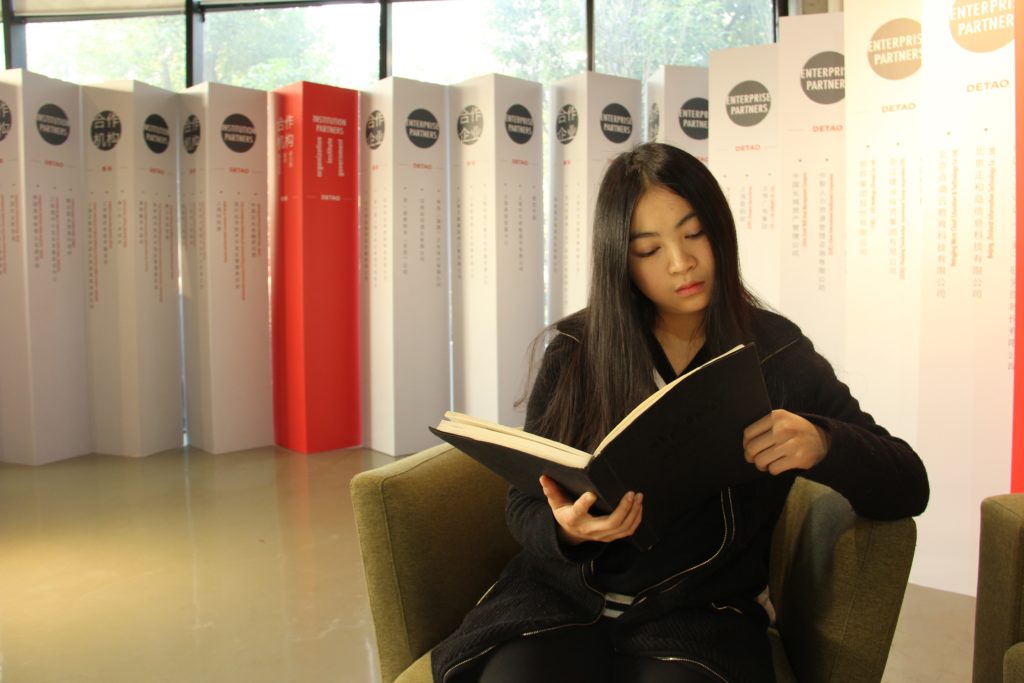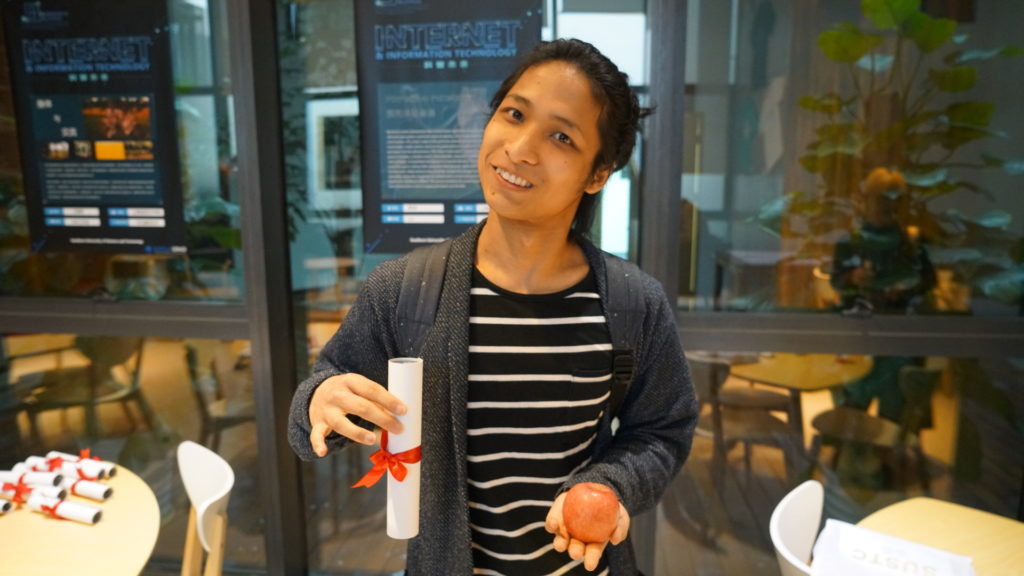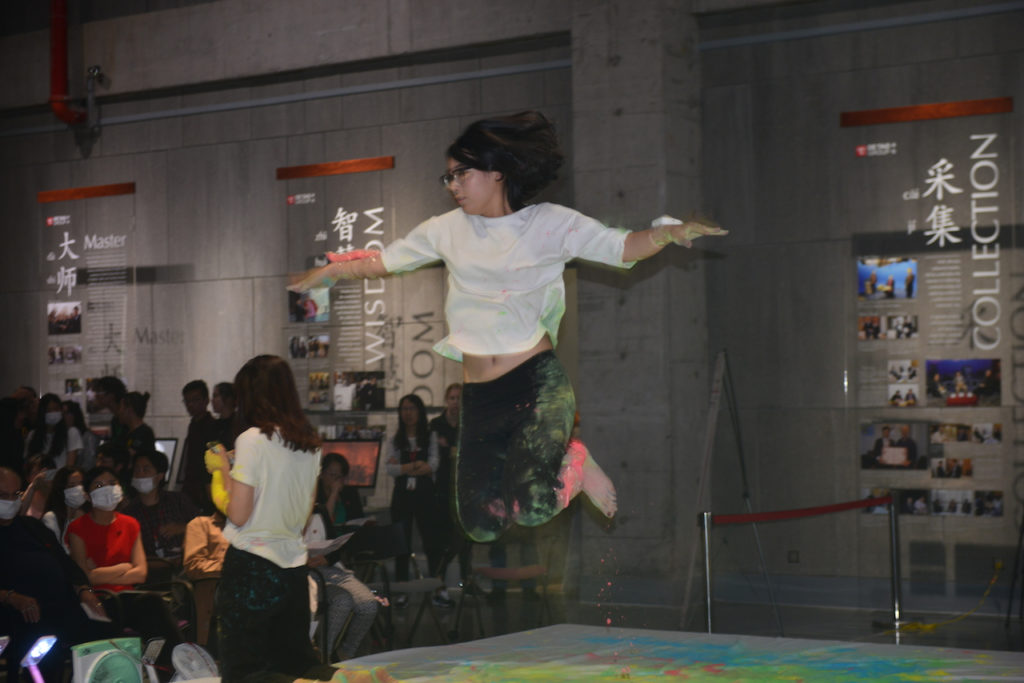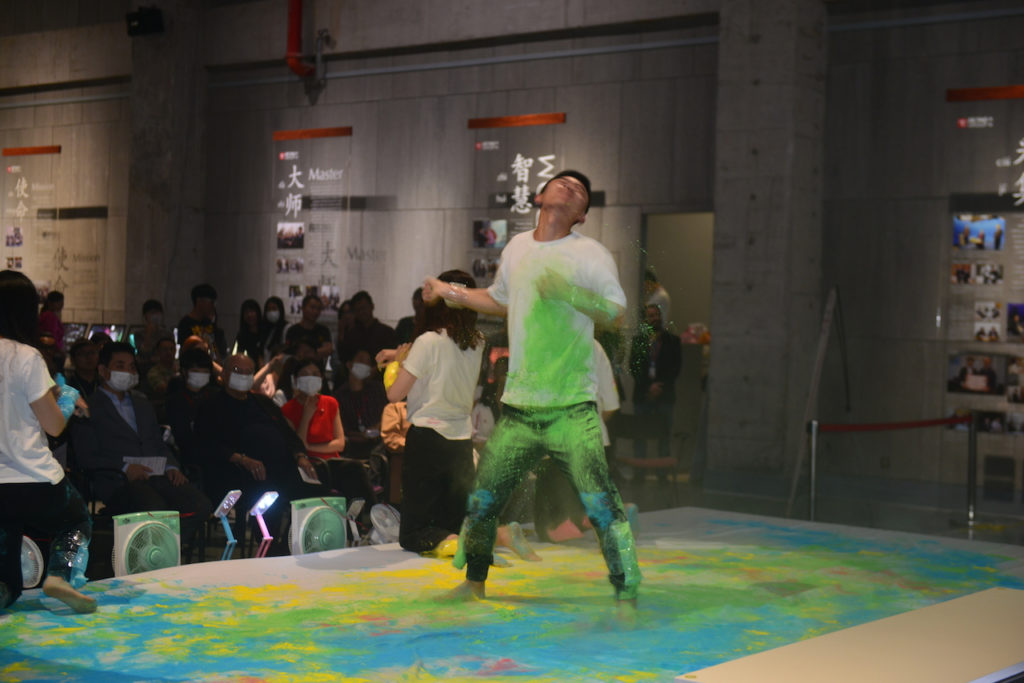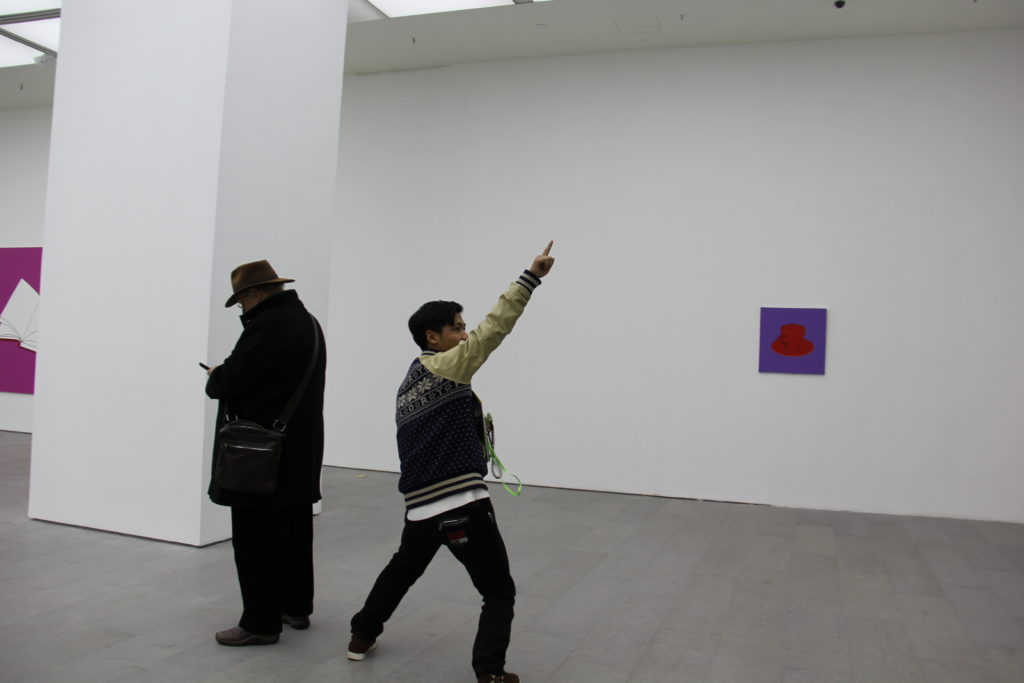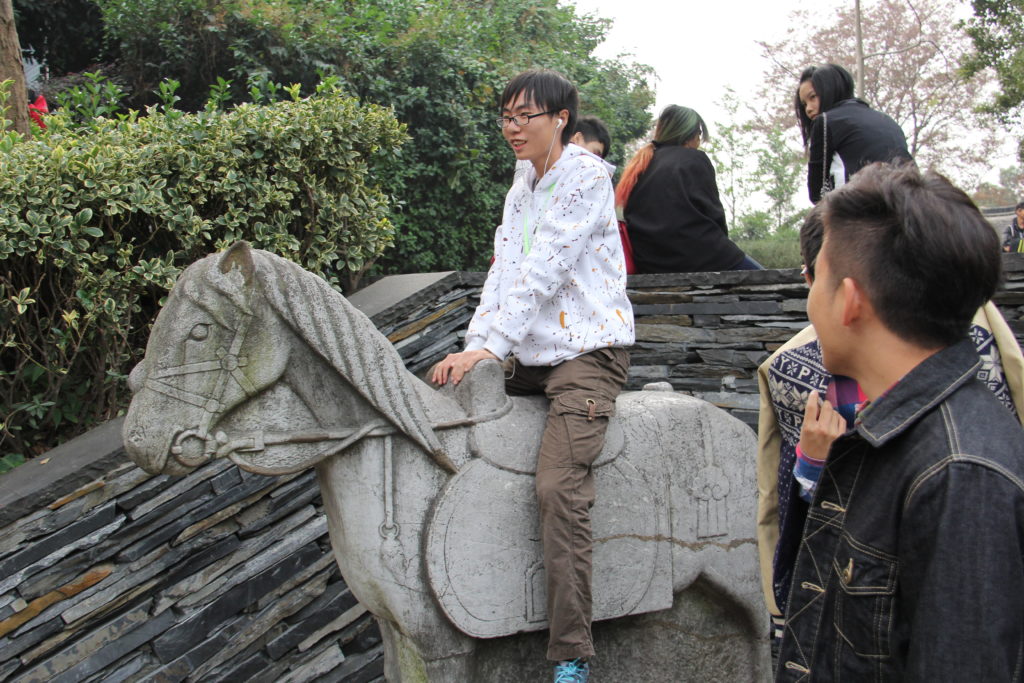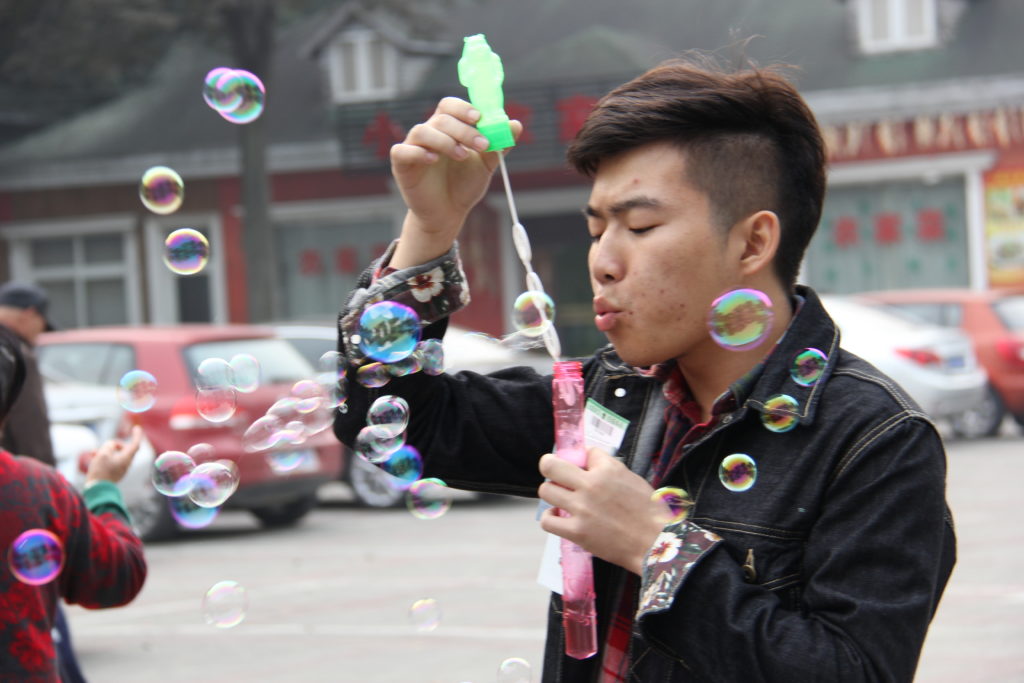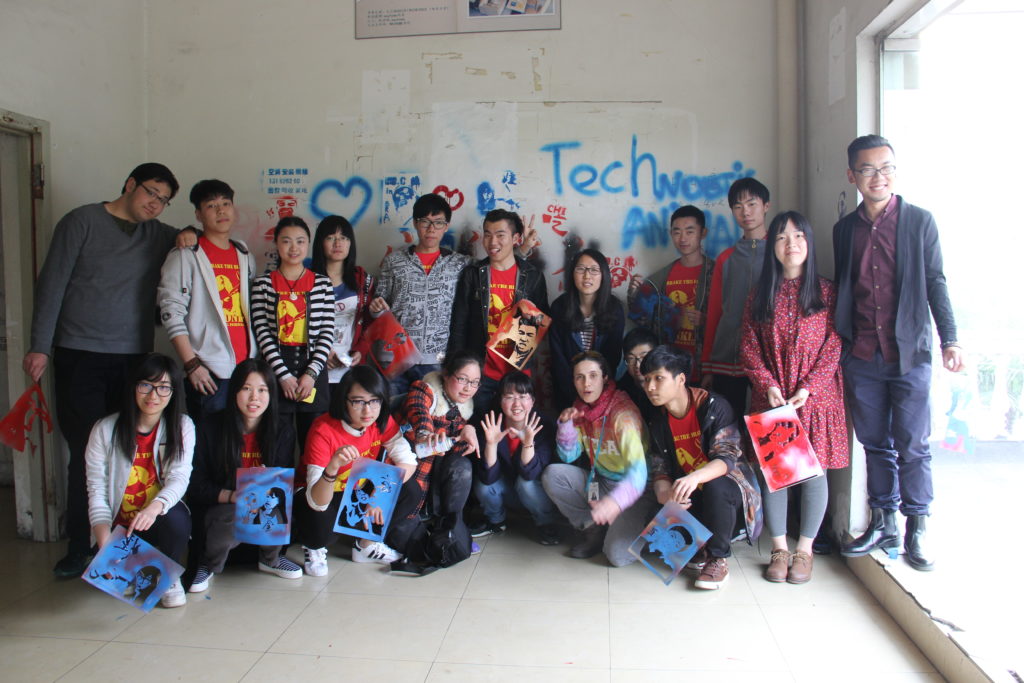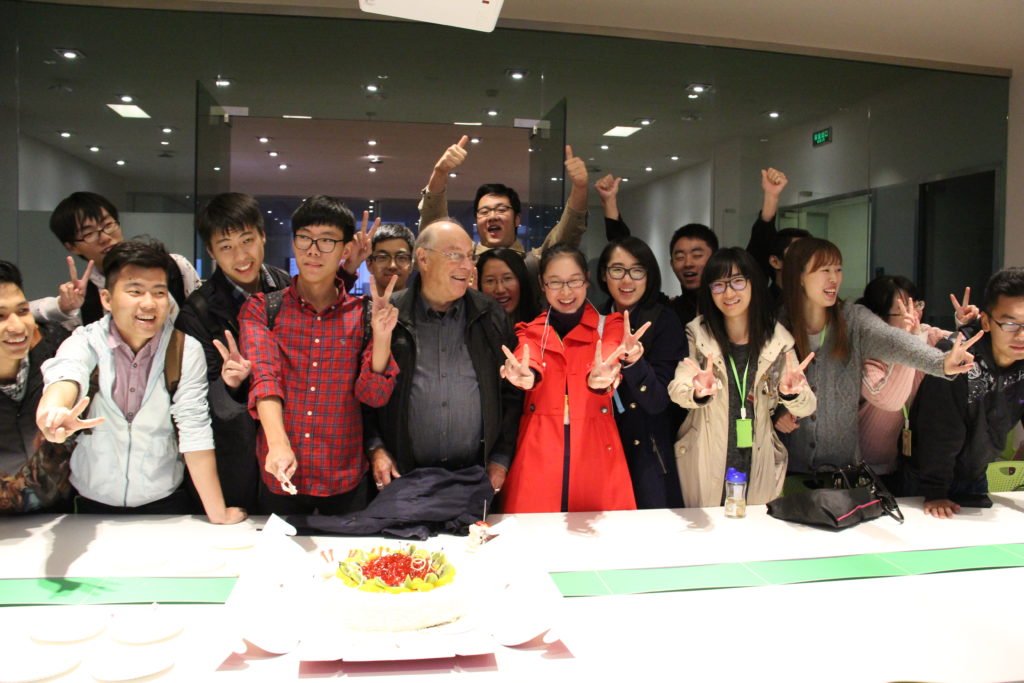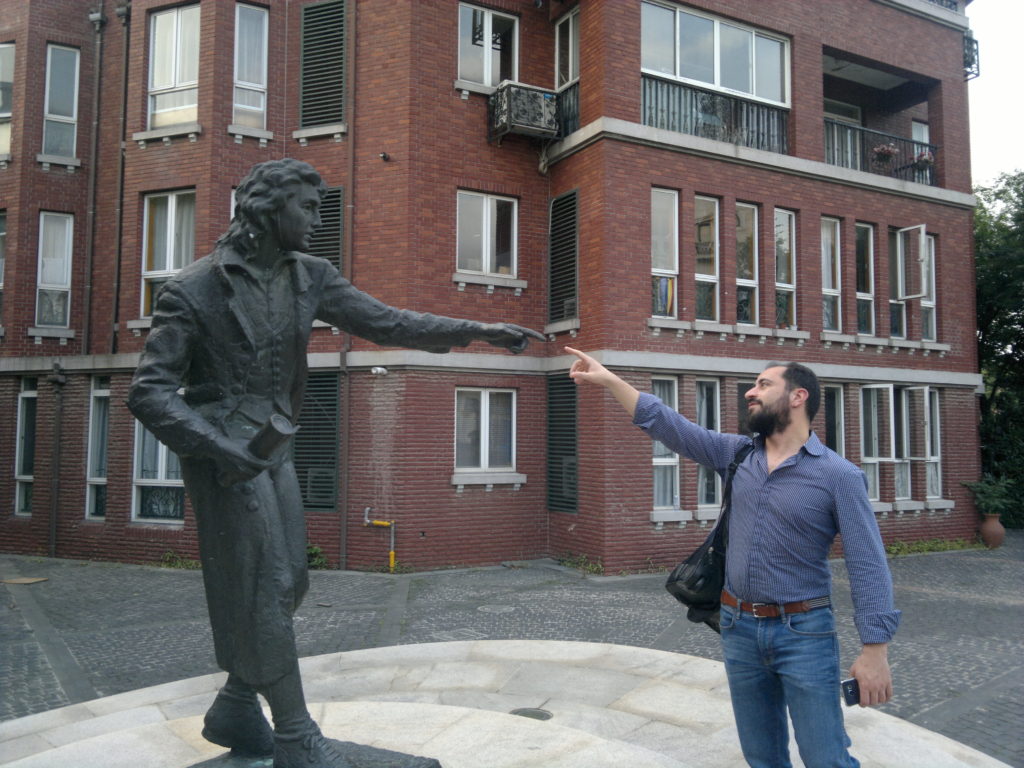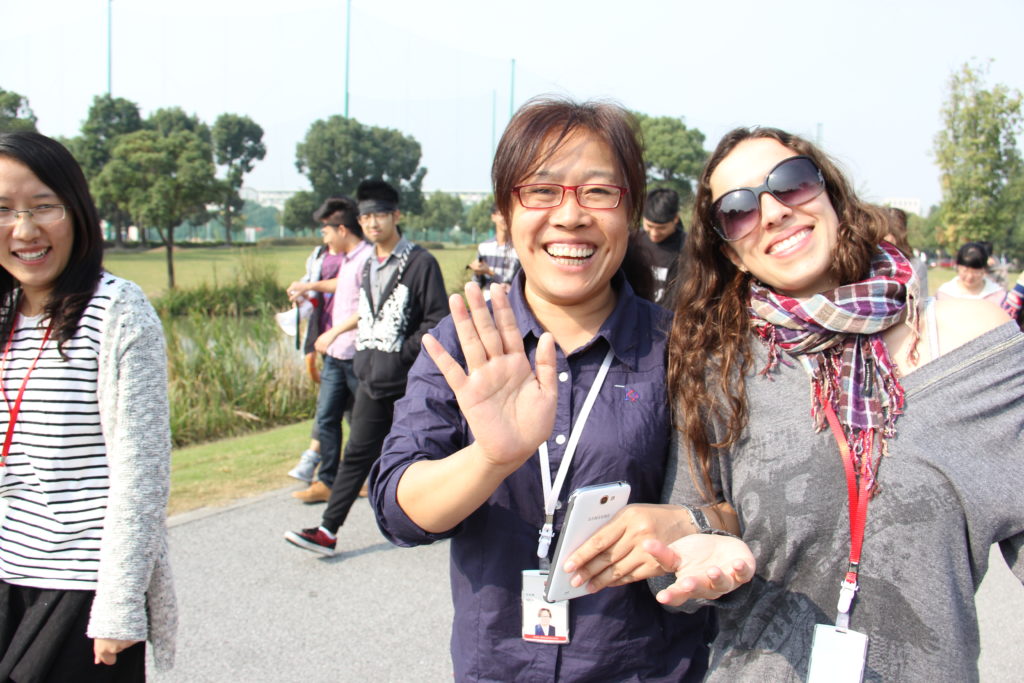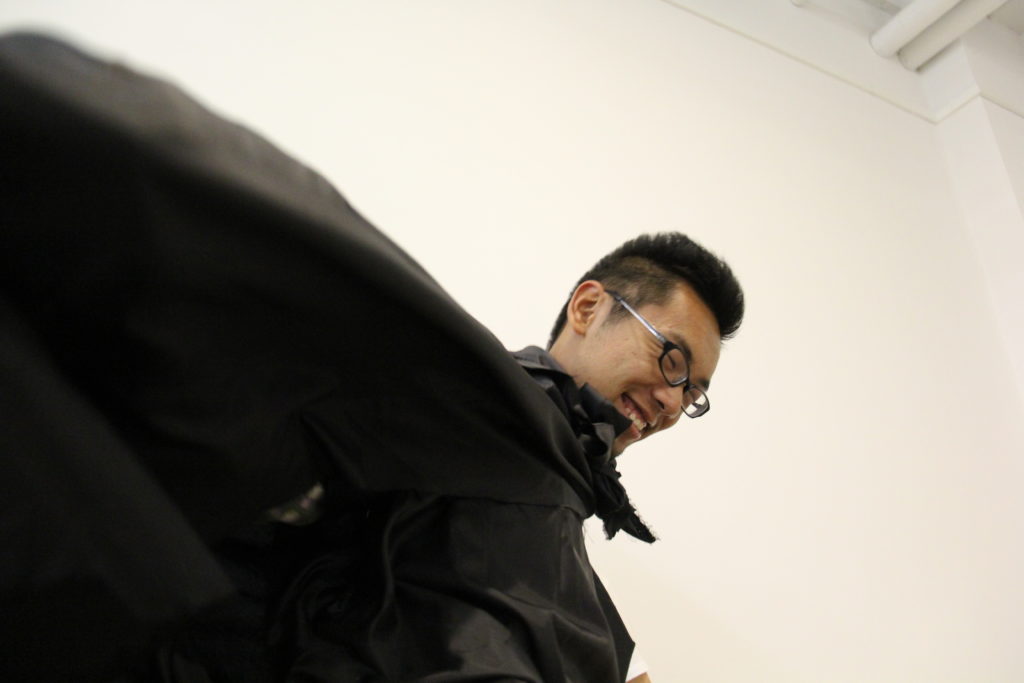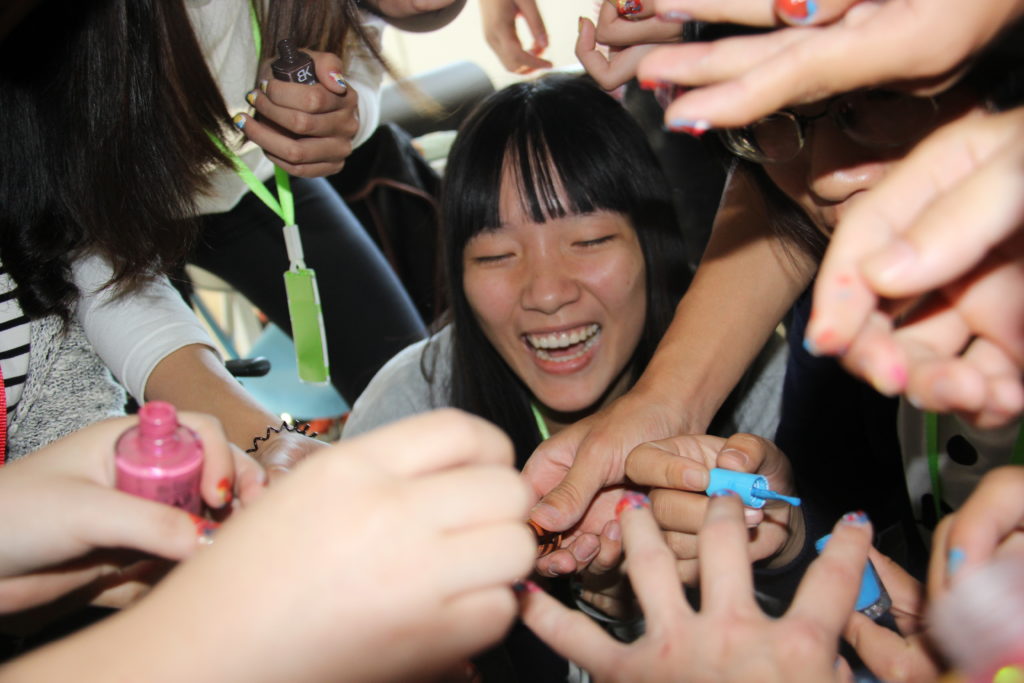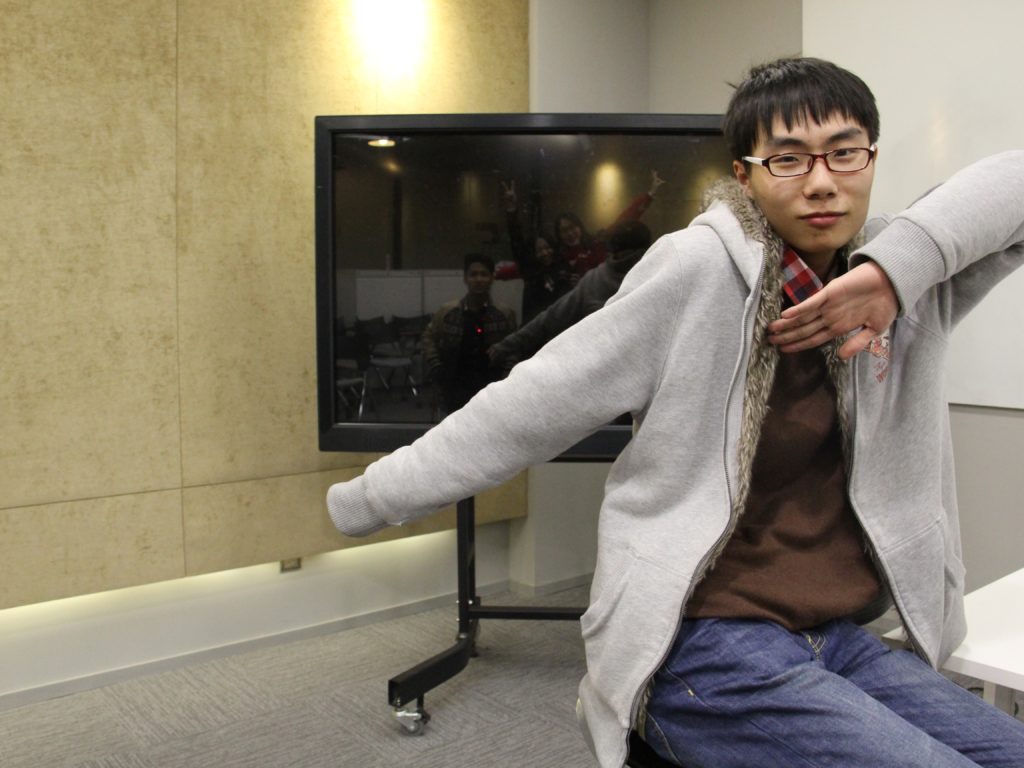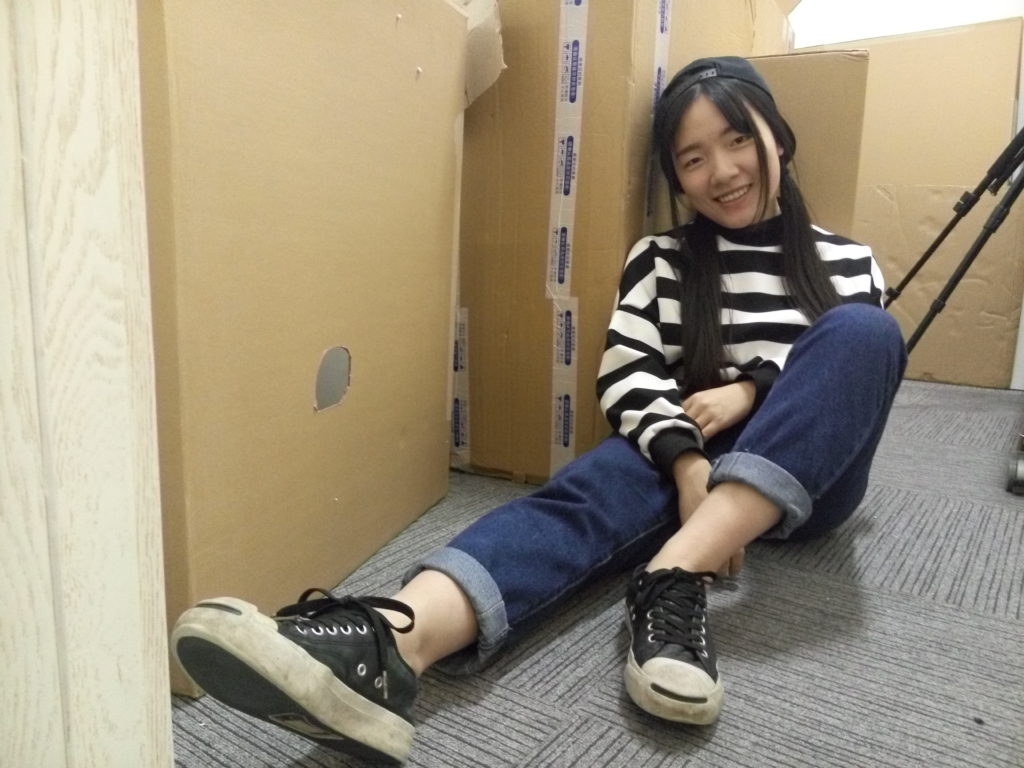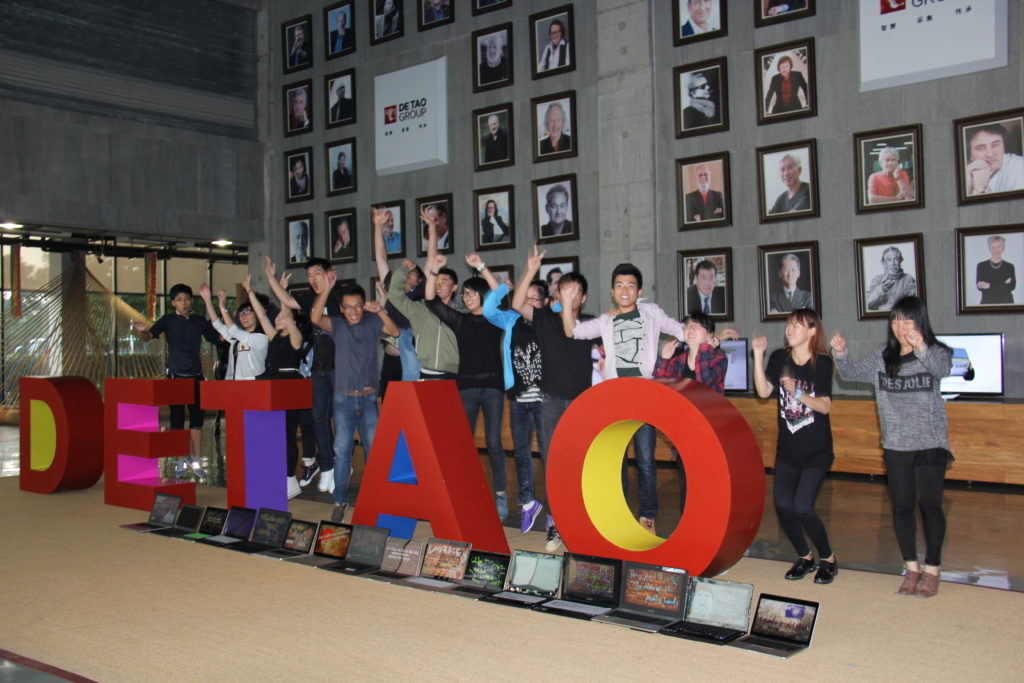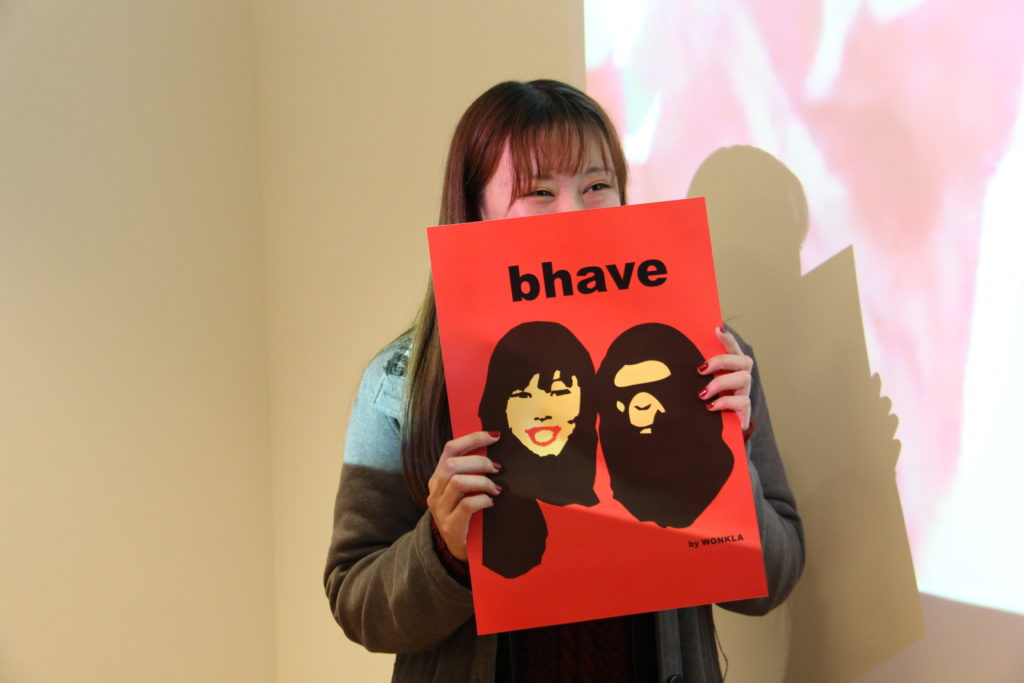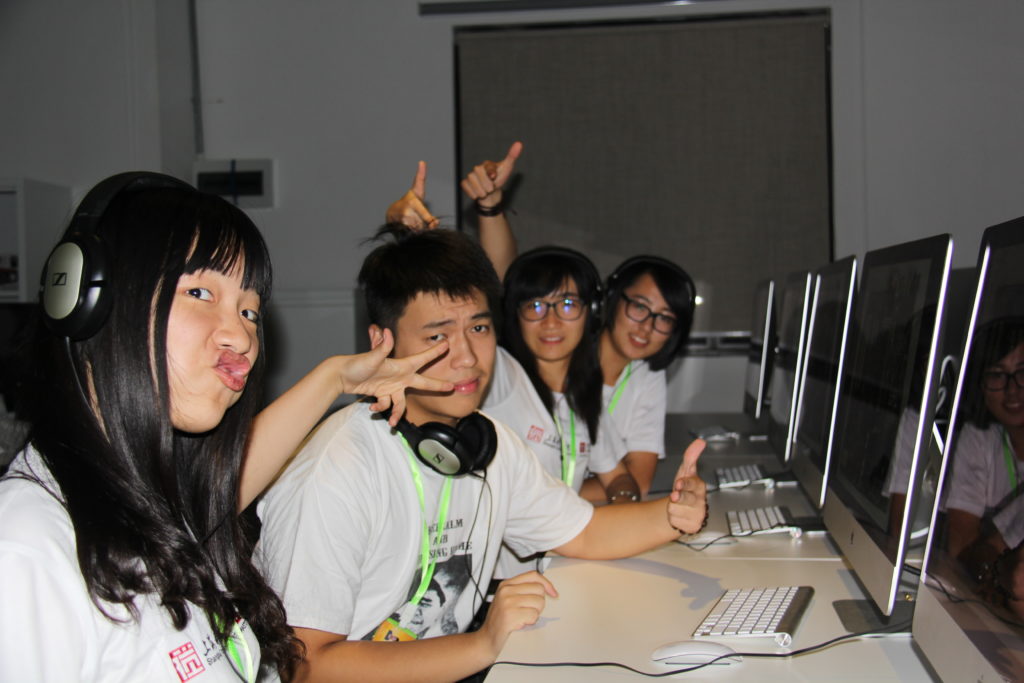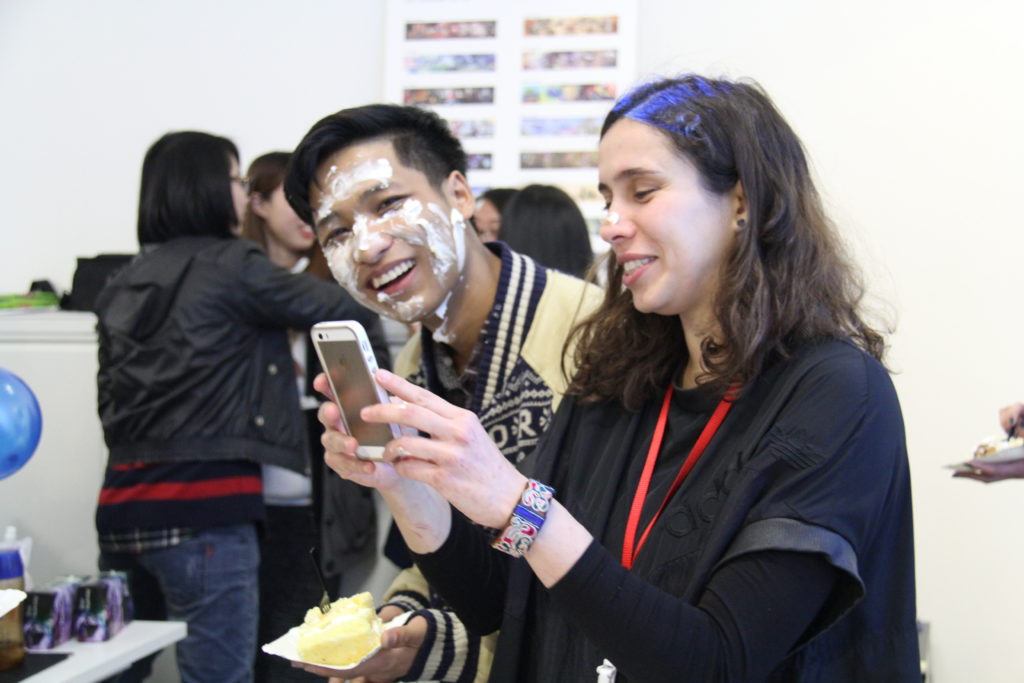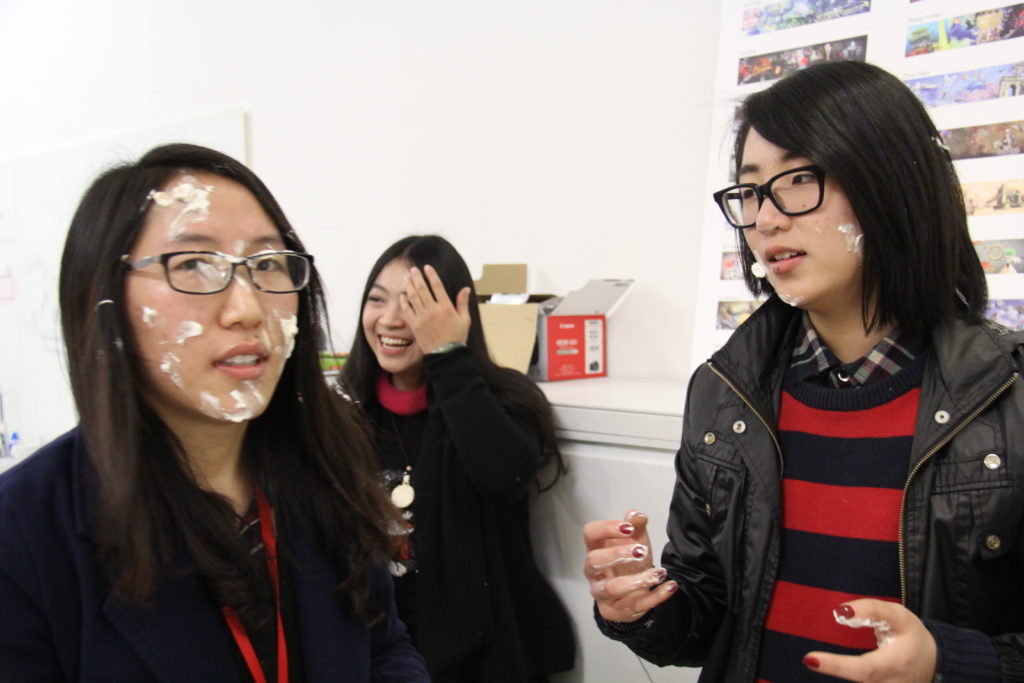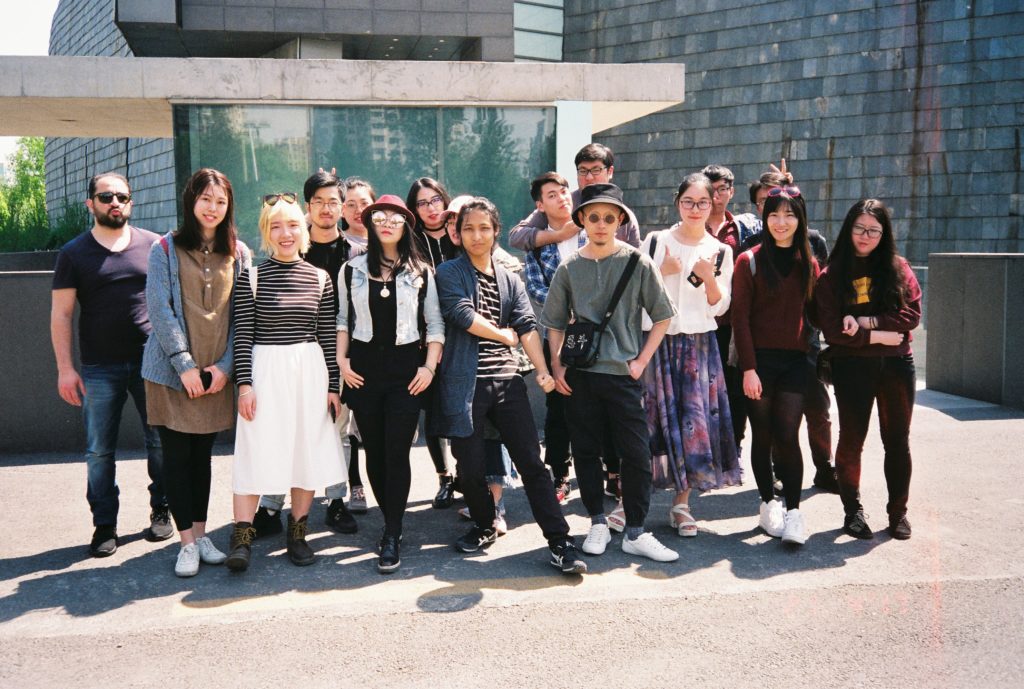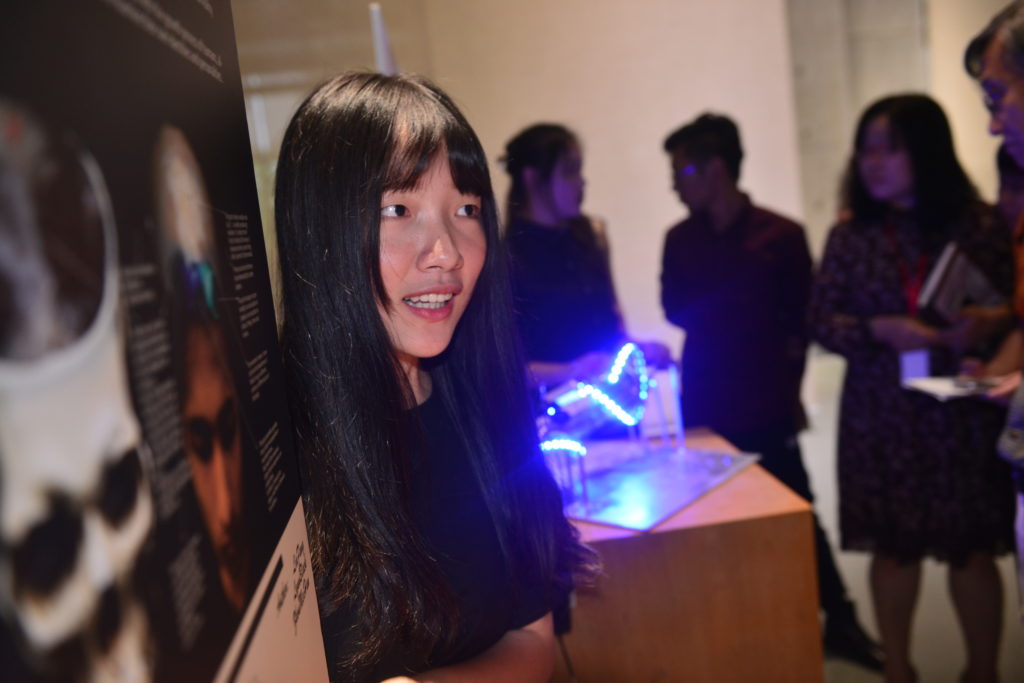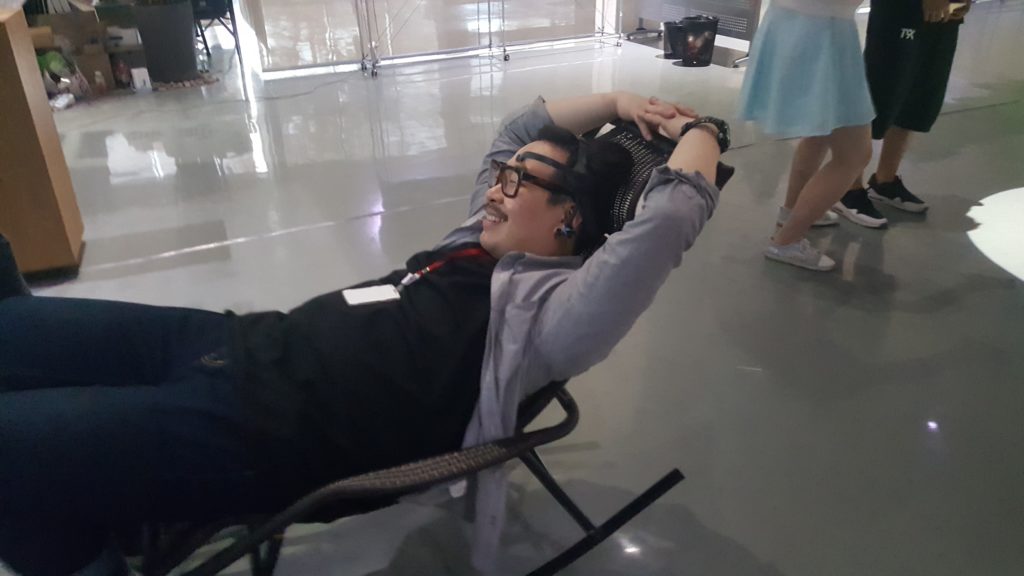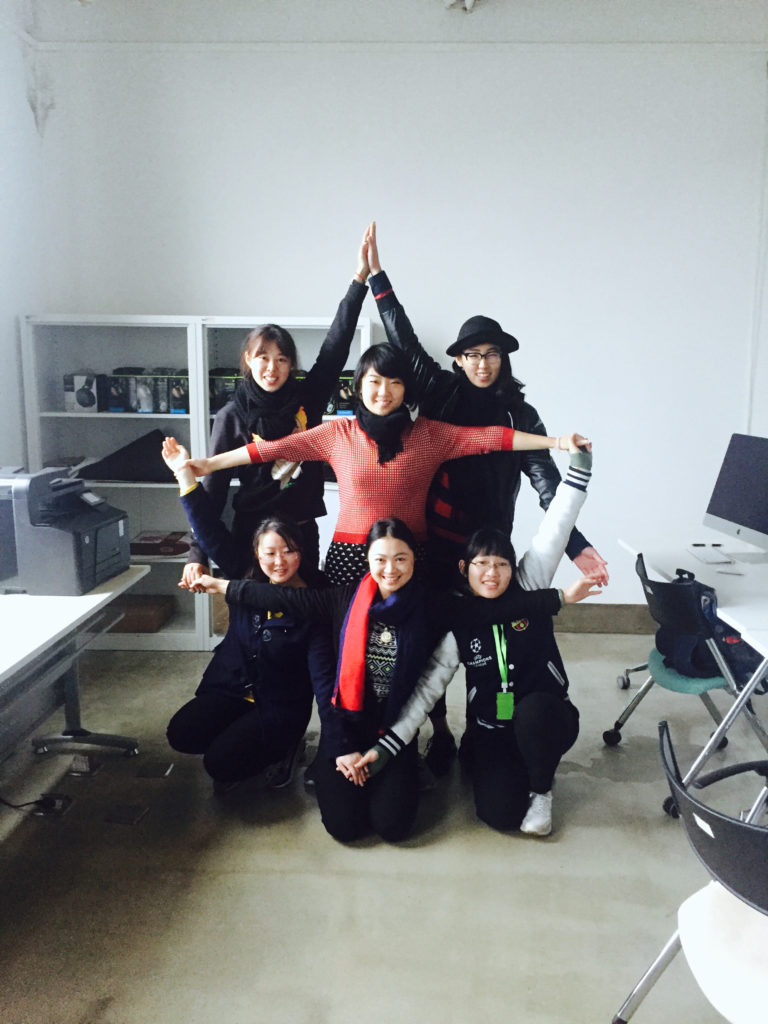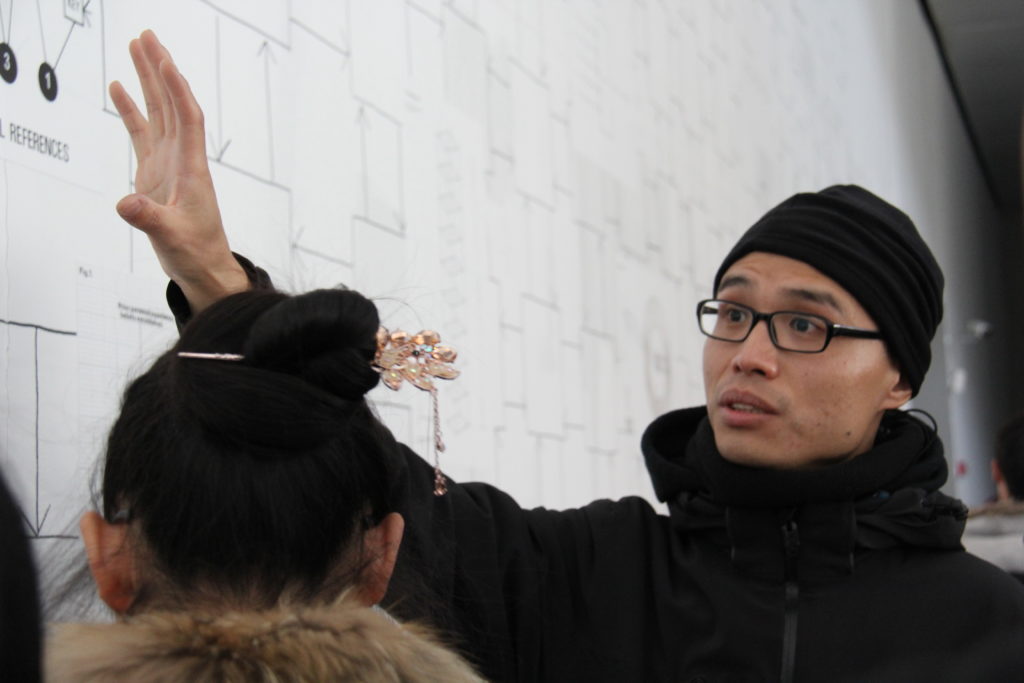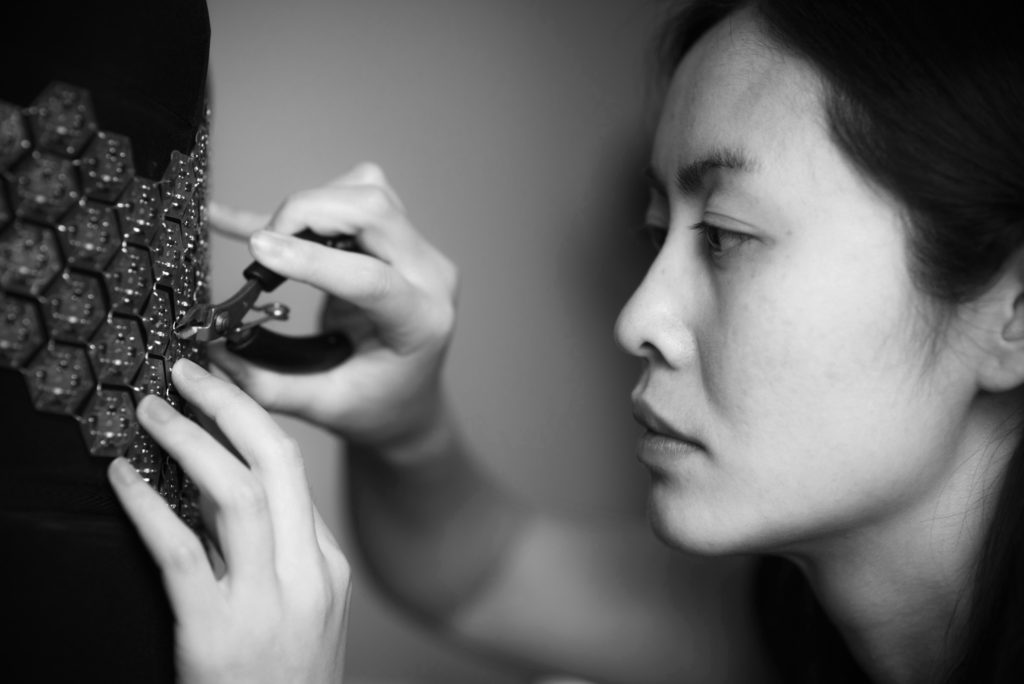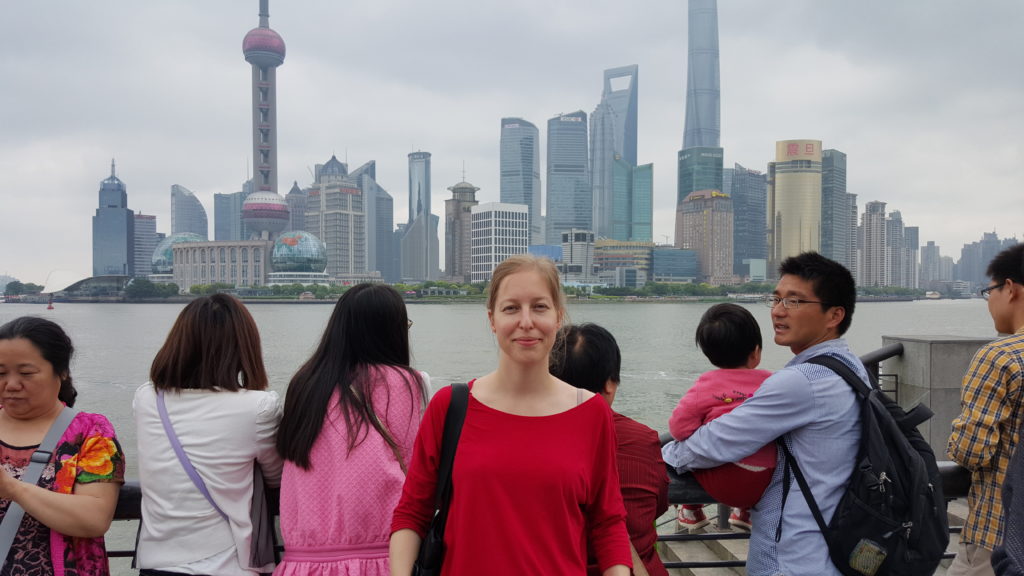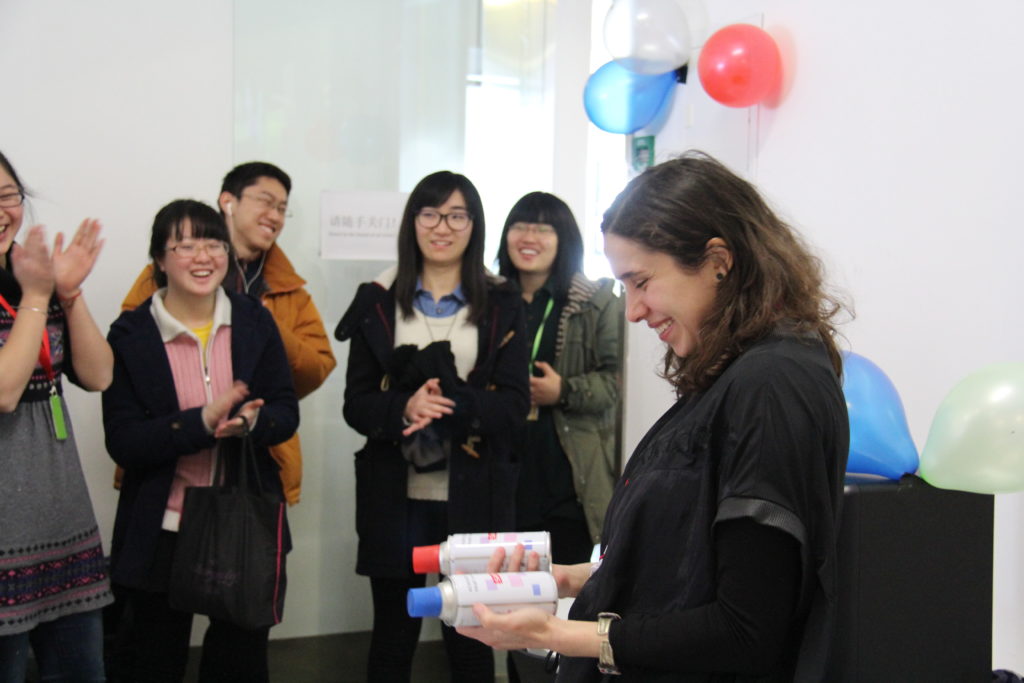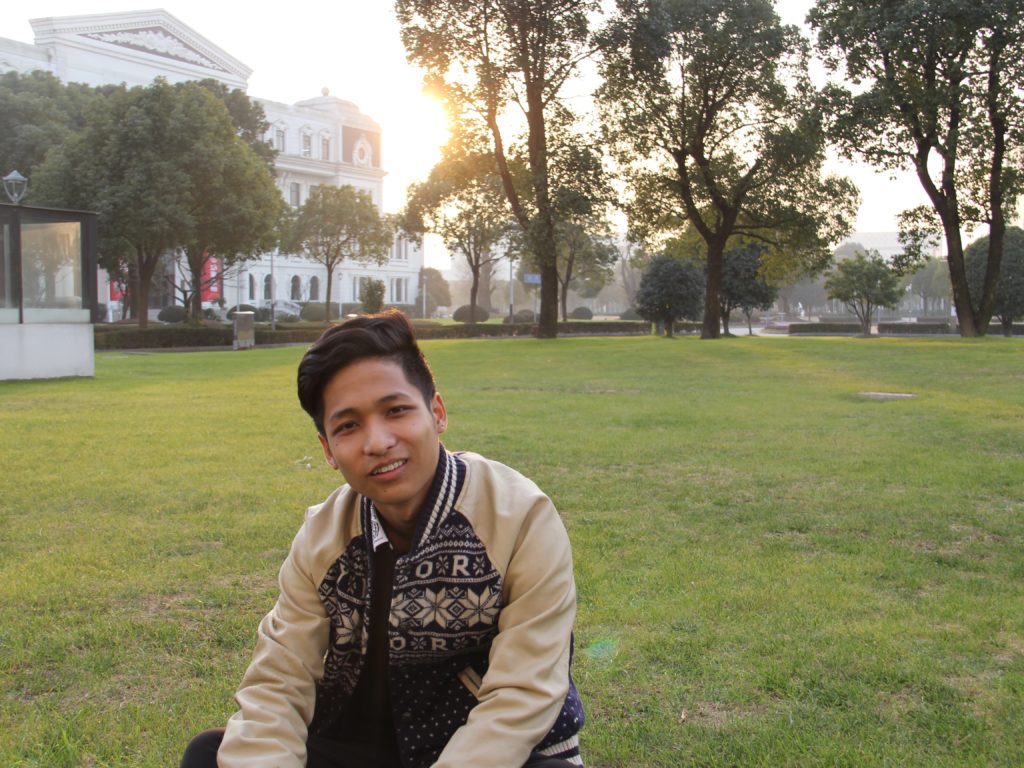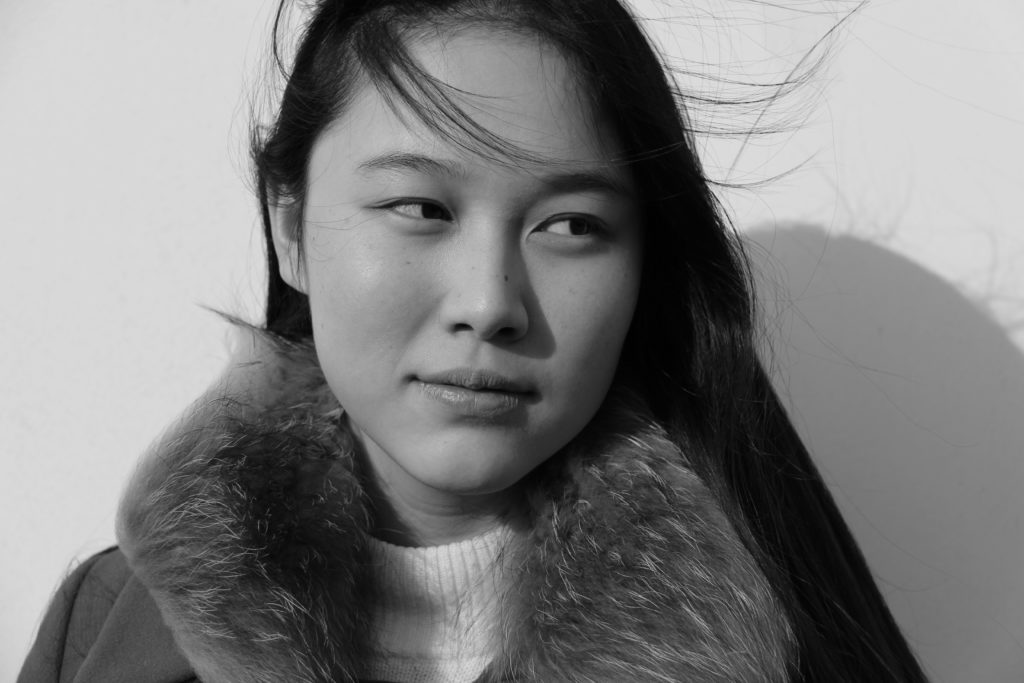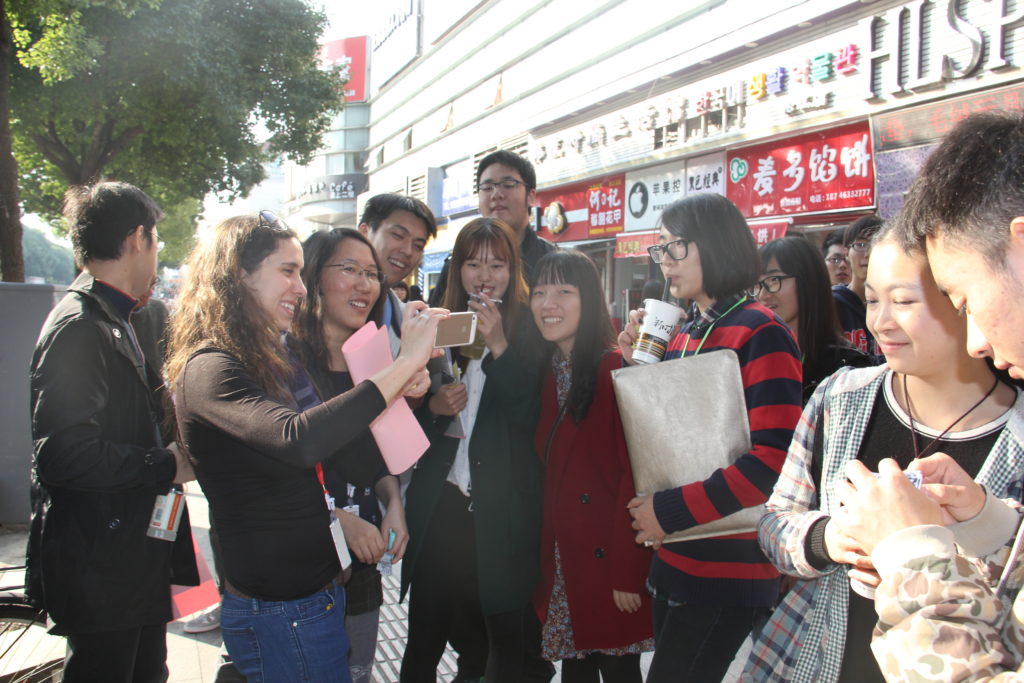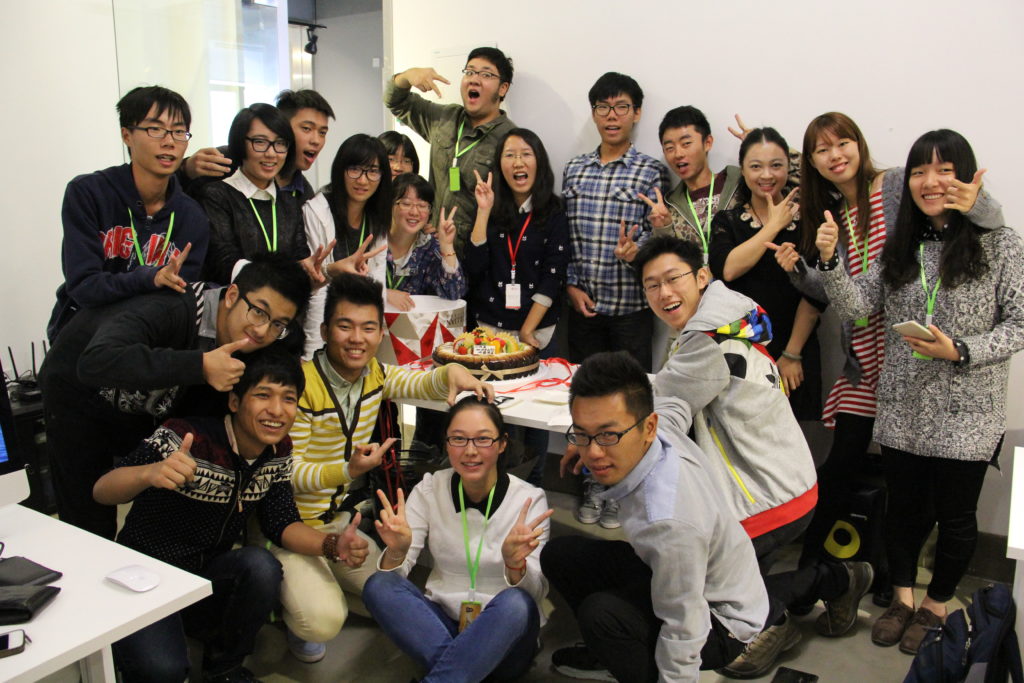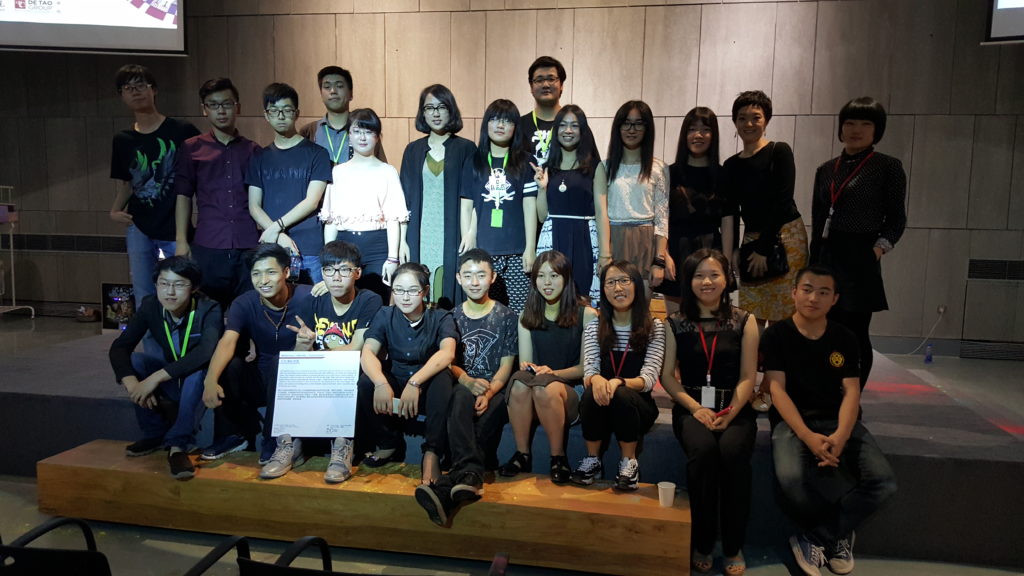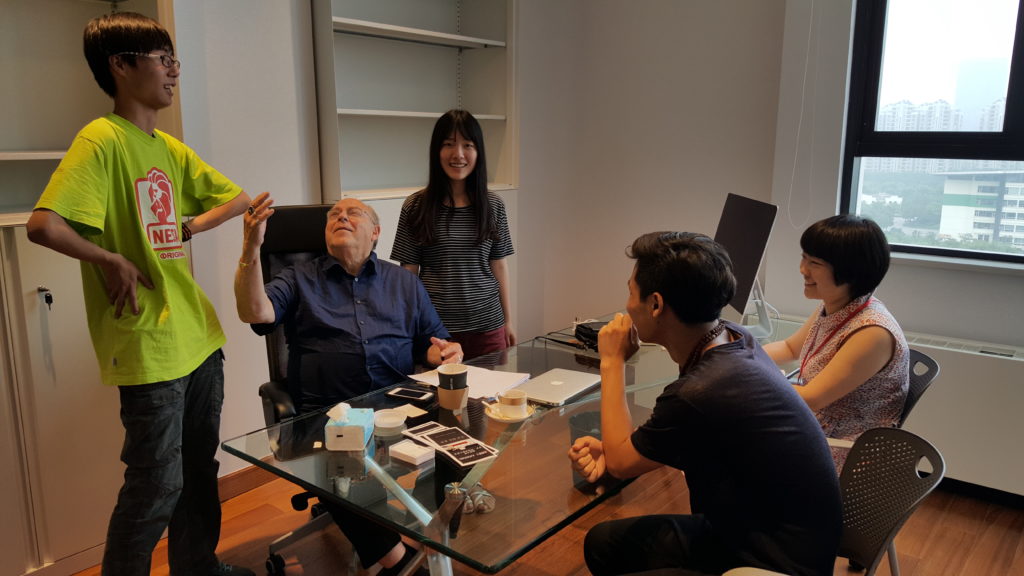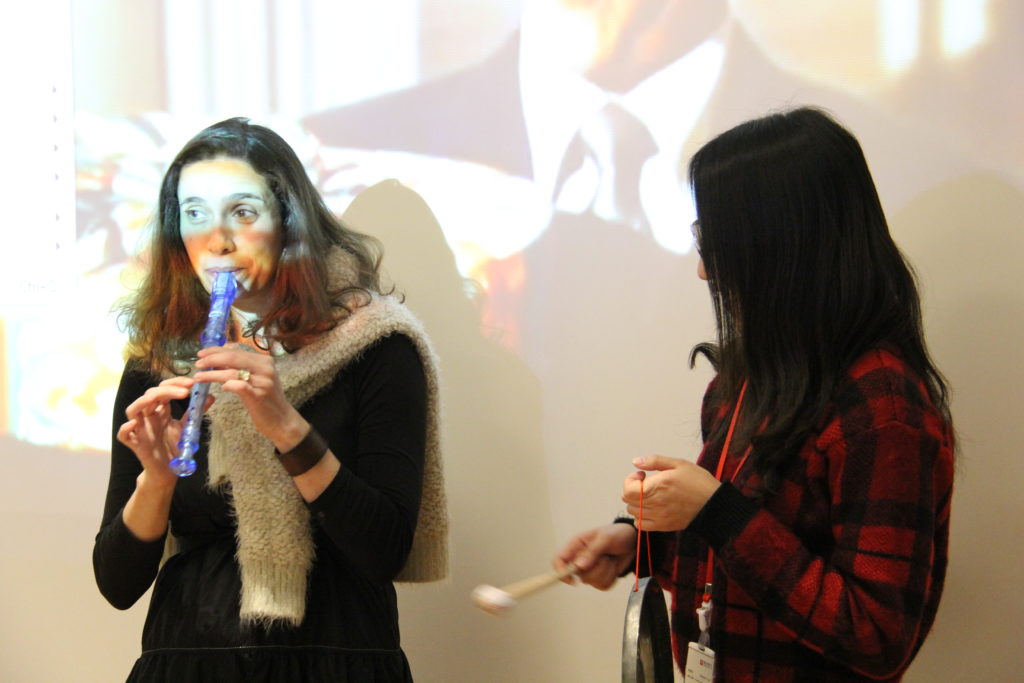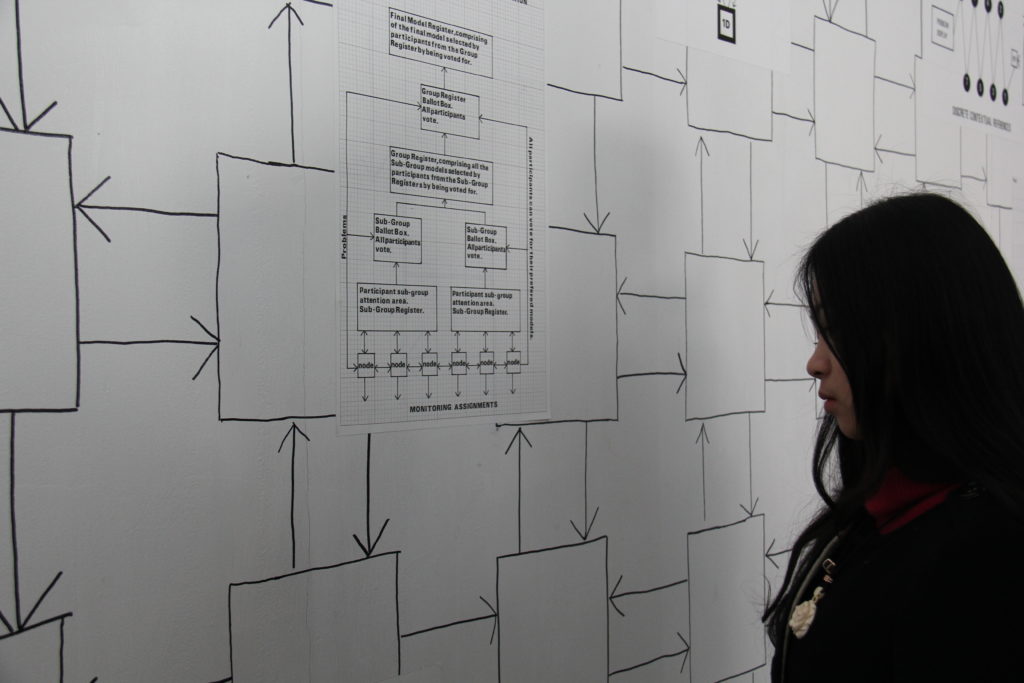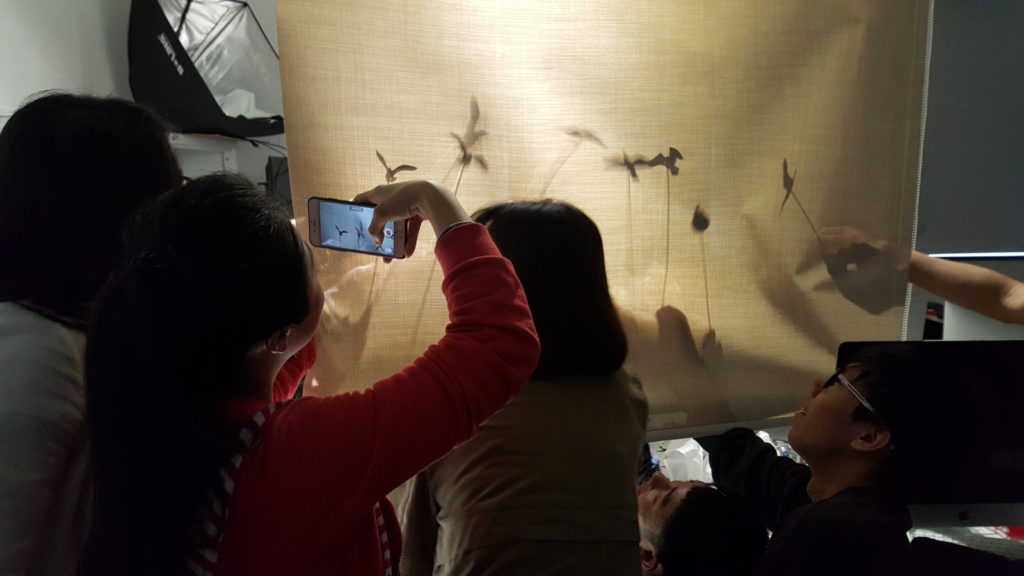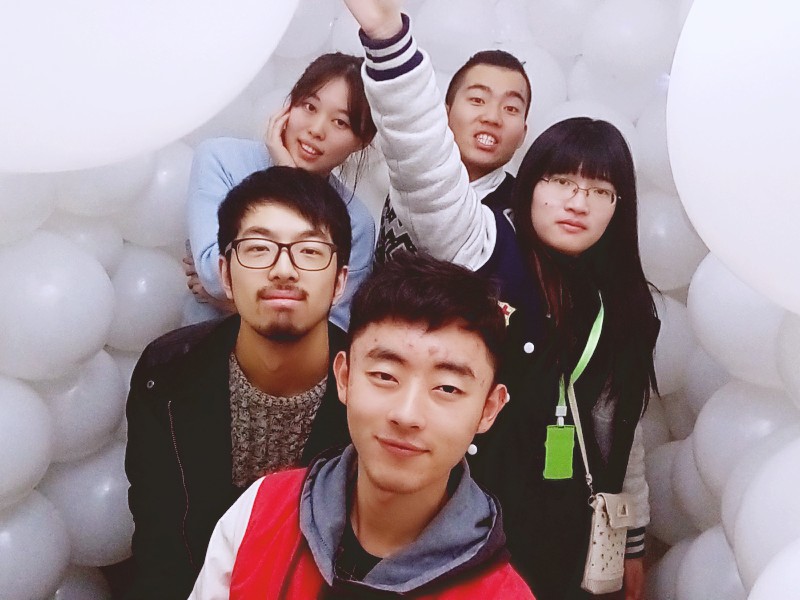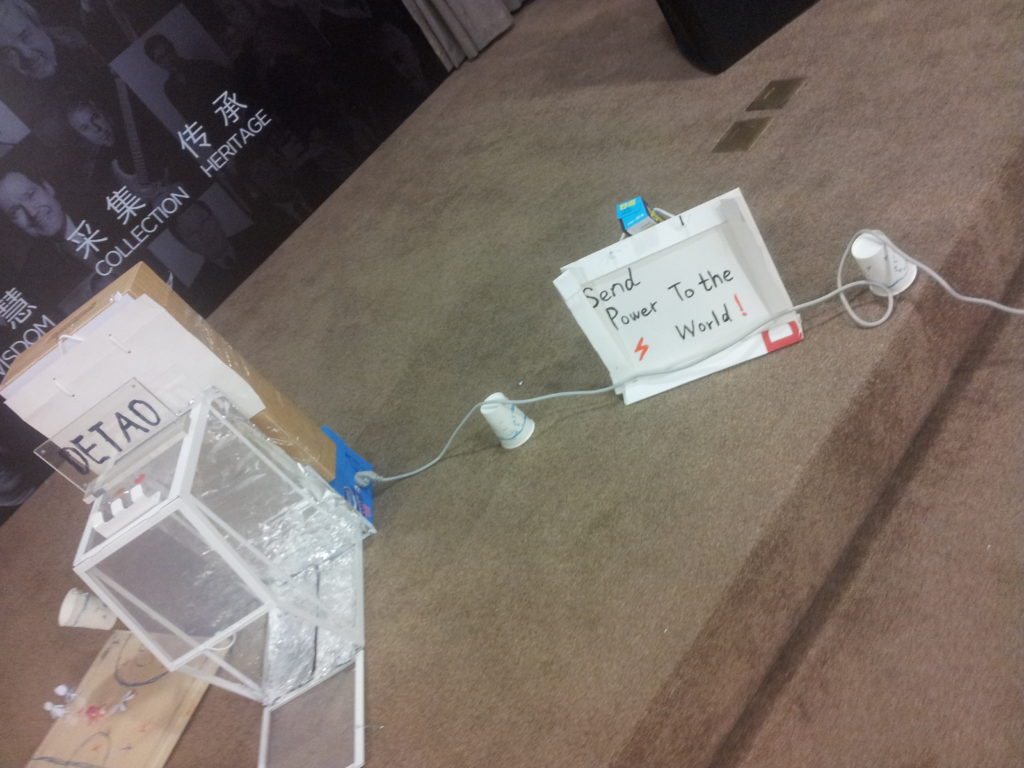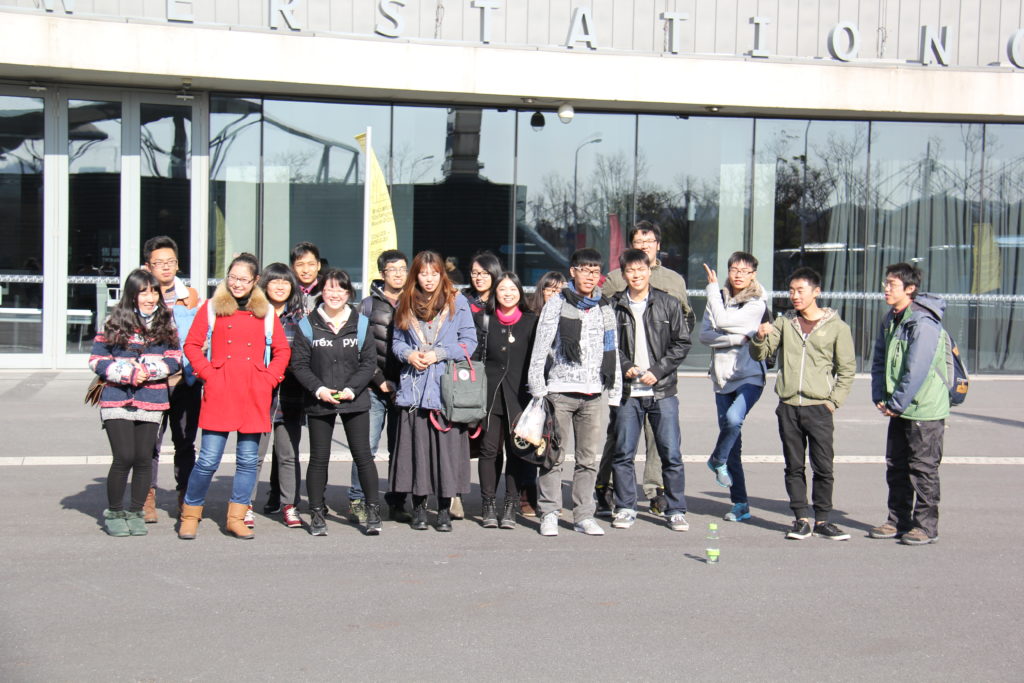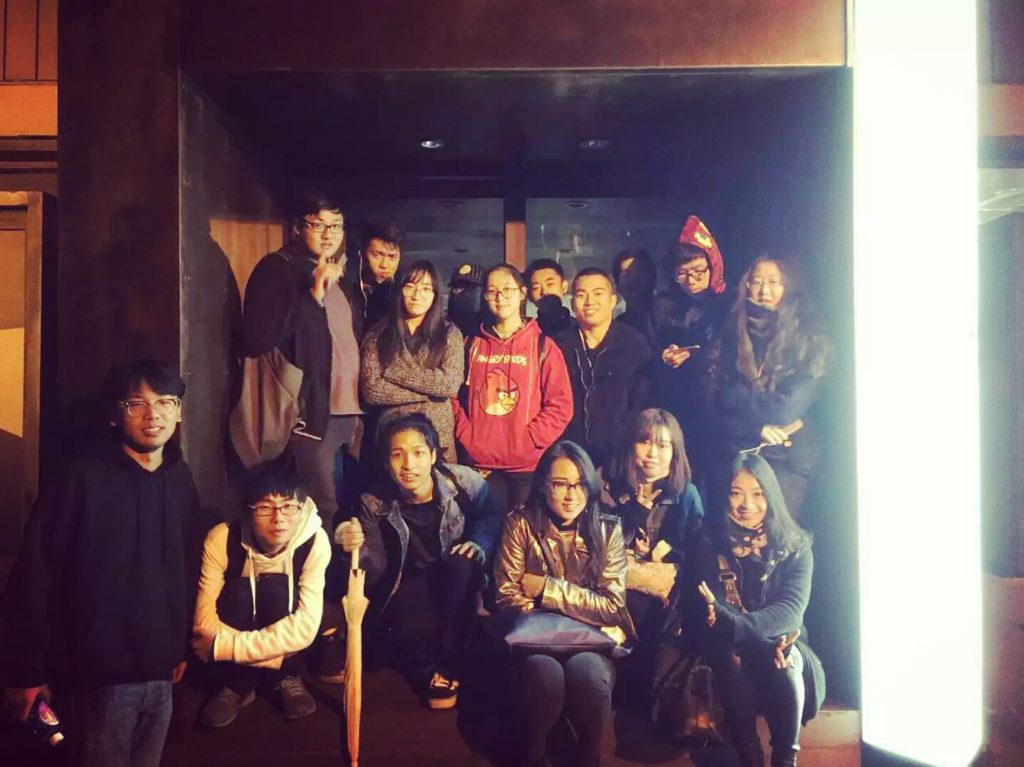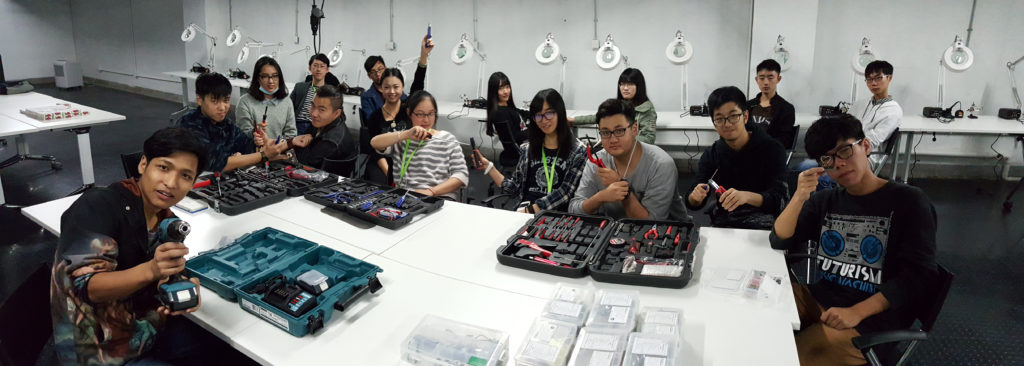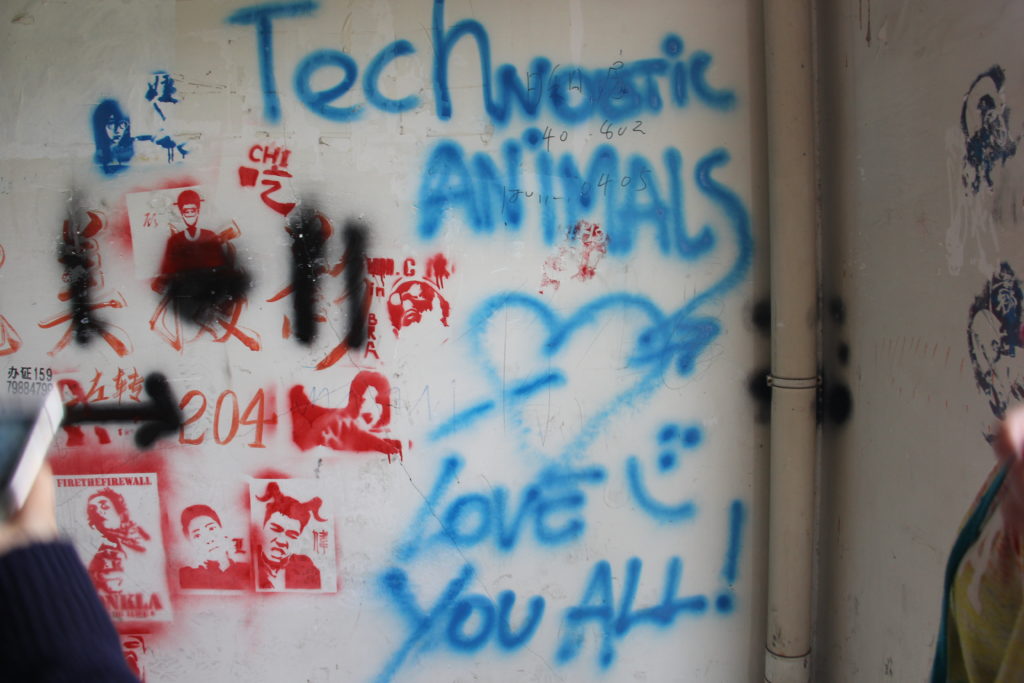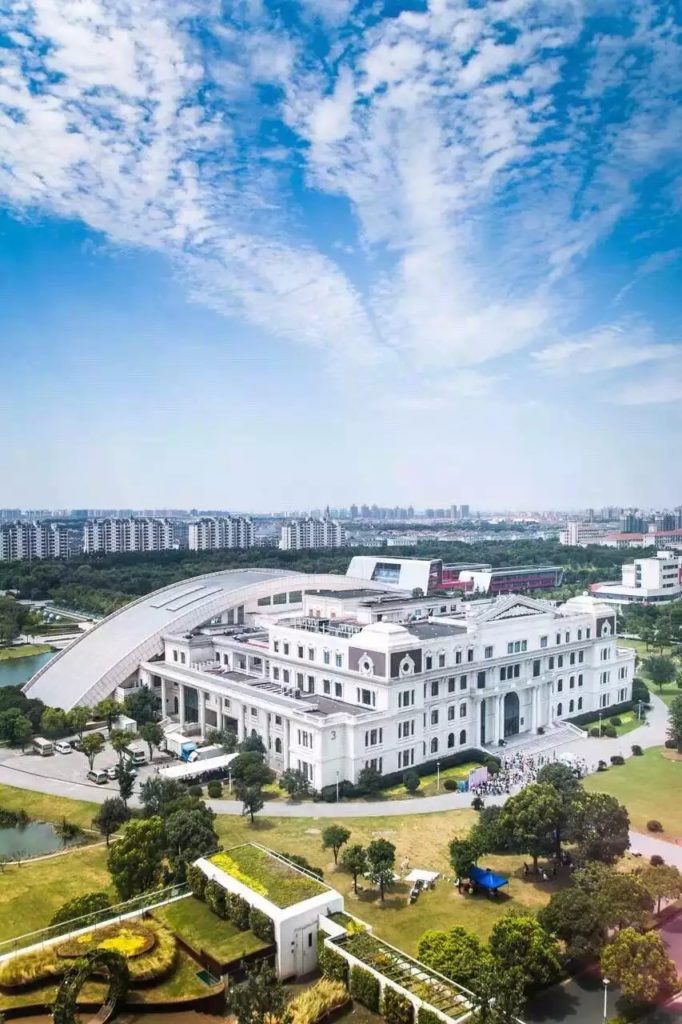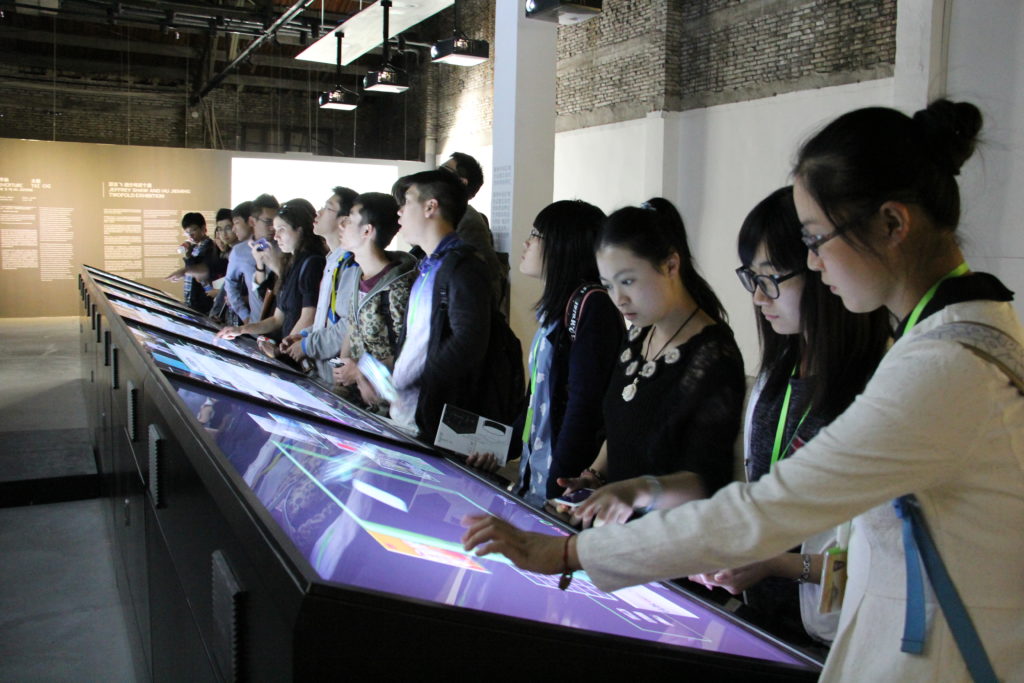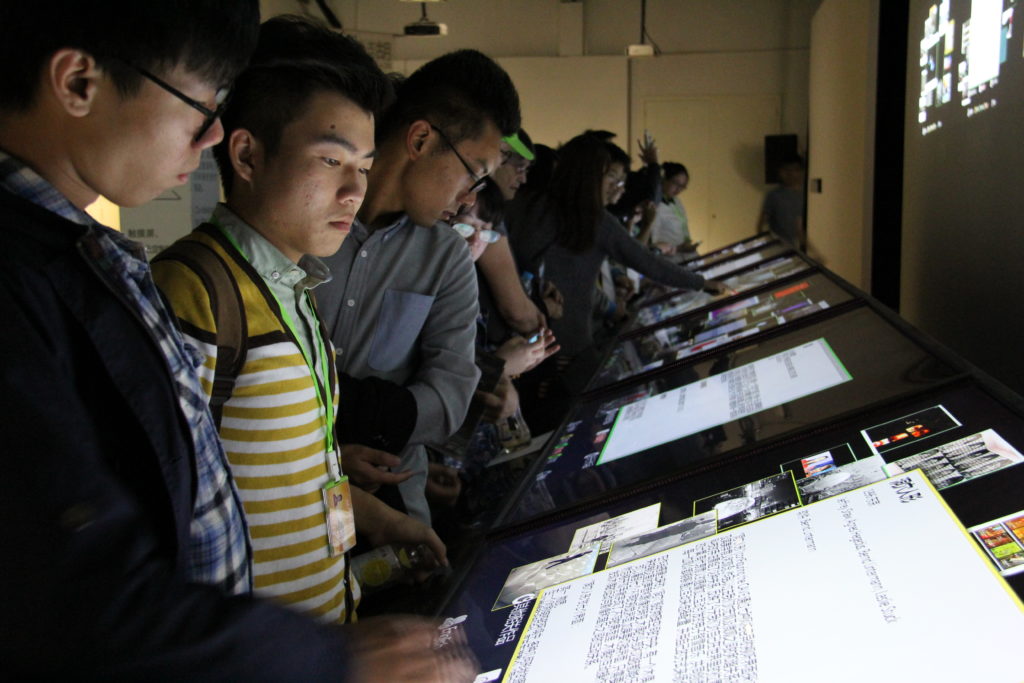Technoetic Arts
From 2014 till 2017 I had the chance to supervise Roy Ascott’s course BA in Technoetic Arts, at the DeTao Masters Academy and Shanghai Institute of Visual Arts.
Following is a description of the course, as is to be found in the documented curriculum:
“The BA Technoetic Arts has been designed to prepare students for a career in the field of new media arts. Technoetic Arts however is not only concerned with the new, but also in anticipating the future, as well as utilizing whatever has proven useful in the past. The programme aims to enable students to develop a predictive intelligence to tools and software, making technoetic art practice anticipatory whilst grounded in the contemporary moment.
Technoetics is a convergent field of practice that seeks to explore consciousness and connectivity (mind and networks) through digital, telematic, chemical or spiritual means, embracing both interactive and psychoactive technologies, and the creative use of moistmedia. Arts refer to professional practice in a variety of creative modes that may be both analogue and digital, private and public, expressive and speculative, performative and intimate, theoretical and curatorial.
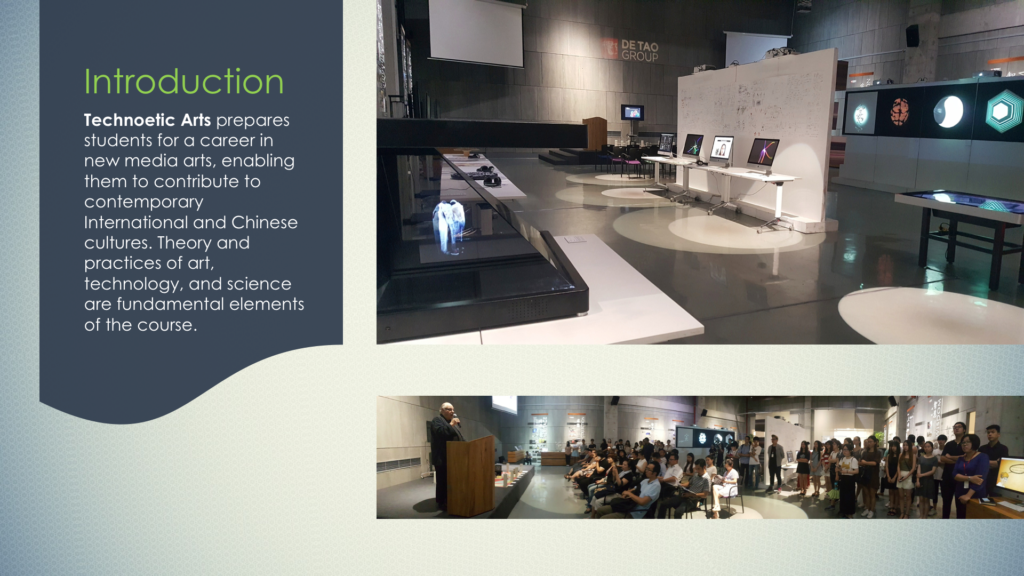
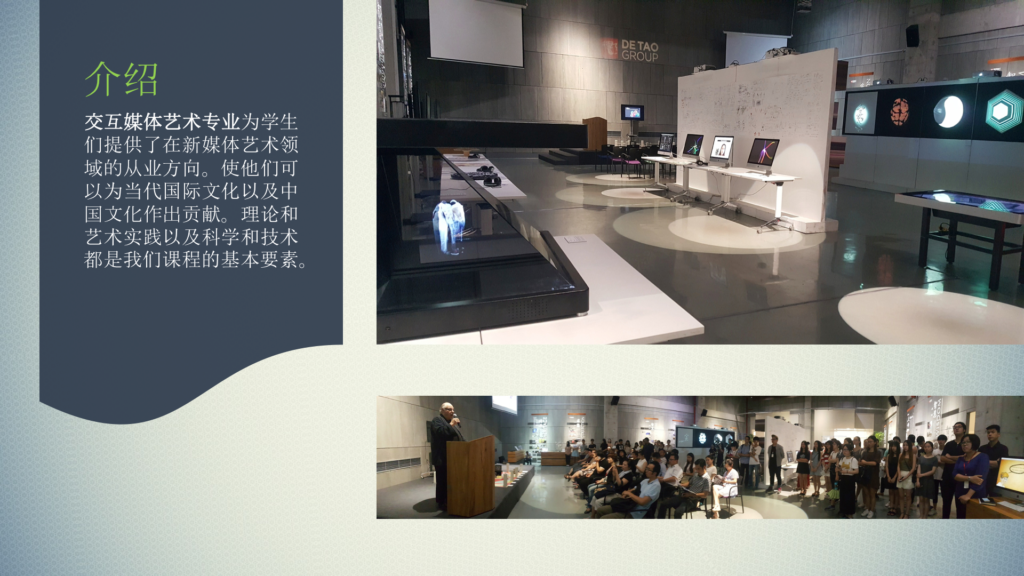
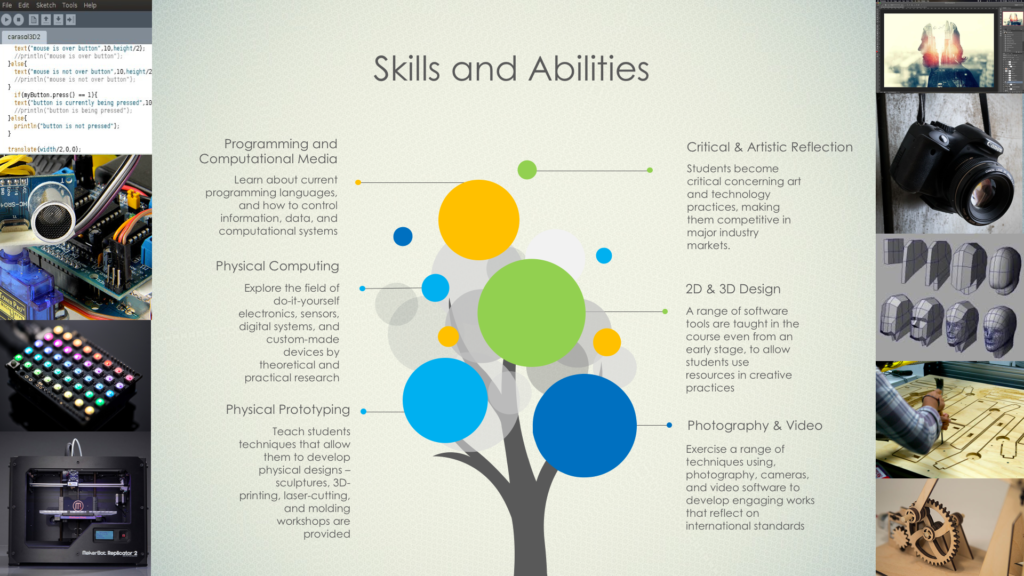
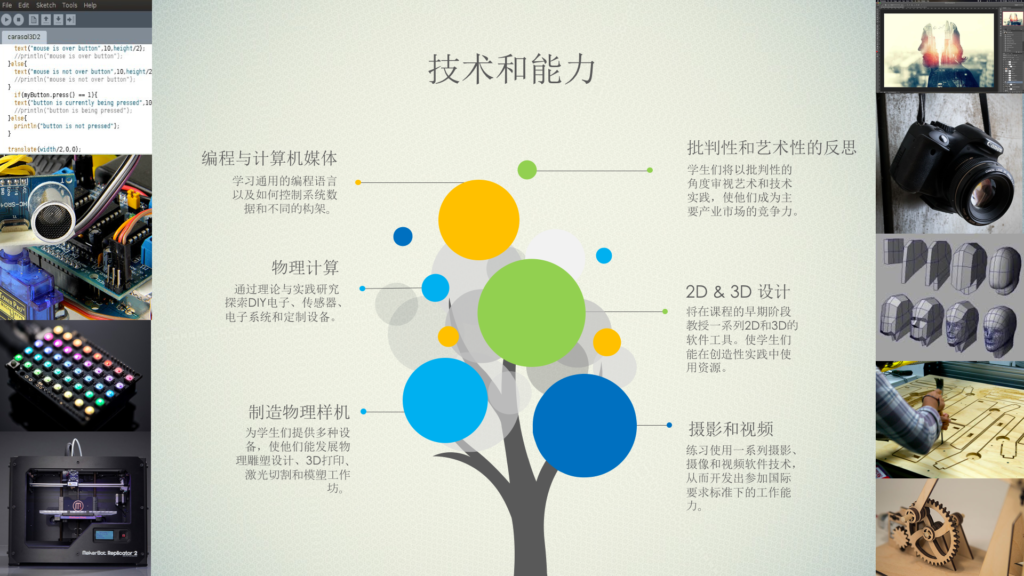
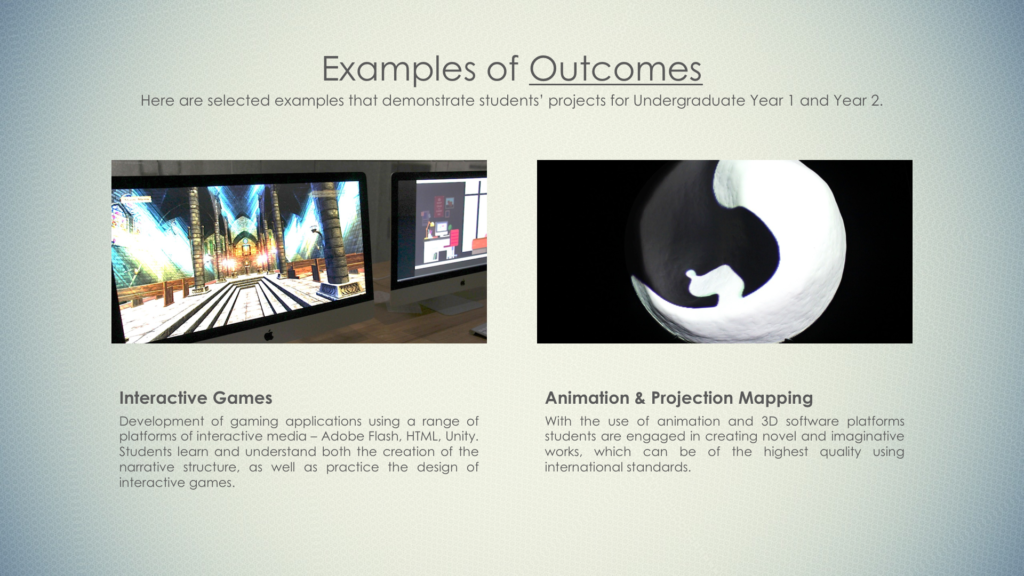
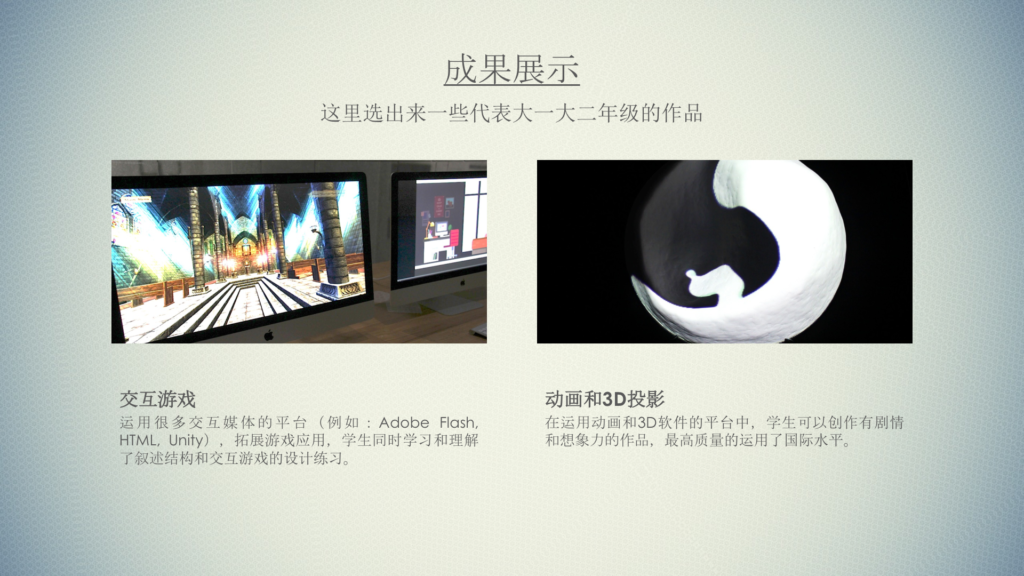
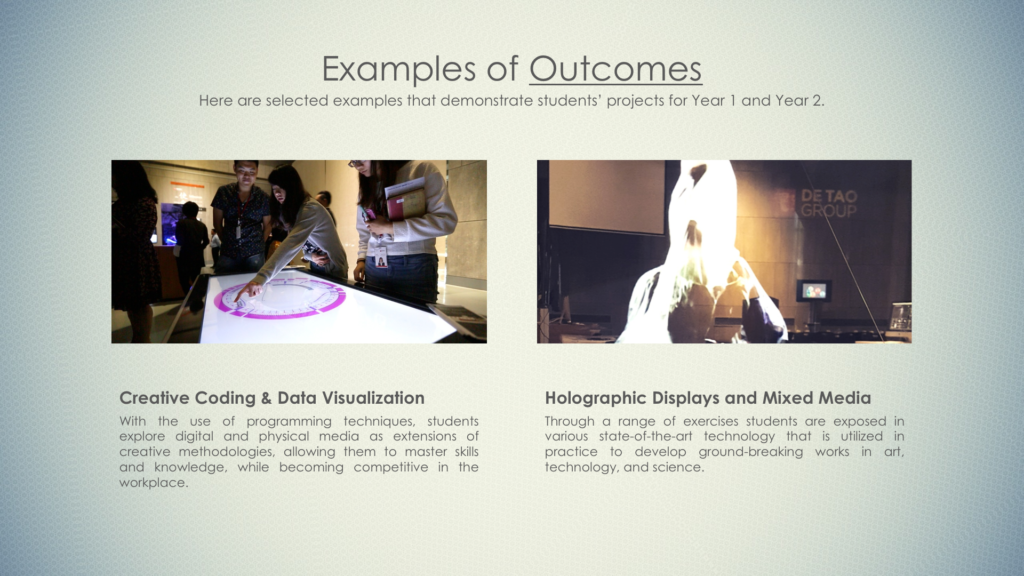
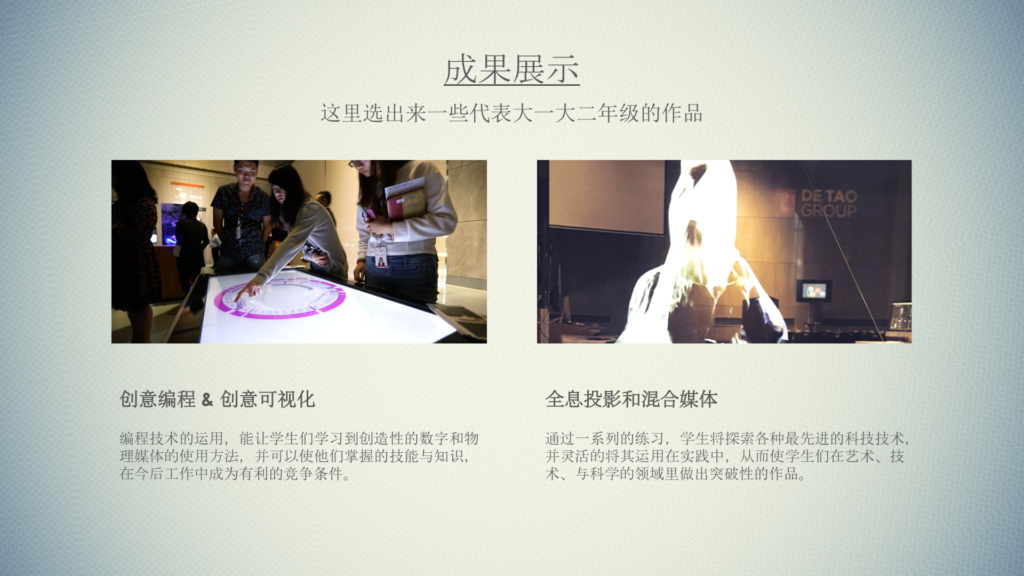
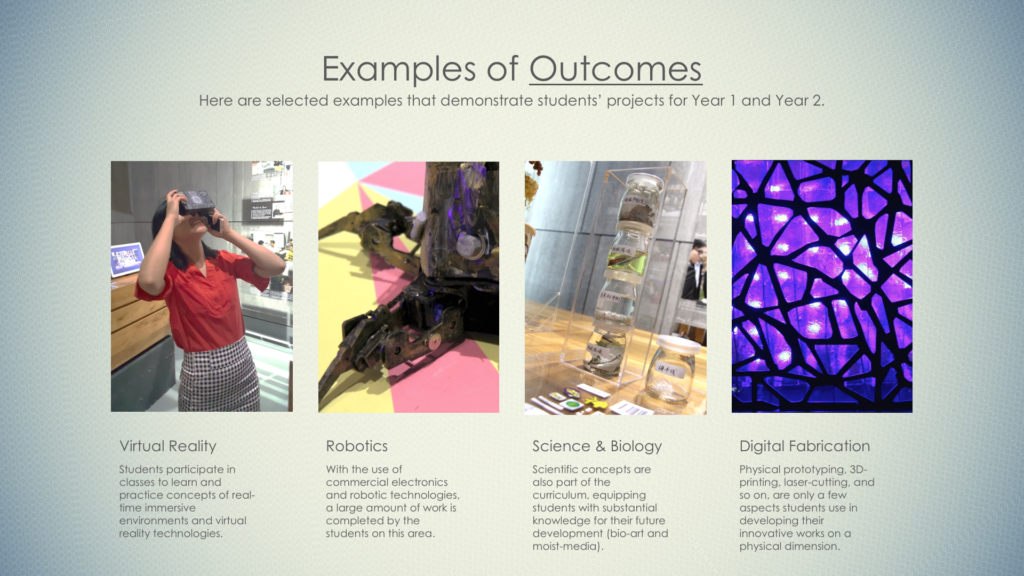
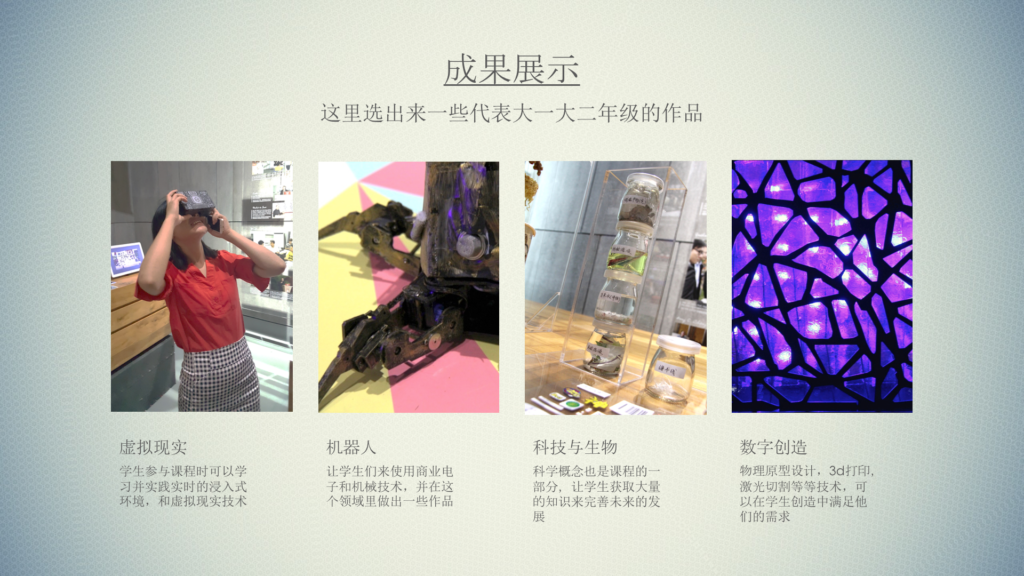
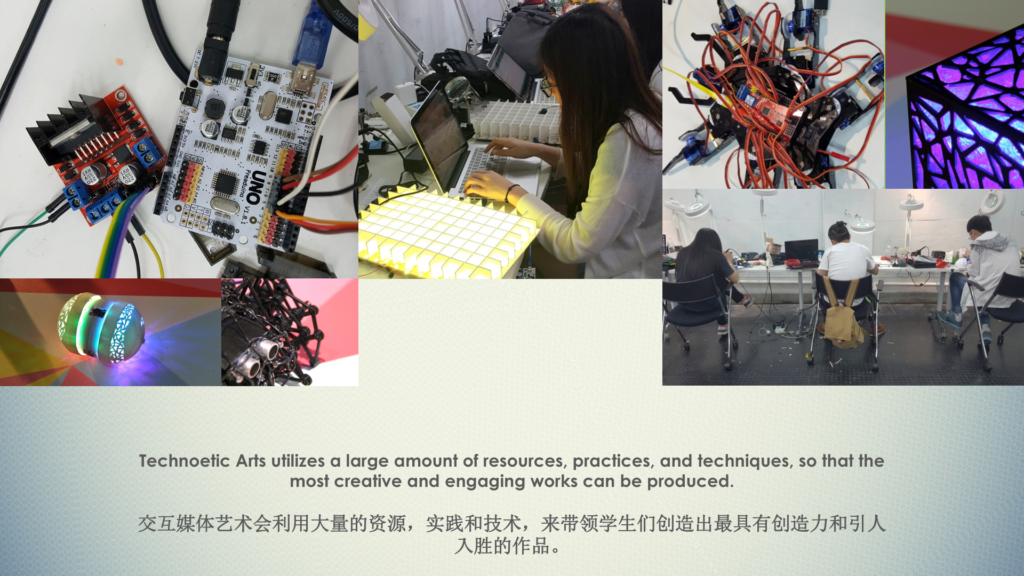
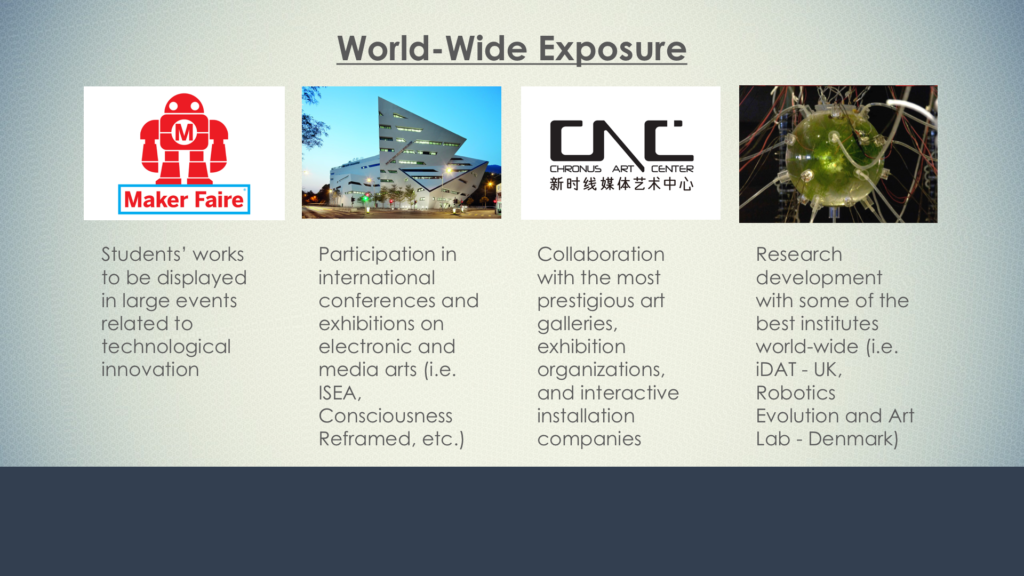
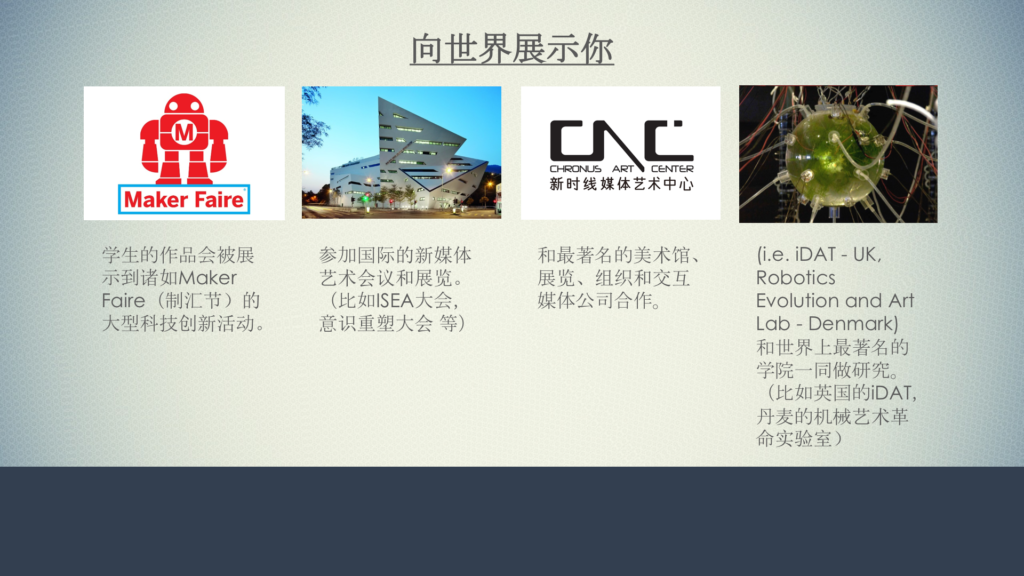
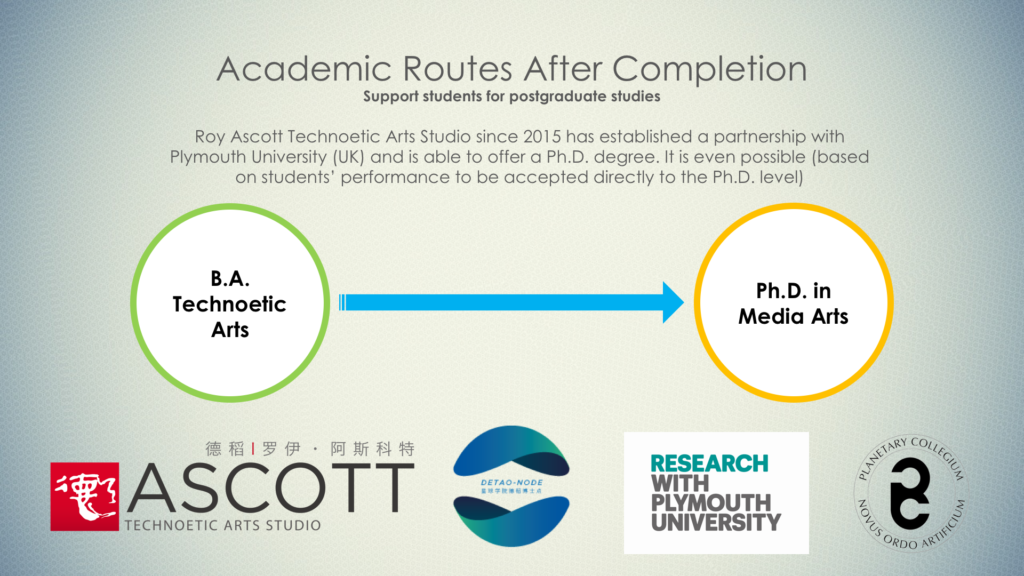
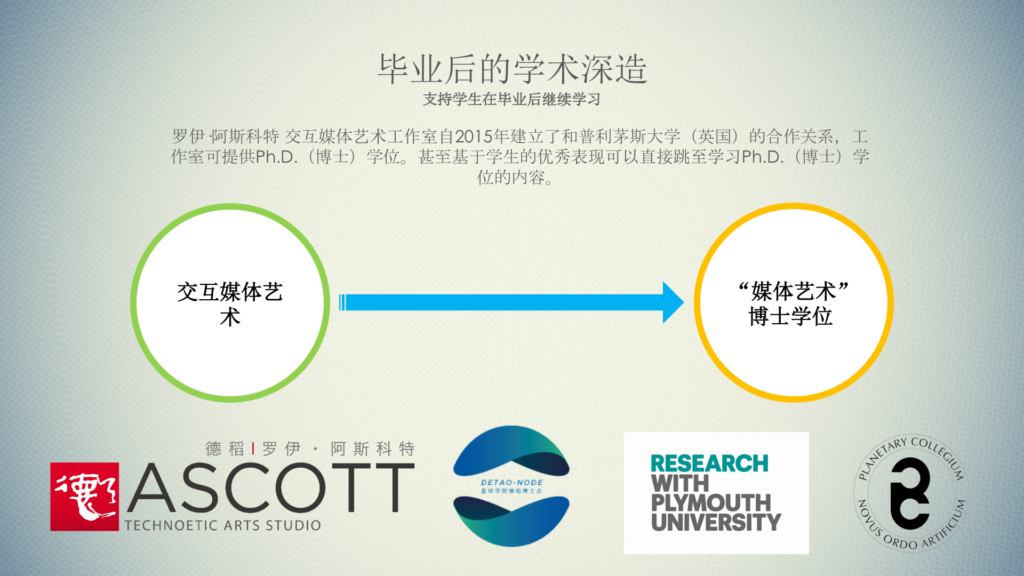
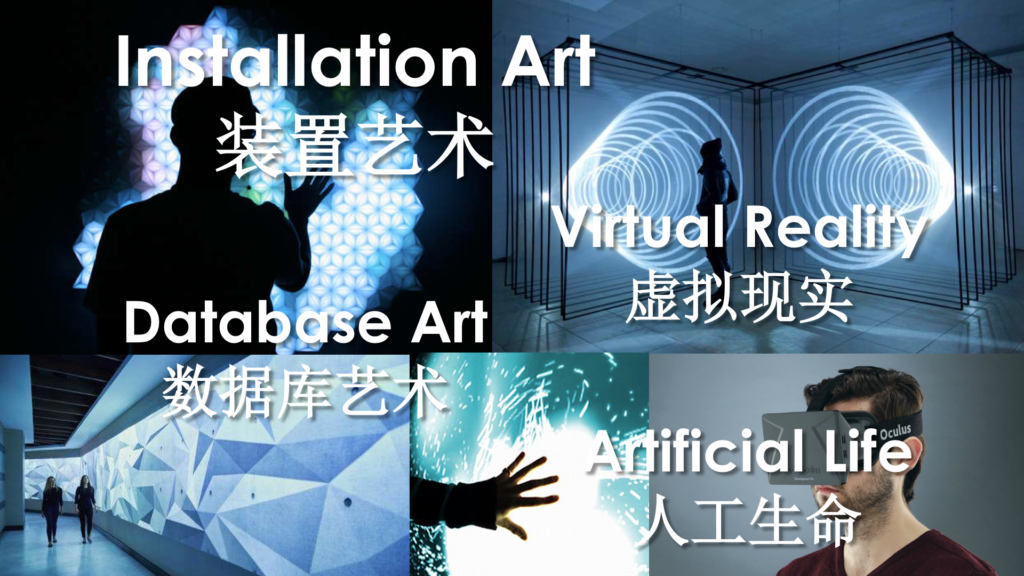
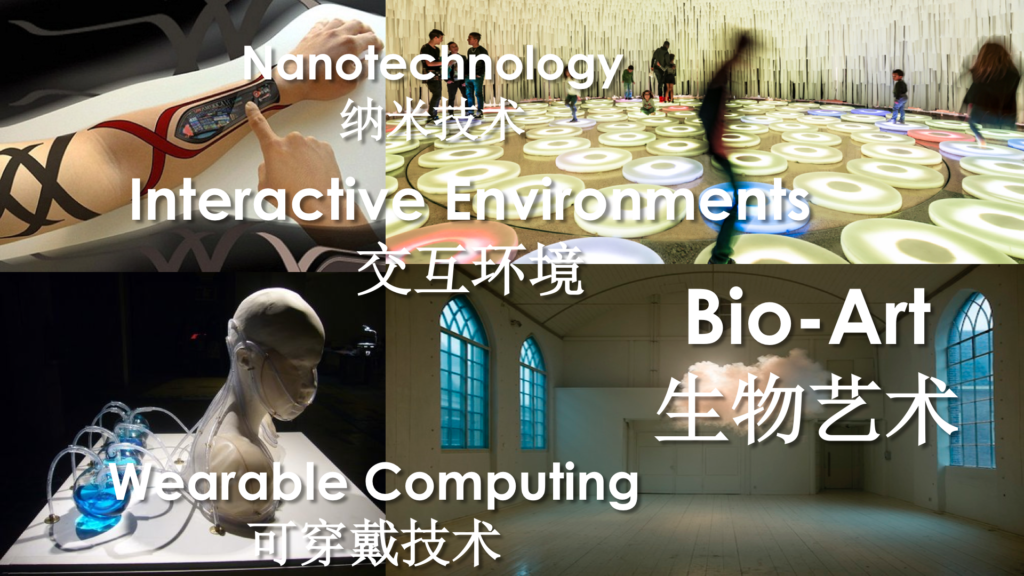
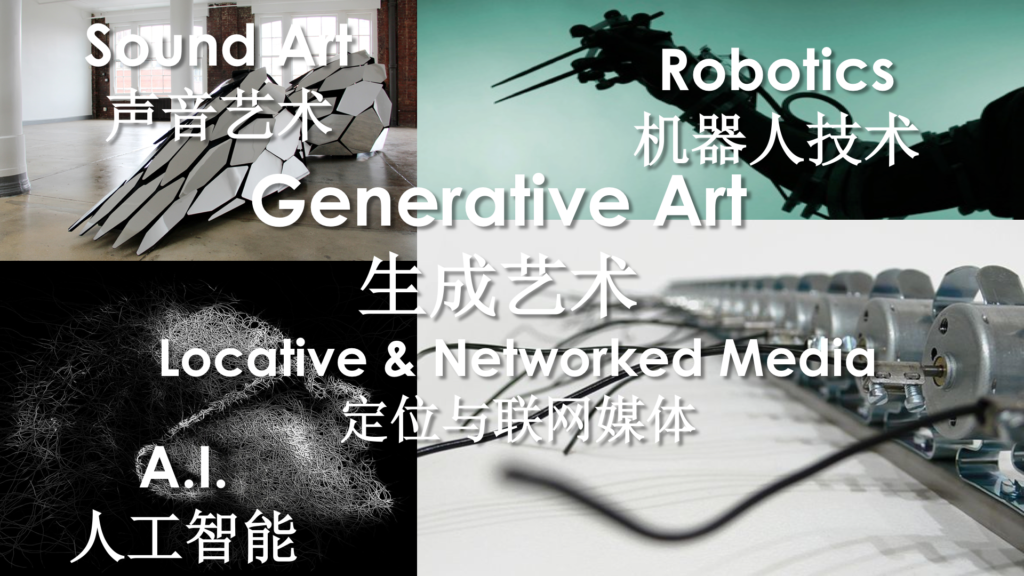
CURRICULUM STRUCTURE
Lattice
The curriculum is built on the generative principle of the lattice, an open network, consisting of poles:
- Information (knowing)
- Structure (building)
- Concept (thinking)
Orientations
- Analysis (materials, software, tools, systems)
- Theory (historical and emergent)
- Social application (real world problems)
- Speculation (anticipatory, propositional, expressive)
- Interaction (transformativeinstrumental)
Threads
- Telematic Narrative (time-based, interactive)
- Moistmedia (bio, neuro, nano )
- Syncretic environment (variable reality, modeling, prototyping, internet of things)
- Behavioural studies (performance, identity, collaboration)
- Communications (language, semiotic systems)
Below follows a description of the classes
PARADIGMS OF ART: A relational study of art, seen in terms of theoretical models, movements, styles, discourses, and manifestos, from Eastern and Western perspectives. Each week, an example from two distinctly different cultures will be juxtaposed and examined. The module will enable students to understand how paradigms of art may be entangled in regional and global developments, in different eras, involving variously science, technology, politics, economics, religion and culture. The perspectives taken in this module include the consideration of the human being as a creative and critical element in a universal ecological system that is self-organizing, complex and adaptive. Students are also enabled to develop their own manner of inquiry, with materials they collect through online research, and in books, films, exhibitions and performances across a wide spectrum of genres.
CYBERNETICS: A series of lectures examining the art of interaction in dynamic networks, both natural and artificial, showing the history of the field, and its application to science and society, biology, the arts and communication, with special reference to the root structure of the degree programme. (I – Forum A) Basic principles such as control, negative feedback, computing, and adaptation, will be explored as the ‘Ariadne’s thread’ to conduct student explorations that involve the understanding of communication and control in the organization of different systems/organisms, considering ‘first order cybernetics’ as the main perspective, at this stage. (I – Forum B) History and basic concepts. Norbert Weiner and his work in defining the study of control and communication in animal and machine. Introduction to such basic concepts as feedback loop, system dynamics, open systems, etc. (II – Forum A) This part leads students into a deeper understanding of the processes of communication – control has a basis of Interactivity. It will be provided by means of the analysis of pioneering artworks of interactive art, considering their relation with Technoetic Art. (II – Forum B) Starting from the main concepts of the second order cybernetics, the students will be conducted to explore different points of view in the consideration of the organism-environment as a single circuit, taken the body (energetic/material/spiritual) as the main object of study and considering a cross scalar and syncretic perspective. (III – Forum A) Students explore the relation between cybernetics and subjectivity, the shift from introspection to behavior, and the Posthumanist perspective. This will be linked to the principles of Technoetic Art: the shift from object to behaviorally situated processes. (III – Forum B) Starting from the study of basilar writings about the cybernetics principle of control, the students will be invited to build their own critical understanding of the topic, and proposing their own utopic controlled society – from emergent dynamics were they will be invited to read Philip K. Dick books and analyze and discuss productions as THX1138 and 1984, to mention a few. (IV – Forum A) Explore the development of interaction through different art projects and theories. A study is made on the interface and visual interaction, its relation to literature and epistemology, social and tangible interaction, and realizations in design and architecture. Finally, the development of ubiquity and responsive environments is addressed in relation to the Internet of Things. (IV – Forum B) Discussing the importance of the Quantum Theory (focusing on the Copenhagen Interpretation) perspective to the cybernetics thinking, the students will be invited to discuss ideas as the ones of Erwin Schrödinger, that brings to the scene concepts as the one of ‘quantum entanglement’ allowing to understand ‘interaction’ and ‘communication’ from a subatomic perspective.
TOOLS, SOFTWARE, AND SYSTEMS: In the context of art, the study of the potential and practice of contemporary means of onsite/online planning, programming, modelling, construction, production, and distribution. During this module students will be exposed to a range of methods and approaches concerning current design and development in physical and virtual prototyping processes. Various technologies and systems will be presented, dissected, analyzed, remixed, and redesigned. Interaction, digital media design, networks, performative technologies, 3D/virtual reality systems, and creative coding practices will be undertaken in theoretical and practical sessions. (I) The module introduces students to a range of multimedia technologies that are used in various media works. Students begin to engage actively in these creative technologies, and create works in 2D designs and other time-based media (video and sound), coherently understanding how to create and present digital media artefacts for different displays and systems. (II) In this semester students focus on issues related to media design (such as 2D design, video, sound) and start to develop more complex ideas and creative scenarios for their work. They are introduced to creative coding practices that empower them to develop their own software systems as extensions to their ideas. Finally, 3D design is introduced as a medium for expression and experimentation. (III) During this module, students learn and employ advanced computer programming skills in a range of different platforms, demonstrating knowledge on connectivity through systems and protocols. They get exposed to the Internet of Things, and develop their own system ecologies.
CYBERCEPTION: Introductory study of the emergent faculty of cyberception, technologically-augmented cognition and perception. This includeS reviewing the implication of new modes of behaviour for future cultural and social structures and systems. Topics include: networks and planetary consciousness, augmentation of collective intelligence, the hypercortex, virtual and augmented realities, the aesthetics of interaction and connectivity, and technoetics. An open dialogue will be established, and students are provided with strategies that can be applied experimentally to their own development. (I – Forum A) this semester, we question preconceptions about human perception. Using the perspective of Media Archaeology, we analyse different apparatuses that have enabled the augmentation of our vision, hearing, touching, taste and smell. Understanding how these apparatuses are entangled in scientific paradigms, cultural practices and historic situations. (I – Forum B) Exploring the ways through which our energetic constitution, together with that of computational/communicational systems, is ‘quantum entangled’, defining a specific extended perception, the idea of Cyberception is presented and discussed as ‘the defining behavior of a possible transpersonal art involving communicating, sharing, collaborating, enabling us to transform our selves, transfer our thoughts and transcend the limitations of our bodies’. (II – Forum A) The students are oriented in the design of imaginary extensions that enhance the emergent faculty of cyberception, understood as the technologically improved interactions of human perception and cognition. The imaginary extensions must reflect on new modes of behavior for future cultural and social structures and systems in a social/environmental scale. (II – Forum B) Study of the developments towards the emergence of the hypercortex or augmented mind. We will consider the development of different uses of massive communication systems in the Postmedia era, the Digital revolution and the emergence of virtual space. The early proposal of networks of action and communication and the emerging planetary conscious, related to the development of the Internet. These developments will be considered in relation to the epistemological and ontological changes in which they are entangled, and the effects on the emergence of new modes of behaviour towards the production of new cultural and productive systems. (III – Forum A) In this semester, students are introduced to the dissemination of the interface in the physical world. Projects are analysed, related to augmented reality and pervasive media, the daily interaction with intelligent objects and new behaviors arising in this milieu. This is discussed in relation to the emergence of an augmented consciousness and reality in flux. (III – Forum B) The students are oriented in the design of imaginary extension that enhance the emergent faculty of cyberception, understood as the technologically improved interactions of human perception and cognition. The imaginary extensions must reflect on new modes of behavior for future cultural and social structures and systems in a personal scale.
NARRATIVE: Practical study of new forms of presentational and discursive communication, including distributed authorship, interactive and time-based media. The module identifies multiple forms of narration that have been applied in artistic, communicative, or experimental contexts, and questions their existence mainly in expressive and creative aspects. Students are expected to analyze a number of different art and media productions, while learning original and advanced ways to create, organize and develop media works across platforms, technologies, in physical and virtual spaces. (I – Forum A) A brief history of the emergence of the concept of medium in the study of narrative. The first part concerning multiple forms of narration that have been applied in artistic, communicative, or experimental contexts, and questions their existence mainly in expressive and creative aspects. Students are invited to explore and analyze the experimental territory, where the cinematic and digital arts are converging in new forms of narrative through a rich sampler of interactive work and videos. (I – Forum B) (Ante-Narrative) Including the luminous patterns of squids and molecular structures as tools for bringing the world (or diverse worlds) into existence, the idea of a fuzzy-logic emergent is explored as a self-organizing system of meaning that, as the generative basis to build structured narratives, makes it easy to understand fuzzy-logic, fragmented, and non-linear forms of presentational and discursive communication, including distributed authorship, interactive and time-based media. (II – Forum A) Narration in Identity – Discussion of how these new stories relate to issues of identity and the body and restructured temporal and spatial models and interfaces. Students are expected to explore differing creative platforms such as the Internet, Media Installation, Interactive Broadcast, CD-ROM and Expanded Cinema and to explore innovative solutions, critically examine their own practice, with a special focus on fiction-based forms of interaction (II – Forum B) Ante-Narrative / Emergent Creation – The class is structured in the form of workshops were students will be guided through emergent writing and video production collective dynamics that express perception levels as impression, attention, memory, comparison, judgment, reflection, imagination, happening in irregular time intervals.
BEHAVIOUR, IDENTITY, ENVIRONMENT: Issues of behaviour, identity, and environment frame the student’s technoetic processes of inquiry, expression and construction throughout the four years of the course. (I) Through short exercises and projects, this module challengeS students’ preconceptions: about themselves, their behaviour, their identity, and environment, what art is, its value, the potential of tools and media, and each student’s understanding of time, causality, chance and change. As a constructive strategy, the student experience disorientation within the learning environment, which is intended to be unexpectedly confusing, and where projects may be set that may seem absurd, aimless or disconcerting. (II) In this semester, students’ project is about Personal Identity, involving the multiple self, flexible mind; group participation, involving inter-dependence , celebration of difference; creative community, involving art as organism, social cybernetics. The Attitude involves adaptation to behavioural constraints, environmental changes, limitation of tools and materials, deadlines, and communicative barriers. The Production involves the creation of five-person groups as organisms; mind-maps (models of the human being); calibrators (adaptations of behaviour to changing local conditions). The Outcome from each group will be an ordered entity with distinctive material and conceptual attributes.
MOIST MEDIA: An introduction to the post-biological culture, and the convergence in art practice of (dry) computational systems and (wet) biological processes, identified as moistmedia. The work of artists involving scientific experimentation and living organisms is reviewed from a post-biological perspective. Topics include artificial life, nanotechnology, the cyborg, syncretic networks, and bio-art. Students explore cross-scalar perspectives of reality, deriving from experiments with tunneling microscopes, and laboratory research in chemistry and biology. (Entities in micro-worlds) Structured as a laboratory in moistmedia, the class invites the students to observe conversations between entities in a micro-scale world, to understand how, both semantically and technologically, several levels of reality are interconnected in, and/or being affected by, this micro-dialogue, starting with research in bio-computing, and cell dynamics, for example. (Entities in nano-worlds) Structured as a moistmedia laboratory, the class invites students to observe the dialogue of entities in a nano-scale world; to understand how, semantically and technologically, several levels of reality are interconnected and affected, with examples from research into nano-robotics, regenerative medicine, and antimicrobial nanotechnologies. (Moist Dialogues) In researching internationally exhibited artworks and projects in the emergent field of Art/Science, students will be stimulated to build a critical view of how ideas in moistmedia have been interpreted by artists they have selected, and how their perspectives can be incorporated in the student’s own work.
CRITICAL INTEGRATION: Understanding ways of experiencing and evaluating art outcomes that integrate diverse aesthetic and cultural value systems, orthodoxies and conventions. Enabling the students to develop an informed and constructive self-critical approach to their own personal work, and to develop a discursive written analysis of the process. This will also include tutor-led collective assessments of student development.
